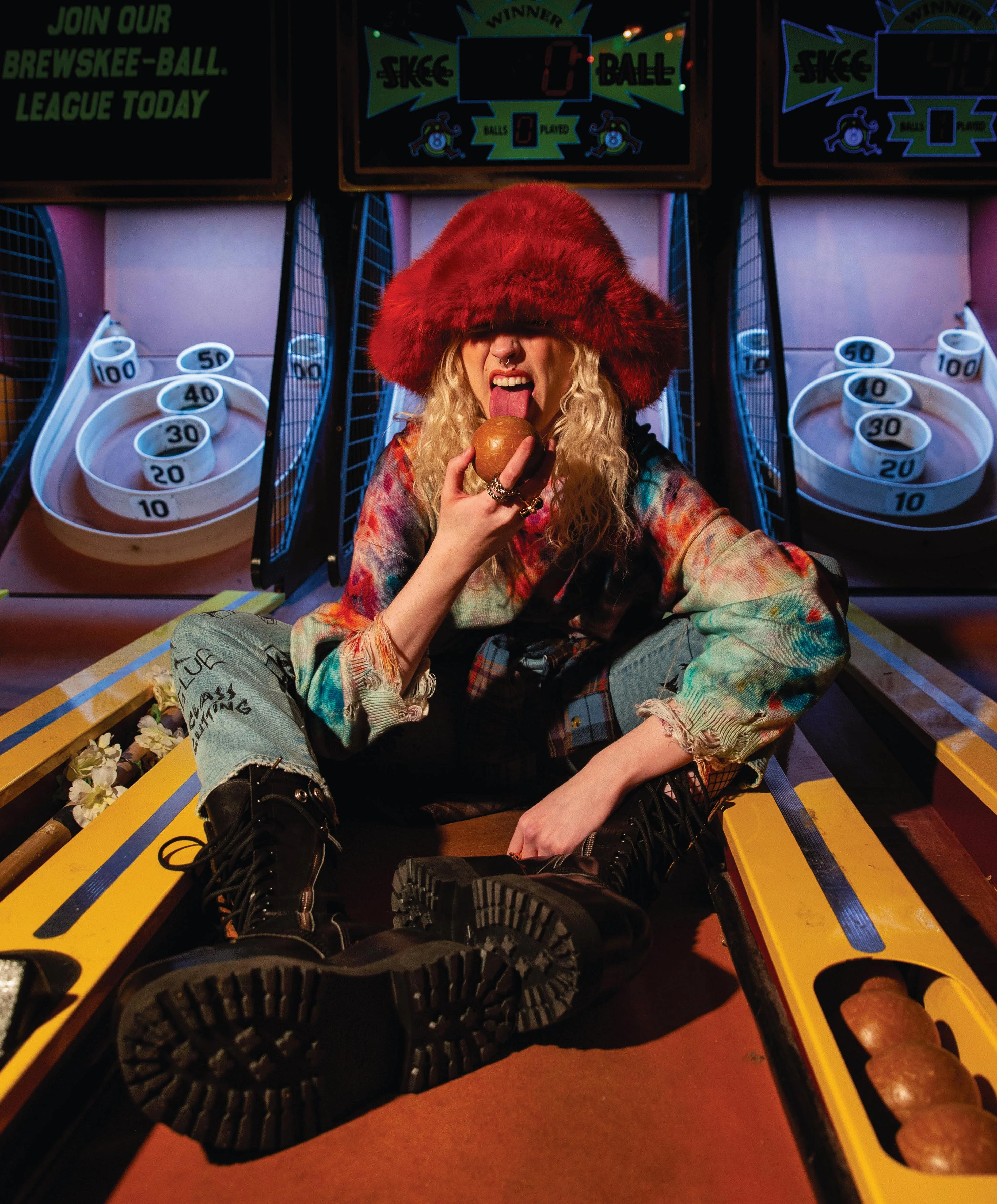






























































Many of the companies featured in this issue for their sustainability efforts are based in Turkey. Most of the interviews were conducted before the 7.8 magnitude earthquake in February devastated southern and central Turkey and northern and western Syria. At press time, the death toll had exceeded 53,000.
There are no words for a catastrophe of that magnitude. A generic “how are you?” written to Turkish denim friends over email or social media can feel performative against that depth of grief and the years of rebuilding that stands before the country. One such friend drew a map for me to understand where denim companies were in proximity to the destruction. Though the drawing doesn’t even touch on their networks of farmers, suppliers, educators and customers who’ve been affected by the quake, it magnified how this is an industry where everyone knows everyone.
Support—be it messages exchanged over DMs or industry-wide efforts like Denim Donates and Kingpins’ Community Voices video project—is something that the denim industry excels at. There is a sincere warmth and humanity in this business, born from the shared experiences and relationships that carry over from one job to the next.
If you’re lucky, colleagues do become a pseudo-family—perhaps the know-it-all brother or pain-in-the-butt sister you never had—nevertheless, someone who always has your back at the end of the workday and with no genetic obligation to do so. That familiarity with one another, I believe, is especially evident across the denim sector, from a factory floor to an office on Eighth Avenue. It is the secret sauce behind some of its greatest collaborations, businesses and brands, and it is often a source of comfort and laughter during the most challenging moments.
Let’s continue to be present for each other.
Angela Velasquez Executive Editor, Rivet
Peter Sadera Editor in Chief, Sourcing Journal
Jessica Binns Managing Editor & Technology Editor
Vicki M. Young Executive Financial Reporter
Jasmin Malik Chua Sourcing & Labor Editor
Kate Nishimura Features Editor
Glenn Taylor Business Editor
Matt Hickman Business Reporter
Alex Harrell Staff Writer
Lauren Parker Director, SJ Studio
Sarah Jones Senior Editor, Strategic Content Development
Andre Claudio Staff Writer, Strategic Content
ART DEPARTMENT
Tirso Gamboa VP, Creative, Fairchild Media
Ken DeLago Art Director
Libby Groden Associate Art Director
Arani Halder Senior Designer
SOURCING JOURNAL ADVERTISING
Edward Hertzman Founder & President, Sourcing Journal & Rivet
Executive Vice President, Fairchild
Rebecca Goldberg VP, Strategy & Business Development
Eric Hertzman Senior Director, Sales & Marketing
Deborah B. Baron Advertising Director
Allix Cowan Manager, Audience Development
Darren Dort Media Coordinator
Sarah Sloand Executive Sales Assistant
Lisa Nusynowitz Sales Assistant
PRODUCTION
Kevin Hurley Production Director
John Cross Production Manager
Therese Hurter PreMedia Specialist
JAY PENSKE CHAIRMAN & CEO
GERRY BYRNE VICE CHAIRMAN
GEORGE GROBAR CHIEF OPERATING OFFICER
SARLINA SEE CHIEF ACCOUNTING OFFICER
CRAIG PERREAULT CHIEF DIGITAL OFFICER
TODD GREENE EVP, BUSINESS AFFAIRS AND CHIEF LEGAL OFFICER
PAUL RAINEY EVP, OPERATIONS & FINANCE
TOM FINN EVP, OPERATIONS & FINANCE
JENNY CONNELLY EVP, PRODUCT & ENGINEERING
DEBASHISH GHOSH MANAGING DIRECTOR, INTERNATIONAL MARKETS
DAN OWEN EVP, GM OF STRATEGIC INDUSTRY GROUP
DAVID ROBERSON SENIOR VICE PRESIDENT, SUBSCRIPTIONS
JESSICA KADDEN SENIOR VICE PRESIDENT, PROGRAMMATIC SALES
JUDITH R. MARGOLIN SENIOR VICE PRESIDENT, DEPUTY GENERAL COUNSEL
KEN DELALCAZAR SENIOR VICE PRESIDENT, FINANCE
LAUREN UTECHT SENIOR VICE PRESIDENT, HUMAN RESOURCES
MARISSA O'HARE SENIOR VICE PRESIDENT, BUSINESS DEVELOPMENT
NELSON ANDERSON SENIOR VICE PRESIDENT, CREATIVE
RACHEL TERRACE SENIOR VICE PRESIDENT, LICENSING & BRAND DEVELOPMENT
• One of a Kind Eco-Conscious Innovation
• >99% Biodegredable*
• Effective for Synthetic Fibers
• No Textile Waste Any More
• No Limit for Elasticity Level
• After Biodegration, There is No Toxicity Problem for Planting in the Soil**

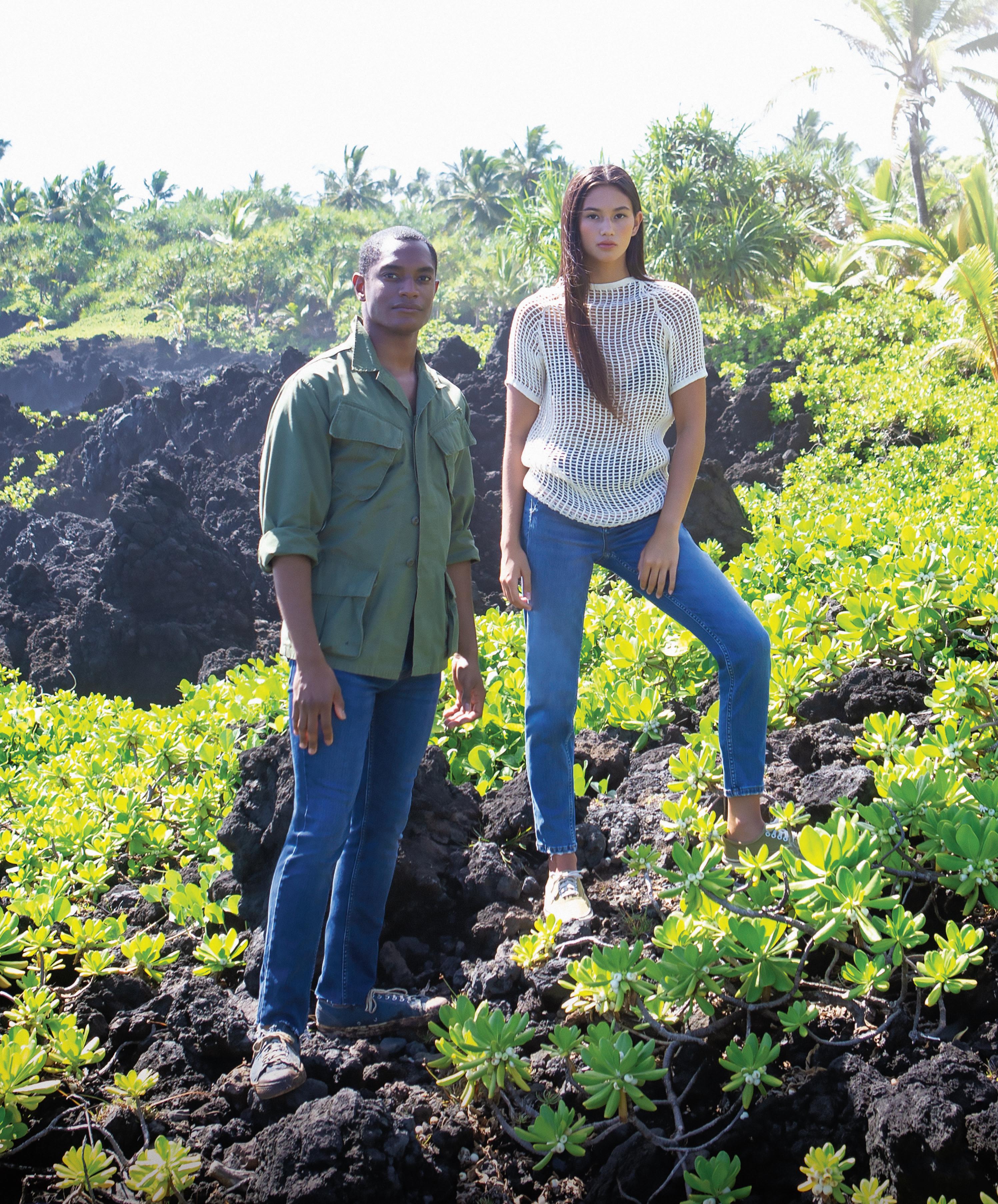
* Standard Test Method for Determining Anaerobic Biodegradation of Plastic Materials Under High-Solids Anaerobic-Digestion Conditions (ASTM D5511-18)
** Testing Under the Standard OECD 208
THE RIVETING LIST
The latest news from denim brands.
LUCKY IN VEGAS
Meet the winners of the Rivet x Project Awards.
CULTURAL FORCE
Hip-hop fashion is in the spotlight as the genre celebrates 50 years of influencing youth culture.
PANTS ON FIRE
Cargos, chinos and trousers are enjoying a moment in the spotlight.
DESIGNER CHAT
Five designers dish on what’s next for Fall/Winter 2023-2024.
RUNWAY REPORT
From wide-leg jeans to suiting, denim’s versatility was on display at fashion weeks around the globe.
NGUYEN INC T-shirt over a HEAVEN BY MARC JACOBS mohair sweater; MOSCHINO tartan skirt over CLOSED jeans; R13 boots; PLAYBOY choker; MARA SCALISE cuff ring; SARA SHALA link ring and ring with diamonds; BOUNKIT turquoise ring.

34 58 64
14 22 46 50 54 RIVET NO.19 SPRING 2023 4
NEVERMIND
Grunge fashion is back with a Gen Z twist.
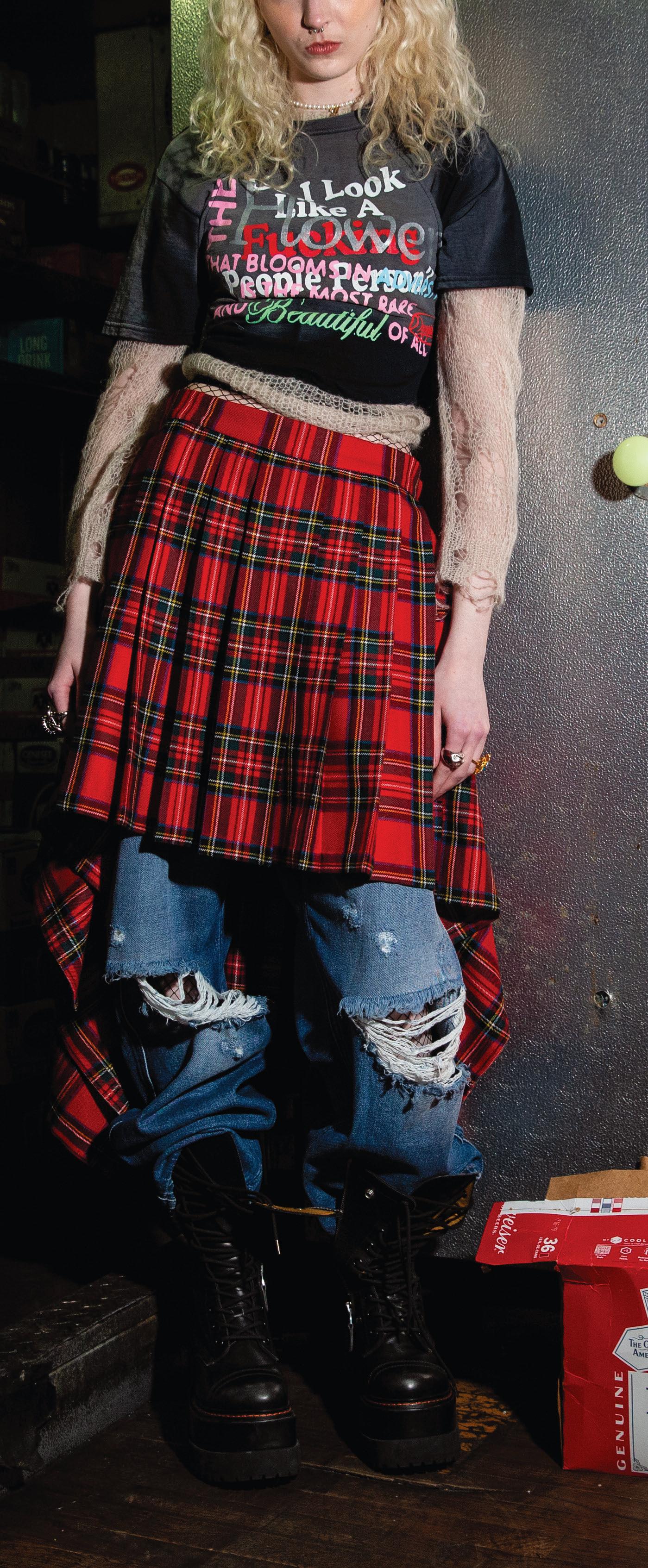

TRASH TALK
The quest for biodegradable jeans stirs up new certification requirements and greenwashing concerns.
NATURAL LIMITS
Natural dyes have the potential to become part of the denim industry’s sustainable toolbox.
The Pakistan Accord will afford the industry an extra layer of credibility and assurance, but it also comes with a new set of challenges.
GLOBAL COMMUNITY
The denim industry rallies behind Turkey following devastating earthquakes.
IN FRAME
Frame looks back at a decade of dressing women in a new book.


















Reworked denim from past seasons is the focal point of Swedish fastfashion retailer Gina Tricot’s new collection called “Seams Like New.” Spanning tops, bottoms and accessories, the collection was produced in cooperation with XV Production, a Swedish studio focused on textile design and sustainable production. The garments were made at XV’s Borås micro factory, close to Gina Tricot’s corporate office.

Style-wise, the collection hits on the buzziest trends. It includes a strapless ruffle top, rigid wide-leg jeans, a washed gray vest, cargo jeans and a pieced maxi skirt. Denim legwarmers cut from jeans legs and featuring pull tabs are the collection’s wild card. The legwarmers sit over shoes, creating a denim boot effect. It also offers denim rosettes—a nod to the early 2000s Carrie Bradshawapproved accessory that has been making a comeback as of late.

Silver Jeans Co. expanded Infinite Fit, the multi-size jeans concept it launched for women in 2021, to the men’s side of the business. The brand likens the jeans to a rubber band that stretches but snaps right back into place. The bottoms—an athletic skinny and a relaxed straight leg—are made with “super power stretch” denim fabric that provides more than 90 percent elasticity. This means the jean flexes to fit a variety of body sizes while maintaining its shape. Like its women’s counterpart, Infinite Fit offers men simplified letter sizing. Each size fits up to two waist sizes. Size small is suited for 29-30; medium sizes 31-31; large sizes 33-34; XL sizes 35-36 and XXL sizes 37-38.
Collaborations continue to be a source of newness for Wrangler The heritage denim brand and guitar manufacturer, Fender, have come together to launch a second collection that honors the “bridge between music and fashion” through stage-worthy denim and guitar accessories.
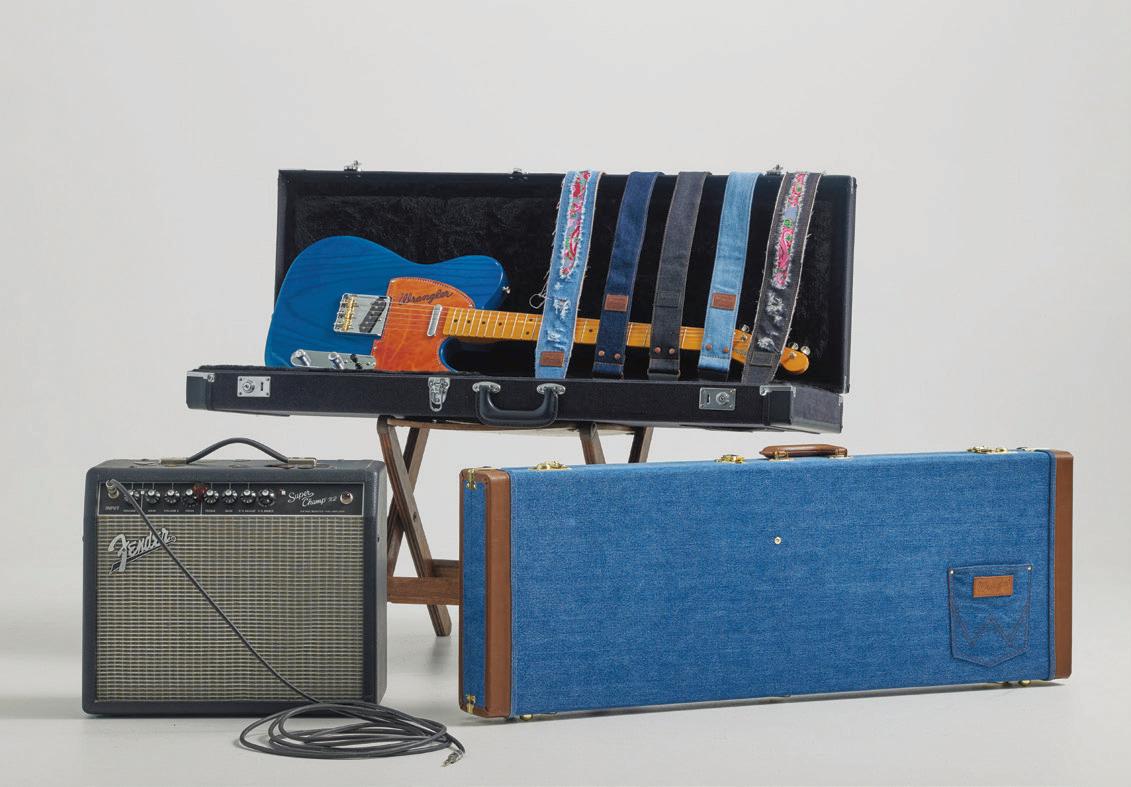
The first collaboration launched last April, offering denim staples and graphic T-shirts infused with rock ‘n’ roll and Western elements.
Wrangler x Fender 2.0 resurrects the bestselling men’s jacket featuring the Fender logo across the back.
New to the collection is a men’s leopard print corduroy western shirt and collage-print long-sleeve tee with distressing. The women’s line spotlights bold patterns and washes, as well as a black corduroy catsuit, silver coated flare jeans and leopard print jeans. Additionally, the collaboration brings a variety of men’s and women’s graphic tees, denim jackets and vests.
An assortment of guitar accessories is new to the partnership. A 3-ply hardshell guitar case is wrapped in Wrangler denim and is finished with the brand’s iconic pocket design. There’s also a set of co-branded 351 shaped guitar picks and a range of gold-stitched denim guitar straps.
Levi’s and Stüssy apply a new approach to logomania in their latest collaboration.
The Californian brands released a denim capsule collection featuring an embossed Stüssy and Levi’s motif that riffs on a traditional button shank design. The tactile logo is prominent on the back of a Type II Trucker jacket and on the front left and back right legs of 501 jeans.

The 501 jean comes in a rugged, worn indigo wash and an original fit jean cut with a straight leg, 5-pocket styling and button fly with co-branded shanks. A custom co-branded back patch combines Levi’s Two Horse Pull and Stüssy logos. To commemorate the 501’s milestone, the Stüssy x Levi’s 501 includes a special edition pocket bag print and anniversary pocket flasher.
The Type II Trucker jacket comes in the same wash and has a modified fit with a boxy body, relaxed armhole and added welt pockets. The jacket is supped up with a corduroy collar, co-branded button shanks, Baja-inspired pocket bags that nod to Stüssy’s So-Cal roots and inside lining with the surf brand’s eight-ball logo printed. ➝

Denim is the latest addition to the effortlessly cool uniform forged by La Ligne, the direct-to-consumer women’s ready-to-wear label known for modernizing Breton stripes.

The collection, available in sizes 23-34, includes the Molly, a vintageinspired rigid straight high rise in a dark and medium wash; the Valerie, a stretch slim fit in black and indigo that feels like second skin; and the Meredith, a semi-stretch cropped flare in cream and black made with 20 percent recycled cotton.
All La Ligne jeans have a vegan leather back patch, and in a nod to its signature striped tops, feature a singular, linear contrast belt loop. The jeans retail for $195 and are available exclusively at La Ligne stores and on the brand’s website.
Mother launched a collection that pays homage to David Bowie’s otherworldly Ziggy Stardust, the late musician’s alien rockstar alter ego and stage persona in the early ’70s.

“As a brand rooted in the experiences of growing up in the ’70s, the opportunity to design with the imagery and iconography of The Ziggy Stardust era felt like a full-circle moment,” said Tim Kaeding, Mother creative director and co-founder.
The collection is built around vintage-inspired concert T-shirts, tanks and sweatshirts. The tops feature glittery fonts and marquee-inspired graphics, which set the tone for the collection’s iconography. A cropped raglan cardigan features Bowie’s name on the back and his signature lightning bolt motif on the arms. The collection’s hero piece is the Super Cruiser flare jeans with gold stars and “The Jean Genie” printed across the backside.
Diesel launched Rehab Denim, a capsule collection that incorporates scraps from Diesel’s own cutting waste into the manufacturing process. Made in partnership with Spanish mill Tejidos Royo, each garment blends 100 percent recycled cotton and recycled elastane from pre-consumer waste with Tencel lyocell with Refibra.


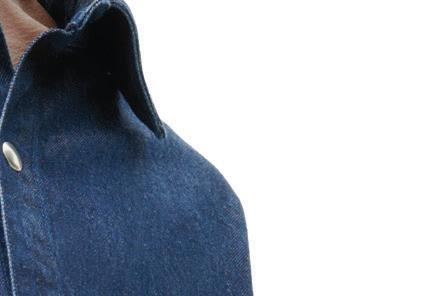



Tejidos Royo’s Dry Indigo technology adds further environmental benefits. It eliminates water consumption from the dyeing process and reducing the amount of chemicals and energy used.
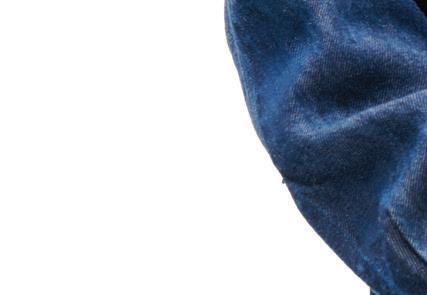

Rehab Denim features three washes: Fade Out, Bleach and Shadow, which combines indigo with gray. The men’s, women’s and all-gender silhouettes include “monster” cargo pants with a toggled waist, an oversized bomber jacket and a zip-up Trucker jacket. Jeans include a lowrise straight fit with “deconstructed trompe l’oeil” details and raw edges.



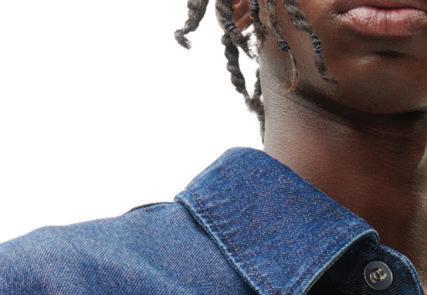
Brand-slash-innovation

Pangaia introduced Renu, jacket the first denim completely NuCycl, Seattle-based rm now-trademarked





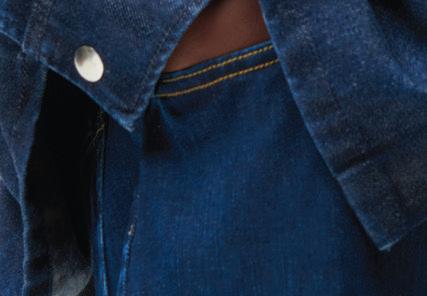


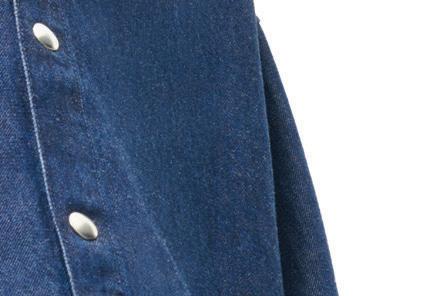



Brand-slash-innovation platform introduced Renu, a $400 oversized that is the first denim product derived from Seattle-based textile recycling firm Evrnu’s now-trademarked lyocell fiber.


Evrnu uses post-consumer textile waste, down at a polymer them filaments that and in terms of tenacity The resulting recycled into or better quality same closed-loop up to five times. material is completely exhausted, it biodegrade, returning to the ground technical nutrient.
Evrnu uses a mix of pre- and post-consumer textile waste, chemically breaking them down at a level before re-extruding them into filaments that outperform polyester and nylon in terms of tenacity and strength. The yarn can be reinto fibers of similar or better using the same process up to five times. When the material is it will returning to the as a nutrient.
Renu, which debuts as part of Pangaia the brand’s arm, is the start of the companies’ ambitions. The however, is up
The fiber is churned out in the 1-to-5 metric ton range at Evrnu’s labs in New Jersey and from where it heads to to be spun into yarn, and then to to be woven into cloth and stitched into garments. Evrnu is to ramp things up with a commercial-scale in North Carolina, which is set to open in of 2024. ●
Renu, which as part of Pangaia Lab, the brand’s experimental only the start companies’ ambitions. The challenge, is scaling up NuCycl. The fiber is currently being churned 1-to-5 metric Evrnu’s labs in Washington, to Turkey to be and then to Portugal into cloth and Evrnu is looking with a commercial-scale facility in North Carolina, in the middle
Chosen for beauty, function and feel.



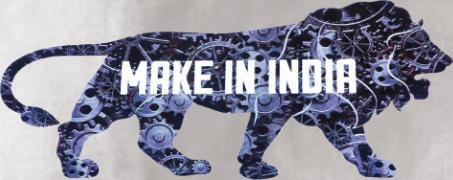




 MATT HICKMAN
MATT HICKMAN
ON JAN. 5 1948, three years after U.S. Marines raised the American flag on Iwo Jima and 21 years after he began manufacturing his apparel line in the Catskills Mountains of New York, Louis Rosenstock, himself a veteran of World War I, launched Devil-Dog Dungarees. Buoyed by the slogan “Tough as a Marine!” the dungarees honored the fortitude and sacrifice of America’s original armed forces.
“World War II had just ended and everyone was feeling very patriotic,” said Jeff Rosenstock, Devil-Dog Dungarees president and the grandson of the company’s founder. “A pair of jeans stood for durability and comfort and my grandfather wanted to name it after the Marines and the armed forces who fought so bravely in World War II.”
The term ‘Devil-Dog’ traces its origins to World War I when German forces were recorded as referring to U.S. troops racing up a hill as “Teufel Hunden,” or DevilDogs as they were being fired upon by fighters crawling on all fours while wearing masks to protect against mustard gas attacks.
The Marines have worn the nickname proudly ever since, but four years after the launch of the brand, Louis Rosenstock moved the company from New York to Zebulon, N.C., and for reasons the company president isn’t sure of, dungarees disappeared from the Devil-Dog line sometime later that decade. In 2019, the younger Rosenstock decided it was time to bring them back as part of a full-
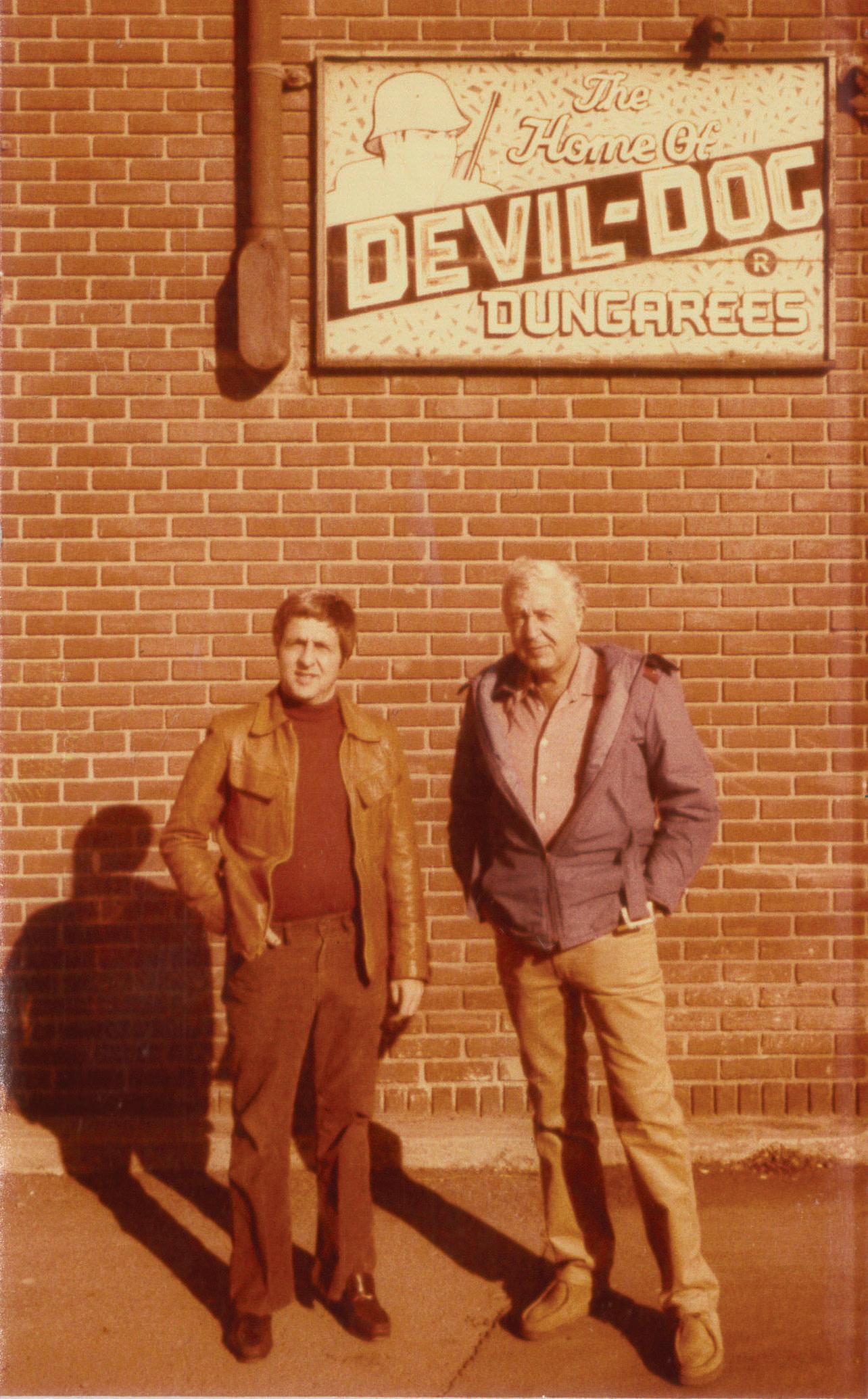
scale line complete with shorts, pants, polos, hoodies, crew neck, denim shirts, hats, leather goods, wallets—a “whole men’s lifestyle brand that’s really centered around denim,” Rosenstock said.

To celebrate its 75th anniversary, Devil-Dog Dungarees is donating $125,000 of sales from the yearlong effort to the Wounded Warrior Project, a Washington, D.C. nonprofit serving veterans and active service members. In 2021, the company donated $25,000 to the charity. It also released 75 limited-edition selvedge jeans made with fabric sourced from Louisiana-based Vidalia Mills. The fabric is made on American draper shuttle looms rescued from the Cone Denim’s shuttered White Oak plant in Greensboro, N.C.
The jeans, which were the brand’s first to made in the USA in decades, sold out the same day they went live. Nicaragua and Honduras are home to DevilDog’s near-shore production plants and all of its denim comes from Mexico, Rosenstock said.
To commemorate that staying power and perhaps to leave a light on for the return of denim manufacturing to the Carolinas, Rosenstock decided to celebrate 75 years by having the iconic neon sign atop the Zebulon headquarters re-lit.
“The response has been really incredible across the board,” Rosenstock said. “Customers are drawn to the name for obvious reasons, and some are drawn in through the Wounded Warriors cause, which is an incredible cause, and some people want to give it a shot. A lot of people are discovering us out there on their own and are really enjoying the comfort of the jeans.” ●
RETAILERS AND BRANDS gathered at Project Las Vegas in February to take stock of what’s next in denim. There, Rivet executive editor Angela Velasquez selected the best in Fall/Winter 2023-2024 denim across six categories: Best Women’s Collection, Best Men’s Collection, Editor’s Choice, Best New Brand, Best Collaboration and Best Sustainable Collection.

The Rivet x Project Awards highlight the various ways brands approach winning designs this year. Some pay homage to the classics and design for longevity, while others focus on offering consumers variety to help them find their perfect fit.
Congratulations to the winners.
♦Nudie Jeans is challenging the traditional seasonality of fashion collections and the number of SKUs a brand needs to succeed. Known for its organic cotton denim and classic fits, as well as its repair and takeback initiatives, the brand showed a video that explained its strategy to “create tomorrow’s vintage” and the questions about the effectiveness of sustainable capsule collections. Are capsules an attempt to clear consumers’ consciouses than reduce the industry’s impact on the environment? Does the frequency of sustainable capsule encourage consumers to discard clothing to buy more?
Nudie’s aims to slow down consumption with a F/W 2324 assortment that has the eccentricity of a vintage shop. Nothing matches exactly yet pieces go with one another. Key denim items include the Dry Onyx Selvedge jean that mirrors the slim/straight fit of a jean from the 1950s. A heavy indigo selvedge jean is washed down so the wearer doesn’t have to go through the process of breaking them in. The bottoms pair with pieces that have a retro twist, including a padded Buffalo check jacket, a black leather jacket with zipper pockets and a rodeo shirt with rabbit embroidery.
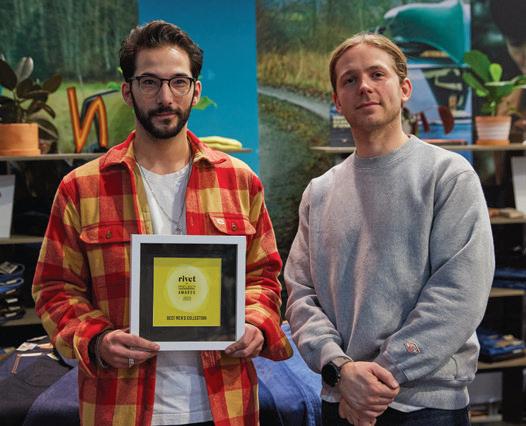
Small but meaningful steps add up to big wins for Mavi on its sustainability journey.
All Blue products—garments that follow Mavi’s sustainability strategy that encompasses people, planet and products— account for 83-84 percent of the brand’s Spring/Summer 2023 collection in the U.S. and the brand anticipates it will be larger for F/W 23-24.
Helping Mavi’s efforts is Recycled Blue, a new women’s jeans collection that incorporates Tencel with Refibra technology. The technology gives a second life to pre- and post-consumer cotton textiles (which would otherwise be sent to landfills or incinerated) by upcycling them. These scraps are mashed into cotton pulp and then mixed with wood pulp, a renewable raw material sourced from sustainably managed forests. The closed-loop process uses 95 percent less water to produce than conventional cotton, Mavi reported. For this collection, Mavi blended the Tencel with Refibra with recycled cotton, resulting in jeans that have a vintage look with a soft handle.
Other sustainable stories in the F/W 23-24 collection include Pro Dark Tech, a rinse wash jean made with recycled polyester that doesn’t fade, an organic cotton selvedge jacket and jeans for men, and the continuation of clay-dyed jeans and shackets for men and women.
Fashion icons are made in arena sports tunnels and Hudson wants in on the action. The brand teamed with Brandon Williams, a celebrity stylist with a clientele of some of NBA, MBL, and NFL’s most fashionable athletes, to create a capsule collection of elevated denim streetwear.
The F/W 23-24 co-branded range centers on coordinates and wide bottoms. A boxy navy blue work shirt matches navy cargo pants with bungee cord hems. A vegan leather jacket coordinates with cargo pants. A cream knit top matches knit bottoms with released hems for a bootcut effect.
Standout denim pieces include super wide-leg jeans, available in dark indigo and vintage washes.
Variety is the spice of life and it’s also one of the reasons why consumers keep coming back to Liverpool Los Angeles. The brand, known for offering standard, petite, tall and plus sizing, launched in 2012 when the women’s market was ruled by skinny jeans, but Liverpool learned how to evolve with its clientele. While the “death of the skinny has been overblown,” according to a rep, “nothing too tight” is having a moment in the spotlight.
Liverpool’s F/W 23-24 collection sees the introduction of the “not-so-skinny” skinny, its “cool-girl” take on a straight/ slim jean available in high and regular rises. The brand also touts a variety of inseams.
“The seasonality of inseams is changing,” a rep said, adding that full-length, crop and ankle sell year-round.
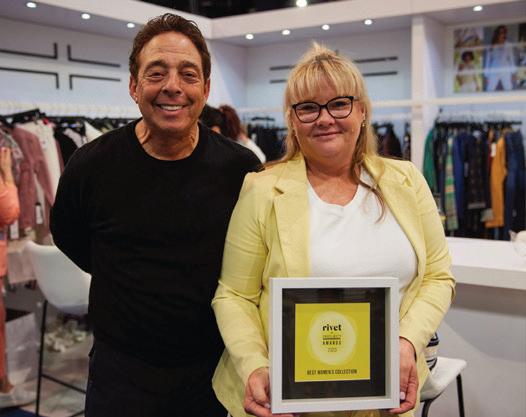
After a slow start, girlfriend jeans and boyfriend fits are breakout stars. The latter satisfies the demand for relaxed and slouchy fits that feel vintage. Liverpool’s boyfriend jean is designed with a buttonfly and larger pockets, however, it is introducing its first zipper version for F/W 23-24. The brand ships them cuffed for styling, but not tacked.
Black and gray, raw hems and clean dark washes with minimal destruction round out the denim collection. The bottoms are complemented with garmentdyed tops and belted shackets— items that allow consumers to play with the new proportions instigated by the variety of denim that currently exists.
♦Celebrities like Halsey are not the only ones noticing Los Angelesbased Noend. The four-year-old label’s deconstructed approach to fashion denim caught the eye of buyers in its first time exhibiting at Project as well.
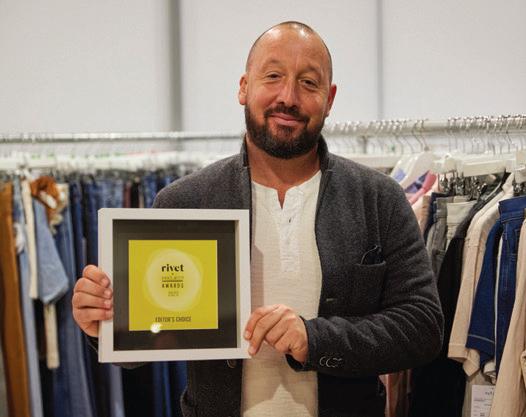


Made in L.A. with fabrics sourced from Turkey, Mexico and Japan, Noend balances women’s classic staples with the unique patchwork and pieced garments that denim fans love. A collection of skirts is made with patchwork denim, resulting in a mashup of washes and handkerchief hems. Jeans are pieced with various washes spanning bright indigo to bleached-out denim and a strapless top with a zip-up front is made with bands of different color denim.
Meanwhile, twill jumpsuits in utilitarian colors, denim jumpsuits with an ultra-soft vintage hand, flare jeans and high rise straight crop jeans are among the brand’s most wearable and versatile pieces.
Joe’s F/W 23-24 collection for men and women is an example of how denim plays nicely with other fabrications. For men, the brand expanded its assortment of Air Soft, a line of French terry jeans that combines the comfort of loungewear with classic 5-pocket styling. The concept soft launched in S/S ’23 with core indigo washes. Gray and rust red are new for fall.
Washed cargo pants in green and gray, brown-tinted jeans and washes with dimension add interest to men’s bottoms without relying on destruction and echo the market-wide shift to cleaner looks. The bottoms are complemented by a cozy chore jacket, a corduroy varsity jacket in earth tones, a suede Trucker and a suede shearling coat.
The cropped bootcut Callie and the wide-leg Mia are part of Joe’s coated denim story for women. The brand offers the Mia with a 34-inch inseam for a long and fluid fit. Indigo and rust versions of the Mia have pintucking on the front for a retro nod. A cropped Mia is also available in vegan leather. The leather alternative is also featured as a short trench coat, puff-sleeve blouse and dress with a knotted front.
A golden rod corduroy blazer and flare trousers are Joe’s coordinates of the season. Details like split hems and shiny gold hardware give the matching pieces an editorial edge. Dark rinse cargo jeans, black cargo trousers and rigid denim with a soft brushed surface round out the versatile collection.
HIP HOP’S humble beginnings hardly hinted that it would grow to see a half-century of cultural influence, but the phenomenon is on display daily. Reaching far beyond music, the movement has developed its own aesthetic language that has permeated fashion, entertainment and the arts.
The current ubiquity of streetwear was preceded by eras of evolving hip-hop-inspired trends— some pulled from mainstream fashion, and others engineered from entirely new ideas. Denim weaved a common thread connecting past and present, according to Elizabeth Way, the Museum at FIT’s associate curator of costume: “Denim, especially jeans.”

By the ’70s, they’d become a staple of youth fashion in the U.S. So, when hip hop got its start, MCs, beat boxers, DJs and B-Boys were clad in blue, Way said. The New York City museum’s spring retrospective, “Fresh, Fly, and Fabulous: Fifty Years of Hip Hop Style,” is an exploration of the movement’s progression and its lasting impact on the way people dress.
Emerging in the South Bronx in 1973, hip hop originated “in a working-class area that was deeply impacted by discrimination, unemployment, and urban redlining,” the curator said. The museum traces the birth of hip hop to a “legendary back-to-school party” held at the apartment building of Cindy and Clive Campbell, also known as DJ Kool Herc, one August evening. From the beginning, “Hip hop kids were wearing the same jeans as young people around the country…but practitioners put their own spin on them,” Way said, from sewing permanent creases into the legs to adorning them with letter patches. Early favorites included Lee, Calvin Klein, and Jordache—“the same brands that were popular in mainstream youth fashion.”
A bona fide hip-hop aesthetic “blew up” in the mid-’80s when widely influential stars and rap groups from LL Cool J to Slick Rick and Run-D.M.C. hit the scene, according to Rolling Stone senior multimedia editor Kyle Rice. “Their music changed the way that people understood
hip hop,” he said. “Because they went so global, people started paying a lot more attention to what these artists were doing, and that included the things they were wearing.” Denim was a constant component of those looks “because it was such a utilitarian product,” Rice said. “A lot of working-class families already had it as part of their wardrobes.”
“Denim has been the fabric of choice for teens and music culture—from rock and punk to disco and hip hop,” Elena Romero, FIT assistant chair of marketing and communications, said. Early acts like Funky Four Plus 1 were known for wearing head-to-toe denim, while Run D.M.C. gravitated to straight leg fits and West Coast groups like N.W.A. donned dark washes and workwear, she said. Over the next 10 years, denim became “synonymous with rappers,” including Biggie Smalls, Tupac, Snoop Dogg, DMX, Jay-Z, Wu Tang Clan and TLC.

The 1990s were a golden era for hip hop and the fashion it inspired, leaving a mark on the industry still visible today. The baggy silhouettes that came to define the decade represented “an innovative change in proportion,” significantly impacting both men’s and women’s styling, Way said.
Founded in 1985, Tommy Hilfiger blended yacht club-prep school chic with Norman Rockwell Americana—an ethos that, on its face, would seem unlikely to resonate with the movement taking shape in urban enclaves. But as hip-hop acts began embracing the brand’s clothing, the label perceived an opportunity to reach a new audience.
Rapper Grand Puba gave the brand one of its first rap shoutouts, referencing his “Tommy Hilfiger top gear” in 1992’s “What’s the 411?” with
Mary J. Blige. The flame was lit. In 1994, Snoop Dogg performed on “Saturday Night Live” in an oversize red, white and blue long-sleeve polo shirt—a watershed moment that led to massive sellouts within a day of the show’s airing, the brand told Rivet.
Two years later, the label launched Tommy Jeans, a line of denim and casual apparel created to appeal to a younger set. Wu-Tang Clan’s Raekwon walked in the collection’s debut fashion show as Q Tip, Mary J Blige and TLC watched on. Tommy Jeans played to the prevailing hip hop denim trend—a mid-wash, roomy fit—adding identifying details that would become iconic, from carpenter loops to red, white and blue motifs on legs and waistbands, contrasting pockets and bold logos. Dungarees, cargo jeans and shorts were soon indispensable wardrobe staples.

It was one of the decade’s young female artists that shot Tommy Hilfiger into the stratosphere. Pop and R&B sensation Aaliyah was chosen as the face of the Tommy Jeans ad campaign in 1996, at the age of 17. Carefree and confident, she played to the camera in a midriff-bearing bandeau top and oversize jeans, sagged to reveal the waistband of her Tommy Hilfiger boxer shorts. The wide-leg, color-blocked, red, white and blue denim with bold graphic lettering became known as the “Aaliyah Jean” after the commercial aired. “I got Tommy Jeans—what else?” she quipped.
“We’re talking about a brand that for so long was catering to a white demographic. To now have this black woman as the face of his product—it was revolutionary,” Rice said of Hilfiger. “Brands weren’t going out of their way to feature black talent because for them, it was a risk factor.” Tommy Hilfiger’s embrace of hip-hop tastemakers “shifted the way people started looking
at the silhouette of denim—how you pair it, how you wear it and what’s interesting about it.”
The designer maintains that music and pop culture have always been his core influences. With the rise of hip hop, rappers became the new rock stars, and he wanted them in his clothes. “Since its emergence, hip-hop made an unmistakable mark on fashion,” Tommy Hilfiger told Rivet. “It drove trends in the ‘90s, as this street style look spread from the U.S.A. to the world. To this day, fashion and hip hop are deeply connected,” he added. “Streetwear evolved from being a subculture into one of the most powerful drivers of pop culture today.”
Other major mainstream brands, like Ralph Lauren, were propelled to greater heights as they were co-opted by hip-hop talents and their fans. But the mid-‘90s also ushered in the era of hiphop moguls—“artists entering the fashion business with their own fashion brands,” Romero said. Chuck D’s Rapp Style International, Russell Simmons’ Phat Farm, Naughty by Nature’s Naughty Gear, Wu-Tang Clan’s Wu Wear, Jay-Z and Damon Dash’s Rocawear, Pharell Wiliams’ Billionaire Boys Club and Ice Cream, Eve’s Fetish and T.I.’s Akoo Clothing were among the ventures launched during this time.


“One brand that was extremely influential was Sean John,” founded by Sean “P. Diddy” Combs, “because it created a space in the mainstream fashion industry for respected artists’ or ‘celebrity’ brands,” Way added. Combs became the first Black designer to win a Council of Fashion Designers of America (CFDA) award in 2004.
Founded by Daymond John, Carlton Brown, J. Alexander Martin and Keith Perrin in 1992 in Queens, N.Y., FUBU grew into the stuff of hiphop legend, grossing hundreds of millions of dollars annually at its peak. Built on distinctive styling and close ties to the music industry, its “focus and origination” stemmed from the desire to create “clothing that was really meant for us—‘For Us, By Us,’” Martin said.
“When we first started our company, we were just kids buying clothing that was available to us from different brands, but none of the brands really fit the way we wanted,” Brown added. “We’d buy the clothes three times larger so they would be baggier.” The founders set out

to develop a line that they, and their contemporaries, would want to wear straight off the rack. “This was a time when there was no ‘urban fashion,’” Brown said.
“It was easy for us to transcribe our thoughts into designs because we were the customer,” Martin explained. “We know what we like to wear. We know why we want to wear it. We know our own sensibilities as far as length, width, shanks, buttons and pockets.”
FUBU became known for its core staples, from brightly colored, heavyweight “FB” logo hoodies to athletic-inspired jerseys, baseball caps and oversized T-shirts. And of course, the jeans—billowing wide-legs in “hard,” rigid, dark denim. “From CAD all the way to production, from the stitching to the details, every little thing mattered, and we had a reason for it,” Brown said. A small stash-away pocket on the inner waistband offered discreet storage—a proprietary feature that the partners pushed as indispensable, even when suppliers balked. “The manufacturer asked, ‘Do you have to have this pocket in the jeans?’ and we said absolutely because we know how important things like that are.”

FUBU’s physical proximity to the borough’s up-and-coming hip- hop artists proved a major boon to the brand, according to Perrin. “We grew up in an area where Run D.M.C., Russell Simmons and LL Cool J lived, and on the Queens side, they were some of our first artists to make it big.” He credits Hype Williams with helping to spread the word about FUBU. Already a prolific director of music videos in the ’90s, Williams worked with “every hot artist out there,” and tipped off the FUBU team to opportunities to get their clothes on the small screen.


“He would call us and tell us, ‘Hey, I’m shooting this person,’ and we’d be on set for 10, 12, or 14 hours a day just to get one shirt or one hat on them,” Perrin said. “Sometimes we got it, sometimes we didn’t, but we got to know a lot of artists in the early days when they were just coming out.”
LL Cool J gave FUBU one of its winningest shoutouts—and in another brand’s commercial, no less. Hired to perform a freestyle in a 30-second ad for Gap menswear in 1999, the rapper slipped in the line, “For Us, By Us, on the low,” while wearing a FUBU cap. The spot blew up, and it took Gap weeks to recognize the unintentional cross-promotion.
Perrin said grassroots, on-the-ground marketing boosted recognition in the early ’90s before FUBU made it onto the backs of the greats. Touring expos and trade shows, the brand racked up orders, and soon demand outpaced supply. John placed an ad in the New York Times seeking financing. In 1996, Samsung’s fashion and textile division said it would help with distribution and
TO THIS DAY, FASHION AND HIP HOP ARE DEEPLY CONNECTED. STREETWEAR EVOLVED FROM BEING A SUBCULTURE INTO ONE OF THE MOST POWERFUL DRIVERS OF POP CULTURE TODAY.” —TOMMY HILFIGER
expansion if the brand could generate $5 million in business over three years. FUBU blew the sales target out of the water within weeks.
































“[Samsung] said, ‘They did what they said we needed them to do—now let’s open up the floodgates,’” Perrin said. “That allowed us to jump out in the market in a huge way.” By 1998, yearly global sales amounted to more than $350 million.















Three decades since its founding, the brand is undergoing a resurgence, fueled by a wave of ’90s and early 2000s nostalgia. The music of the times has come roaring back with a vengeance, from the 2022 Super Bowl LVI halftime show, which featured Snoop Dogg, Dr. Dre, Eminem, Mary J. Blige, 50 Cent and Kendrick Lamar, to the Grammys in February. Music’s Biggest Night celebrated hip-hop’s golden anniversary with a whirlwind of performances that included RunD.M.C., Salt-N-Pepa, LL Cool J, Big Boi, Busta Rhymes, Grandmaster Flash, Ice-T, Nelly, Missy Elliott, DJ Jazzy Jeff and De La Soul.


“I’ve noticed that within the last year there has been a huge uptick in interest, especially from younger kids, 18 to 25,” Brown said. 2022 saw FUBU resurrect some of its famed silhouettes through a capsule with Forever 21. In February, the fast-fashion retailer teamed with hip hop supergroup Mount Westmore—comprised of California-based rappers Snoop Dog, Ice Cube, E-40 and Too Short—on a line of ’90s-inspired merch.
















Brown is relishing the return to classic hiphop styling. “One thing I like that I’m starting to see is Offset and other rappers going for baggier jeans,” Brown said. “We’re actually talking about putting out a couple of older style jeans—more collectible, vintage type jeans,” Perrin added, along with two-piece denim suits.
Martin is eager to see a younger generation breathe new life into the brand, and sees serendipity in todays’ retro renaissance. “I just feel as a company, we’re blessed because we came at the right time,” he said. “We’ve touched a few different generations with one brand, and not too many people can say that.”
Founded 10 years after FUBU in Vernon, Calif., denim label True Religion is also finding itself the beneficiary of renewed interest in Y2K fashion. Breaking onto the scene in 2002 with ultra-low-rise flares, prominent stitching and a happy Buddha logo, the brand made waves with the era’s sartorial sovereigns, from It Girls and heiresses to rappers and R&B artists.
“We had a bold aesthetic, and that was no doubt the reason we were adopted by the hiphop community,” said Zihaad Wells, True Religion global brand creative director. “It was never
a conscious choice by us—we were just doing our thing, and luckily that heads-down, unapologetic attitude that we had resonated with the tastemakers in the hip-hop scene.”
The brand helped usher in an age of premium denim that spawned labels like, Citizens of Humanity and Rock & Republic. A far cry from the practical workwear of decades past, jeans in the early 2000s sold for upward of $200, and were encrusted with crystals and sequins and embellished with patches and distinctive stitching.


“Our stitch denim with the flaps were what really put us on the map within the music community,” Wells said. “The guys were rocking our Ricky with the stitch”—a loose-fitting straight leg—“while women were rocking the lowriders.” Elongated back pockets featured True Religion’s unmistakable calling card—a stitched horseshoe motif.
Throughout the decade, True Religion jeans became “a mainstay style choice” and a status symbol for artists, culminating in the ultimate callout from 2 Chainz in the form of a mixtape dubbed T.R.U. REALigion. “We had seen elements of exposure within the community, but that was the moment it became evident,” Wells said of the 2011 release. “It wasn’t a surprise as much as it was an, ‘Oh right, of course.’”
After that it all clicked—“Legends like Chief Keef, Skepta, and Fergie ran it up and made True Religion a signature within the world of hip hop to this day,” he added. A decade after the mixtape drop, True Religion teamed with 2 Chainz on a capsule collection of apparel and denim. “It’s become part of the DNA—we’re constantly turning to our community of hiphop artists to see how we can evolve our designs,” Wells said. That includes “collaborating with the artists that put us on the map many years ago.”
The brand feted its 20th year in business— and the 10-year anniversary of Chief Keef’s song, “True Religion Fein”—with a denim and streetwear drop last year. In November, it released a women’s collection with hip hop and R&B singer Dreezy, which included a denim trucker jacket, jeans, cargo midi skirt, and a denim wrap top and bustier. “This year we’re cooking up something with a bunch of new hip-hop artists,” Wells added.
The brand is eager to deepen these associations as it works to cultivate a connection with a new generation. “Young people have always looked to artists to see what they should be wearing, and hip-hop artists have looked to the younger generation to see what’s cool,” the designer said.
“Hip-hop has a huge influence on mainstream fashion because of its synchronicity with youth culture,” he added. “It’s all intertwined.” ●
“GIRL YOU WORE THESE JEANS AND YOU MADE A THUG WANT TO CRY SOMETHING TERRIBLE” —GINUWINE “IN THOSE JEANS” 2003 “SHE HAD THEM
JEANS (JEANS), BOOTS WITH THE FUR (WITH THE FUR)” —FLO RIDA
2007 “I'M A TRUE RELIGION FEIN, I GOT ON TRUE RELIGION JEANS”
KEEF “TRUE RELIGION FEIN” 2012 “BUT DON'T I LOOK SO HANDSOME
THESE POLO JEANS?” —MAC MILLER “POLO JEANS” 2014
still love their jeans,but they are also seeking dressier bottom options. Interest in non-denim pants is rising as many consumers return to their pre-pandemic routines of going to work and attending social functions.
According to the New York-based data analytics firm Trendalytics, variations of cargo pants have been a top search item over the past six months. Searches for “parachute cargo pants” rose 6,533 percent over the past six months, while “wide leg cargo pants” were up 138 percent. Searches for “women’s linen pants” rose 70 percent over the same comparable period. Other items that saw increases on the search front were “baggy trousers,” ahead 59 percent, and “wide leg joggers,” growing 52 percent.
Seasonal changes also impacted consumer searches, with many non-denim items performing better in the early fall from August through October. Denim searches typically pick up in late fall and winter from November through January.
“Although we specialize in denim, our customers always love our non-denim options. Since 2021, we have seen a significant rise in our faux leather pants, and we expect this trend will continue through 2023,” said Estelle Dahan, NYDJ vice president of design.
Dahan said that as spring approaches, NYDJ will see a rise in non-denim sales as “those months lend themselves to cooler fabrics with breathability.” During
resort season, NYDJ’s stretch linen offerings are a top seller, available in Bermuda shorts and cropped and ankle pants. “Twill also grows in popularity during the spring and summer because of its classic laidback style,” Dahan said, adding that the fabrication is offered in a variety of styles from Bermuda shorts to trousers.
Comfort and performance fabrications are a key factor in consumers’ purchases, whether in women’s or men’s. Chico’s brand director Suzi Reynolds said customers consistently choose its Brigette pant, which can be dressed up or down and features a 360-degree hidden slimming technology. The pant, available in various lengths, also includes a pull-on waistband to provide all-day comfort.
Over at Chico’s sister brand White House|Black Market (WHBM), seasonality plays a role in whether customers opt for fulllength, ankle and cropped pant lengths. “This preference is across the board in all of our bottoms in both denim and tailored fabrications,” said Julianne Hobbs, WHBM brand director.
She said that while customers are buying denim and nondenim trousers, the brand has seen non-denim bottoms trend faster post-covid. “Trousers have been a staple at WHBM within our customers’ work wardrobe, with a trend into more stretch fabrications and utility details.”
High-rise bottoms are still trending, and Hobbs said there aren’t any major shifts now, although bootcut has become a staple.
Men are also shifting gears and adding more clothing options to their closets. At Tommy Bahama, denim represents nine percent of its men’s business, while “nondenim is growing at 48 percent,” according to Dawn Brandl, senior vice president of men’s design.
Regardless of fabrication, bottoms are currently 25 to 27 percent of the overall men’s business. She said that in the last seven years, Tommy Bahama has added stretch, performance yarns and movement to its five-pocket denim business.
Customers love the “soft hand,” as well as being able to feel comfortable in what they are wearing, she said. The denim business is steady and has grown alongside its knits and woven counterpart in bottoms. “Usually, you don’t have such a strong bottoms business and you see growth in only one area, but [our customers love] what we are giving them,” Brandl said.
When she started, Tommy Bahama’s business was primarily camp shirts and silk pants. Options have expanded to include different wearing occasions. One option that performs well is the Boracay five-pocket jean, a soft and slightly stretchy cotton blend that includes Tencel lyocell. The Boracay is also offered in a flat-front chino in 13 colors. With the non-denim business showing growth, Tommy Bahama is getting ready to introduce a new men’s pant line in August called Harbor Point, a brushed knit pant. Over at Kontoor Brands Inc., chairman and CEO Scott Baxter said during the company’s fourthquarter earnings call in February that its U.S. denim business grew 11 percent in 2022, while nondenim rose 13 percent and now represents 38 percent of its global mix. Both Kontoor’s Wrangler and Lee brands are well-positioned for 2023, according to Baxter. At Wrangler, diversified strategies that include tops and non-denim bottoms now account for over 40 percent of the brand’s business.
While there’s opportunity for Kontoor to expand in categories beyond denim, “We still focus a lot of our demand creation in our consumer platforms around
CARGOS, CHINOS AND TROUSERS ARE ENJOYING A MOMENT IN THE SPOTLIGHT.David Dee Delgado/Stringer

our denim categories, and we will stay laser focused on that going forward,” Baxter said.
Among younger consumers, one fashion item that’s “new” to younger millennials and older Gen Z cohorts is the “pant” category. According to Fran Horowitz, CEO of Abercrombie & Fitch Co. “They’ve never worn them before. And now they’re going back to the office and they’re going out socially,” she said.

A favorite dress-up option among Abercrombie’s women customers is the Sloane tailored pant, an ultra-high rise tailored wide-leg bottom with pleating and a partially elasticated waistband. One fabrication option is a polyester/viscose/elastane blend. Another is a 100 percent polyester crepe. The Sloane is also available in a linen/cotton combination.
Abercrombie’s younger sibling Hollister is seeing teens buying both high rise and low-rise options. While bottoms in cargo and utility options in different fabrications are newer additions to their closets, Horowitz said they still love their denim.
The shift from skinny fits to wider legs is ongoing but Horowitz added that consumers are looking now for cleaner denim looks. “Denim is still a very important category for us. It’s still a fashion category for us,” she said. “There are still some exciting things happening in denim.” ●
DENIM BUYING is entering a new era. While economic anxieties boiled over during the fall, spring represents a clean slate, according to industry insiders. ➝ “2022 was a challenge, for sure—I think everyone was feeling kind of cautious, waiting for this impending recession,” said Jill Gindi, Blank NYC sales director. “But now it feels more cautiously optimistic—I think people have a better outlook for how 2023 is going to unfold, and it’s a fresh start.”
Gindi said the brand noted a pronounced shift in buyer attitudes in January as many retailers closed the books on a frustrating fourth quarter. “I think they’re just turning the page and trying to move forward with a new season,” she said.
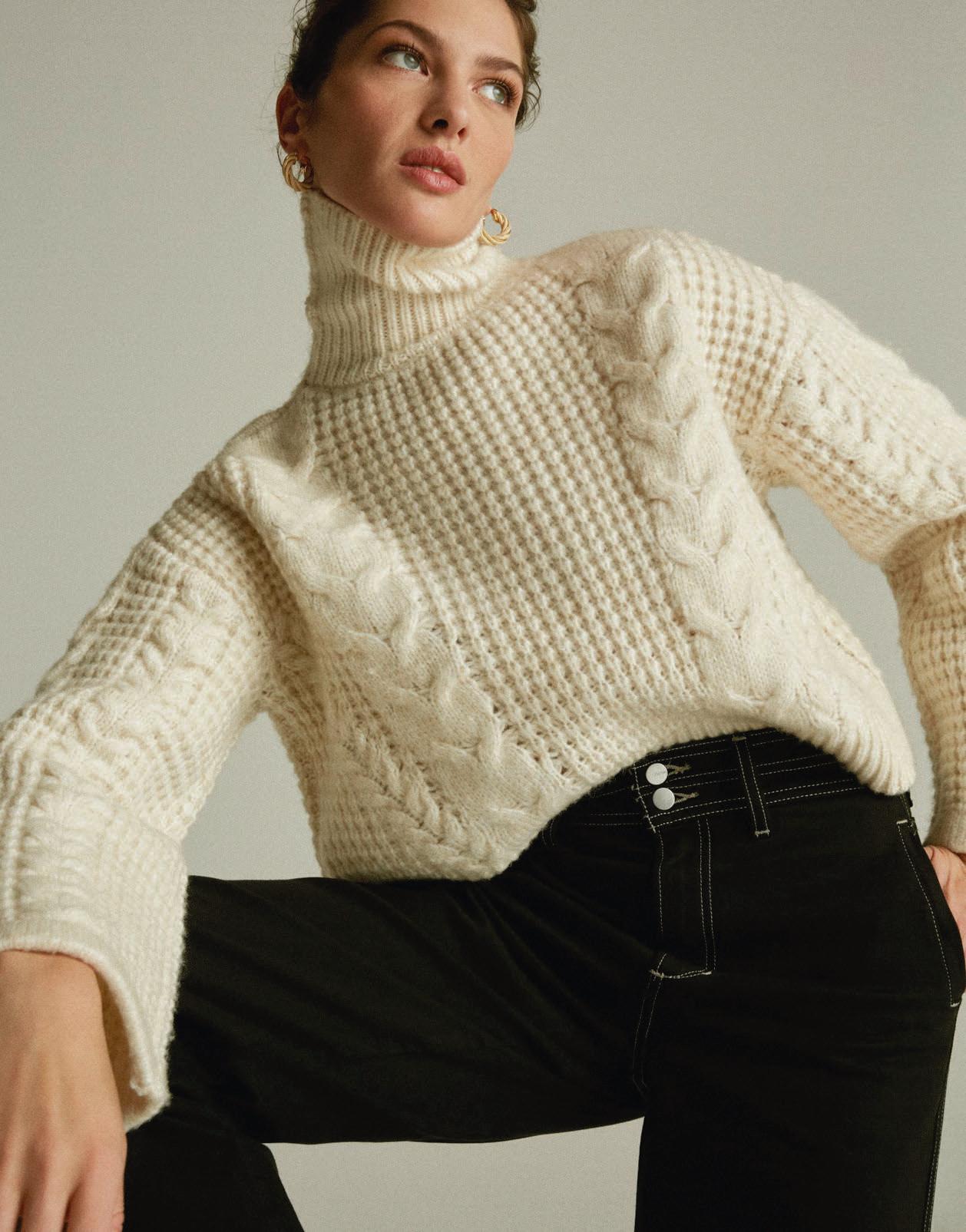
The brand ushered in spring with denim in a buoyant palette of pink, Kelly green and lavender, she said. “Anything with cargo or utility pockets is strong, and in all different iterations,” from small to large. There’s a rebounding interest in stretch and comfort fabrications in light and medium weights, Gindi said. “We’re finding that’s our sweet spot.”
Blank NYC, which sells to department stores, specialty stores, e-commerce and off-price channels, has seen a much more pronounced trend toward buying in-season, Gindi added. “It’s really a challenge for us to make sure that we’re projecting and over-cutting on certain styles that we feel like are going to be strong,” she said. “More are open to buy, and retail is chasing a lot, which is always good.” Social media has also prompted a faster trend cycle, she added.
Price point has played a major role in buyer attitudes and flexibility in 2023, according to Taylor Young, Kut from the Kloth Midwest account executive. The highest MSRPs in the line are $109—up about $10 over the past year with changes to the price of raw materials, she said.
Raising prices was not a decision the brand made lightly. “We’re coming off of our best year ever as a brand,” Young said.
Kut has a history of “doing well during periods of economic hardship,” she explained. During the 2008 recession, the brand’s sub-$100 price point helped it remain accessible. “We didn’t suffer like other premium brands would have, because you could buy an $89 jean and get the top, too,” without feelings of guilt, she said. When a pair of denim costs more than $200, by contrast, the consumer feels compelled to make a practical choice. “It’s a totally different shopping experience,” Young added. Specialty boutiques in communities across the country are driving Kut’s business, underscoring to the brand’s desire to maintain price stability.
Buyers have shown a renewed interest in denim styles that can pull double duty between the office and everyday wear.
“With people going back to work, we’re designing our line more for that customer—a little cleaner, a little less destruction,” she said. Wide legs, full-length flares and bootcuts have sold strongly for fall, all developed in lighter weight, stretch formulations. Prominent seaming and front pleats add visual interest to several styles, along with waxy coatings on dark washes.
“I think covid changed the way we dress, and our expectations for how we
feel when we’re dressed,” said Christine Loule, Liverpool Los Angeles vice president of sales and merchandising. “Comfort continues to drive style,” she said, and “being in sweatpants for two years showed us that we don’t necessarily need to be all tucked in and wearing skin-tight jeans.”
With most styles retailing for around $100, the VP said Liverpool occupies a “sweet spot” for buyers—“the opening price point for premium.” While the
brand feels attainable for a wide range of shoppers, “I think it reads longevity to the customer,” Loule said. Classic styling and quality are high on retailers’ checklists for the upcoming seasons, she added.
While Hudson Jeans is also leading with wide-leg fits, the brand serves a different subset of shoppers willing to spend between $185 and upwards of $500 on a pair of the brand’s jeans. Economic angst has colored some conversations with buyers, but hasn’t stopped them from placing fall orders, according to men’s specialty account executive Sophie Kalb. “There’s been talk of recession, and the fact that over the years, prices have been increasing,” she said.
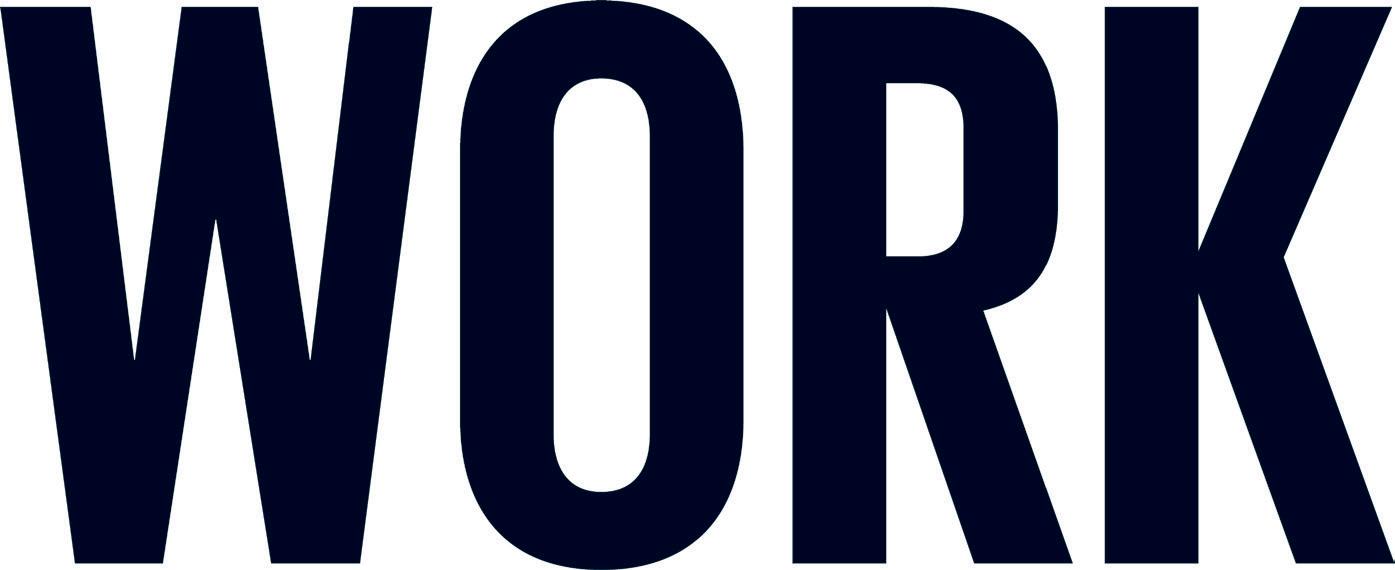
The brand is known as much for its streetwear-inspired styles as its mainstream, contemporary silhouettes. Kalb said that specialty stores in the Midwest, including Detroit, are the largest consumers of streetwear and trend-forward styles replete with fading, distressing, undone hems, workwear details and paint splatters. But it’s the buyers of core styles who are commenting most often on the difficulties of selling luxury denim, Kalb said, despite some reports that 2022 was “their best year ever,” even topping the stimulus check era of the pandemic.


The movement away from skinny jeans persists on the women’s side, according to Paola Garza, Hudson’s women’s specialty account executive. “We’re definitely starting to see a shift towards a wider leg and a higher rise; people want that like baggy look,” she said.
Many retailers already have the brand’s best-selling core styles on order, but specialty stores and boutiques are most likely to buy into trends. “When you get into novelties, that will vary depending on how conservative their store is on trends.”
“Our accounts are really good about knowing what works for them, and they’re sticking to what they know that they can sell,” Garza added. “Every once in a while you can convince a few of them to do something different and take a risk.” If there’s no reward, the brand will work with its accounts to find another fix. “If [a style] is sitting for months, it hurts both of us, so we’ll find a solution and swap out the style for something else,” she said.
Joe’s Jeans also works with retailers to replace stagnant product at the end of the selling season, according to West Coast women’s account executive Lauren Grant. The brand’s buyers are gravitating toward polished, practical styles, she said. “The fashion has definitely slowed down lately.”

“People are accepting a more casual look, but they want to be able to wear their jeans to work,” and are therefore looking for comfortable, versatile fits. Price point is high on the list of considerations for both spring and fall. “Our denim that’s right at or slightly under $200 is definitely retailing best,” she added.
“I think that everybody’s buckling down on their budgets,” added Todd Picciano, director of sales. “I think receipts are being cut to a degree, whether it be majors or specialty stores.” Most premium denim vendors work with their accounts to reconcile products that remain on shelves, he echoed. “At the end of the day, your relationship is a partnership that you build, and you want to make ensure that they’re never stuck with products.”
Retailers are also pushing out the decision-making timeframe to give themselves more runway to gauge consumer demand. “It’s hard to think about six months from now when you’re trying to move inventory now,” Picciano said. “So I think people are buying a little bit closer to season.”
Men’s buyers are gravitating to straight legs and slim-leg straight fits, he added. Cargos and camos remain popular in some markets, but “Denim’s getting clean again,” after a period where jeans where distressing was the norm. “Now, everybody’s gone back to work,” he added. “That’s what they need versatility in aesthetic.” ●
WITH PEOPLE GOING BACK TO WORK, WE’RE DESIGNING OUR LINE MORE FOR THAT CUSTOMER...”
—TAYLOR YOUNG
2023-2024
BY ANDRE CLAUDIO ▲ SAM KU AG PRESIDENT AND CREATIVE DIRECTOR
On F/W 23-24 trends: The biggest denim trend that continues for us through Fall ’23 is playing with proportion. Our design team is especially into a fit called the Kora, which reads like a trouser leg that is relaxed, but not too wide. Additionally, we have a big collaboration coming up for Fall ’23 featuring trousers and cargos with interesting volume and shape.

On balancing sustainability and design: For us, sustainability is something we are mindful of from the start. From the beginning, we consider the fiber content and the mill producing the product. Choices
that we make in the fiber content can result in enormous savings in water usage and harmful chemical reduction. Our facilities for denim manufacturing— which we own—have a water recycling system that saves us approximately 50,000 gallons of water per day. We also use the most up-to-date washing processes, which reduces water and chemical usage.
Our latest sustainability innovation involves us collecting used and lovingly worn AG jeans, which will be recycled into new cotton yarns and turned into new, recycled denim. The cotton used in the recycled product will be 100 percent recycled content, including the stretch component. There has been a lot of progress on the sustainability front in the past few years, and it’s exciting to see all facets of the garment manufacturing process improve in this respect.
On what I want to see more of from the denim industry: If all facets of the denim industry continue to strive to be more sustainable, I think we’ll get to a good place.
On finding inspiration: For fashion, I love shopping for vintage clothing. Non-fashion stuff, I am interested in automobile design. I think it’s fascinating to see what design decisions have been made, and how they all work together to complete a vehicle. In a way, there are a lot of similarities between the two.
LOOSE FITS, vintage influences and signature styles collide in Fall/ Winter 2023-2024 collections. And without compromising design, sustainable sourcing is becoming an even bigger part of the story as brands make responsible fibers and water-saving washes a part of their DNA.
Here, designers and executives from five leading brands share what’s next for denim.
FIVE
DISH ON WHAT’S NEXT FOR FALL/WINTER

On F/W 23-24 trends: We see women wanting to get dressed up with their denim this fall. Vibrant reds, indigo washes and sophisticated, cleaner rinse washes—that pair nicely with black—are key.
We also see fits evolving beyond the classic straight-leg camp—which has dominated for the past few years—to more exciting and animated silhouettes. For women, we see lower rises in flared and baggy silhouettes as the biggest fit trends for Fall ’23. For men, we see a growing interest in baggier fits and more relaxed rises.
On balancing sustainability and design: Sustainability is rooted in every step of our design process. One of the biggest areas in which we can make an impact as designers is through the selection of our materials and development of our denim washes.
We’ve conducted thorough research to narrow our fabric list to the best combination of sustainable fibers—including organic cotton, regenerative cotton and Tencel—along with performance and versatility. We

always aim to keep these fabrics in rotation to avoid waste from unused inventory and extraneous fabric development at the mills. In fact—toward the beginning of each season—we’ll visit our team of experts at our laundry facility to use the most sustainable wash methods possible to achieve our wash direction. Fortunately, washes are trending cleaner and darker, which tend to be relatively less impactful to the environment.
On what I want to see more of from the denim industry: With sustainability being at the forefront of conversation within the denim industry, I’m interested to see where brands take their efforts in 2023 and beyond.
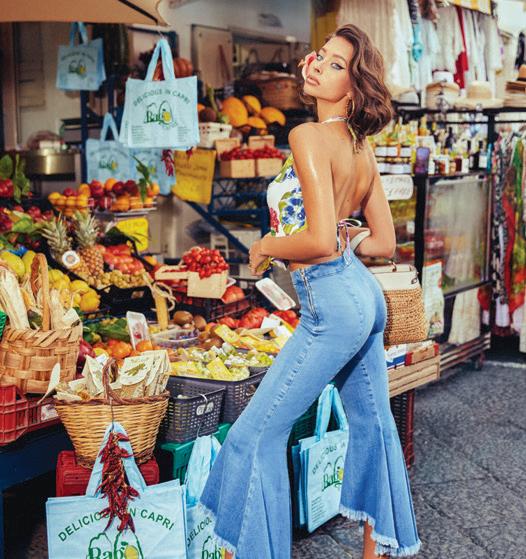
On finding inspiration: I find traveling to new places the best source of inspiration. There’s nothing that can quite compare to the experience of seeing how people dress in an unfamiliar place, as well as how I decide to pack and dress in that new setting that can spark ideas.
▼ SARAH AHMED DL1961 CEO AND CO-FOUNDER

On F/W 23-24 trends: We still see steady growth in both sectors with straight legs, wider fits and an emphasis on vintage-inspired washes. You can see this shine through in our collections because we made our denim look and feel as if they are a pair you’ve owned for years. For women, we’re leaning into the ’90s and Y2K resurgence with lower rises, slouchier fits and denim skirts of all lengths. Plus, we’re reintroducing leather into our women’s line and a plush new corduroy in our men’s line. We also developed a new fit for men’s—a familiar straight leg that looks like we pulled it right out of the ’90s. In either case, we are looking to the past for inspiration but updating the techniques, fabrics and more for the modern day.
On balancing sustainability and design: Sustainability is at our core. We are vertically integrated, which allows us to keep tighter control of the entire design and manufacturing process from fiber to finished garment. We also invest heavily into sustainable technologies—such as ozone and laser—to achieve the vintage and dynamic washes you see in our collections in a manner that is better for the planet and the people who physically produce our denim. Even with fabrications, we use the best materials, such as certified cotton, Recover fibers and Tencel lyocell.
On what I want to see more of from the denim industry: The denim industry is improving, and we want to see this trend
continue. More companies are looking toward sustainable models and methods, but this change isn’t happening fast enough, which also speaks to the fashion industry at large.
On finding inspiration: What makes a good designer is the ability to draw inspiration from anywhere, anything or anybody. Of course, you can be inspired by an underlying theme or message, but the ability to grow, transform or change your perspective showcases that you can break out of your comfort zone and be innovative. Right now, we are inspired by vintage and relaxed past styles, but who knows what will inspire us next—that’s what makes this industry so exciting.
On F/W 23-24 trends: The pandemic made people appreciate comfort, but now there is an increased appetite to look more refined without losing the comfort. Denim is coming back

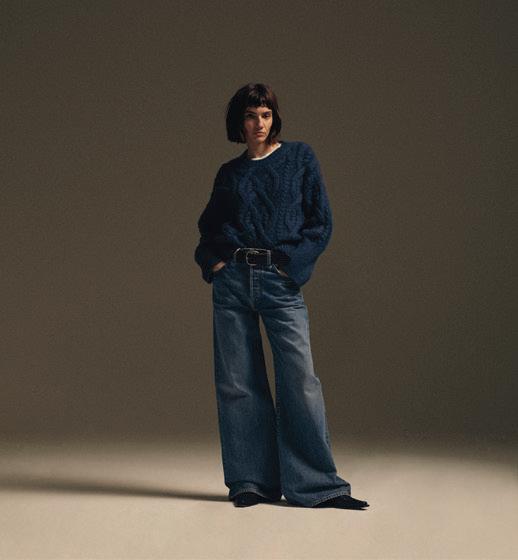
WHO KNOWS WHAT WILL INSPIRE US NEXT—THAT’S WHAT MAKES THIS INDUSTRY SO EXCITING.”
—SARAH AHMEDGUESS COH DL1961
in a big way, and I am very happy about that because this is part of our DNA. We are shifting from a skinny leg to a wider range of fits—specifically straight, bootcut, flares and wide legs. People are gravitating toward looser, relaxed fits, but are also interested in returning to the classic staples of modern dressing with attention to quality and details.
On balancing sustainability and design: Sustainability is an integral part of our values and goals. Specifically, we work directly with mills to ensure we can develop fabrics with sustainable fibers. We look for water-efficient, low-impact indigo innovations such as laser or ozone. When it comes to dyes, we opt for the natural dying process. Our entire organization from top management to design and R&D is very vocal and active in advancing our sustainability programs in all aspects of our product development.
On what I want to see more of from the denim industry: I would like to see brands be more transparent about their sourcing and manufacturing product cycle, focusing less on the marketing aspect of sustainability and more on making a true impact on the manufacturing cycle. We all need to take responsibility and continue to focus on sustainable game-changing innovations to create a real change in the denim industry.
On finding inspiration: Traveling inspires me so much. I always bring back so many ideas after my trips. Art, music and films also inspire me a lot.

On F/W 23-24 trends: More than ever, we are seeing the lines blur for men and women regarding both silhouettes and overarching trends. The popularity of bootcut and flare is growing across both, while seasonally there remains a diverse range of key fits—straight, slim and loose. There is a desire for denim, but the consumer doesn’t want to sacrifice comfort. They expect ease and comfort in innovative yet authentic ways.
Individuality of style has become more important, and one way that shows up is with seasonless dressing. For example, you will see a summer piece paired and layered with other pieces in similar fabrics and tones to create a new expression for winter. It shows versatility and the value of a piece year-round; denim is a perfect vehicle for seasonless dressing.
Consumers also appreciate versatility and quality that will last. Expect to see some of Lee’s most beloved styles—our icons like the Union-All, Rider Jacket and 101 Rider jeans—both in classic and fresh iterations.

On balancing sustainability and design: Lee’s global sustainability program, For a World that Works, helps ensure the integration of sustainability throughout the process from the factories to the products. We have a dedicated sustainability team, and each season we partner with them to identify preferred materials and practices. Having a shift in mindset in everything we do as creators, producers a nd consumers is crucial as we aim toward full circularity in his industry.
One of the key areas we focus on is water savings. Lee has committed to ensuring we continue using less water in the dying of denim. Our Indigood process can save up to 90 percent of water used during dying compared to traditional practices. We increase the use of this process each season.
On what I want to see more of from the denim industry: I’m excited about the renewed appreciation for authenticity and dedication to quality, timeless products and honoring brands’ heritage through a modern lens. I also love the resurgence of vintage and think there are many opportunities to tell stories and create new moments for brands. There is a collective goal to make the industry more sustainable and create more opportunities for circular design. I feel like there is more opportunity to share best practices across regions, brands, suppliers and others to propel the industry forward
On finding inspiration: I am very passionate about the secondhand market. I find it inspiring and refreshing to see all the creative ways brands and designers are entering that arena—from upcycling, reconstructing and re-purposing, collaborations and partnerships to collecting and curating vintage shops. I am obsessed with vintage textiles and apparel, so it is amazing to see how an appreciation for vintage has grown over the past few years. Lee recently launched its Lee Archive, and it’s been a great way to teach younger consumers about the brand and its iconic product. There is such an emotional connection to vintage and this dressing of new and old, customizing and wearing it in your own way that resonates, particularly with Gen Z shoppers. Additionally, staying curious, working with other creatives and learning every day also inspires me and keeps me going. I love books, interiors, art and a lot of worlds beyond apparel. They all cross-pollinate with each other and fuel creativity. ●
WE LOOK FOR WATEREFFICIENT, LOW-IMPACT INDIGO INNOVATIONS...”
—PAUL MARCIANO
I AM OBSESSED WITH VINTAGE TEXTILES AND APPAREL, SO IT IS AMAZING TO SEE HOW AN APPRECIATION FOR VINTAGE HAS GROWN OVER THE PAST FEW YEARS.”
—MEGHAN BROWNLEE




Already operating mills in Mexico that are RCS (Recycled Claim Standard)-certified for fabric production, Cone Denim is going above and beyond to fortify its supply chain by getting its third-party fiber supplier certified as well.
This certification will allow Cone Denim to provide customers with full third-party verification of the recycled content comprising its denim fabrics.

“Our customers are prioritizing recycled cotton content in denim to meet their sustainability goals,” said Caitlyn Holt, director of business and product innovation, Cone Denim. “The demand for recycled cotton continues to grow, and along with this demand we recognize that our customers benefit from having third-party verification on where recycled content is sourced.”
and confidence in knowing the recycled fiber coming into our manufacturing process has been produced from 100 percent postindustrial waste (PIW) recycled cotton.”
At its mill in Parras, Mexico, Cone Denim can produce up to 50 percent recycled cotton (PIW) in denim fabric with an open-end yarn construction. While the volume of recycled fiber being used at the facility ultimately depends on customer demand, the manufacturer wants to track the success of the program as part of its commitment to the UN Sustainable Development Goals (SDG #12) in reducing waste and incorporating recycled content into its products.
As such, the company focuses on a sustainable future and has established targets across water conservation, energy reduction and raw material sourcing.

“We’re extremely proud of our water conservation efforts in Mexico, which helps us reach our 2025 sustainability goal to reduce water usage by 25 percent,” said Holt. “Our Zero Liquid Discharge wastewater treatment system located at our Parras mill plays a key role in reducing our water footprint by saving up to 100 million gallons of water a year. Our customized ultrafiltration and reverse osmosis system recycles 90 percent of the wastewater at the facility and treats 11,000 gallons per hour. The recovered water is recycled back into the manufacturing process and eliminates wastewater being discharged into the environment.”
Serving a diverse and global customer base, Cone Denim values partnering with brands to meet their sustainability targets. For example, the manufacturer works with some brands that request up to 30 percent recycled cotton in fabric construction.

The focus on recycled cotton is part of Cone Denim’s commitment to sustainable innovation, with the company having used post-industrial waste for over 25 years.
Workers at Cone Denim aim to push boundaries and keep challenging themselves as responsible denim producers, according to Holt, by developing styles that have the highest impact when it comes to water conservation and recycled content.
As part of Cone Denim’s Fall/Winter 2024 collection, the company is introducing its first fabric made of 100 percent postindustrial recycled cotton that is GRS certified. Part of the Nothing Goes to Waste collection, this fabric is 100 percent mono-fiber and when combined with Cone’s Distilled Indigo, uses less water and chemicals to bring the simplest fiber, dye and construction to life.
The Greensboro, N.C.-based denim manufacturer partnered with the third-party supplier in Mexico in October 2022, with the firms working together to certify their process for producing recycled cotton. This process is aimed at meeting the certification standards established by Textile Exchange and verified by Control Union.




For Cone Denim’s clients, the new certification alleviates some headaches associated with the cotton sourcing process. For example, it is often more complex to source recycled yarn in the Western Hemisphere. The waste streams in Mexico are not as established as those in the Eastern Hemisphere and it’s common for mills to import recycled fibers for manufacturing into North America. This practice not only adds to shipping costs and lead times but also contributes to the total carbon footprint in producing denim.
“We’re proud to have established a small footprint for producing recycled yarn in Mexico for our manufacturing process,” Holt said. “Our customers will have transparency
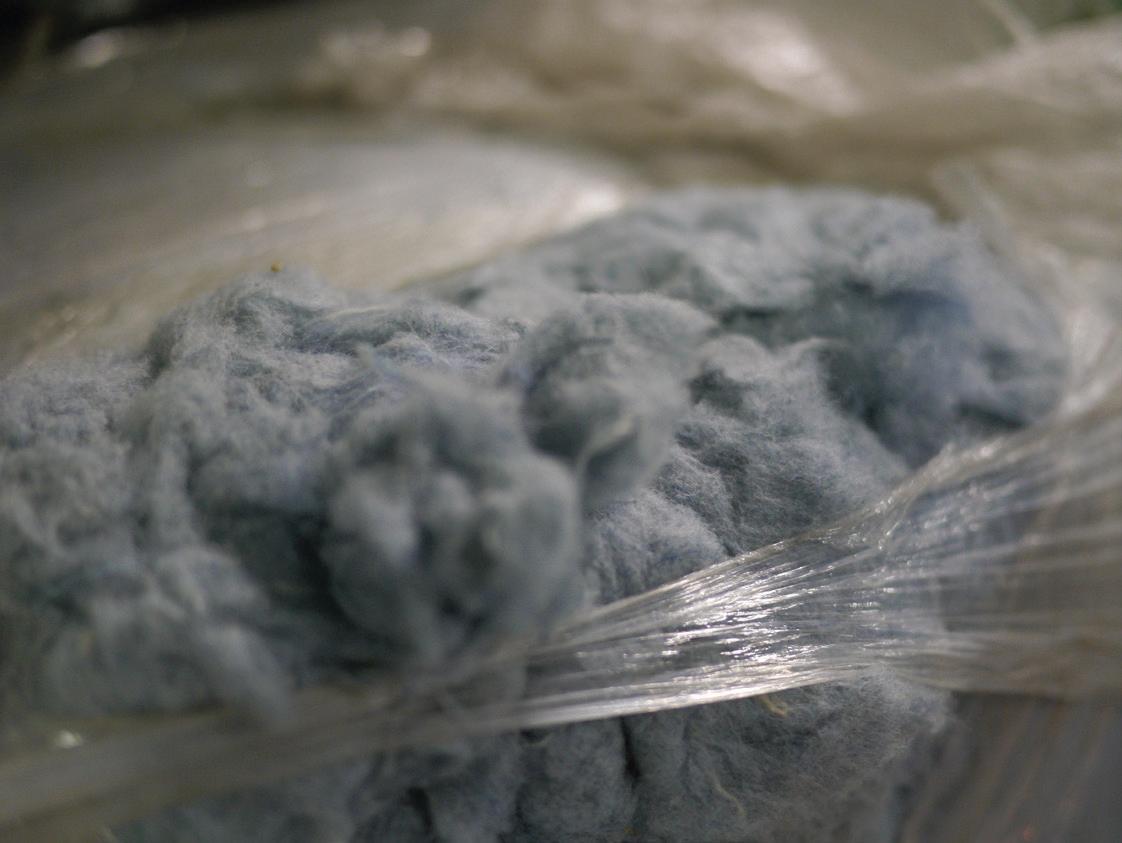
“Our customers benefit from having third-party verification on where recycled content is sourced.”


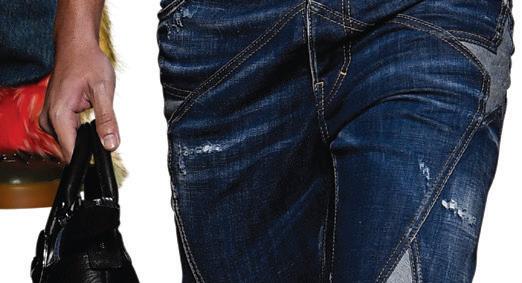

 BY ANGELA VELASQUEZ
BY ANGELA VELASQUEZ

DENIM WAS on the world stage from January to March as Fall/Winter 2023-2024 fashion weeks took place around the world.


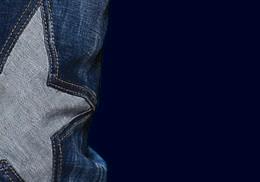
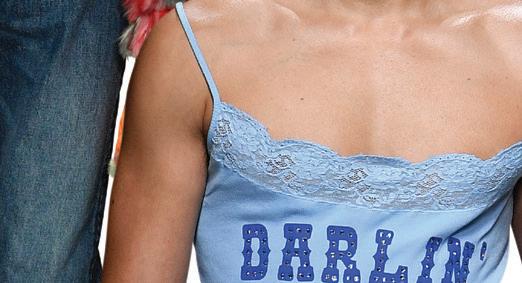

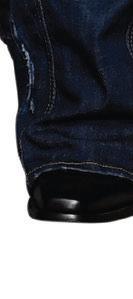




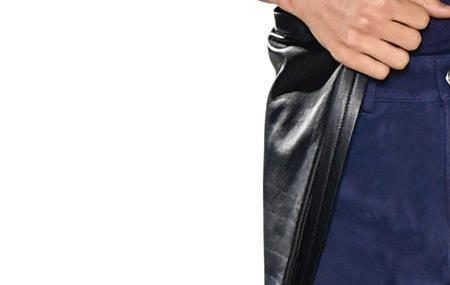
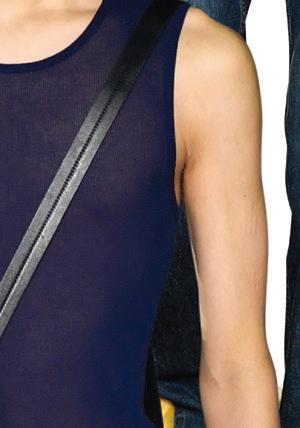







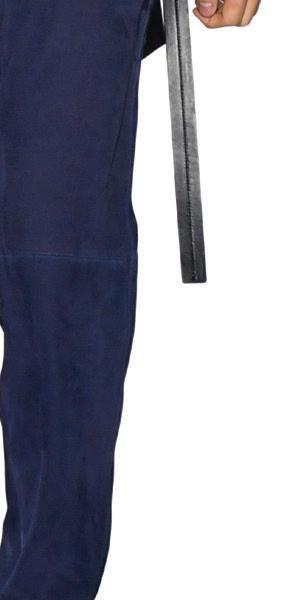







In a departure from the colorful, Y2Kinspired designs that have dominated post-pandemic collections, brands returned to denim’s roots.










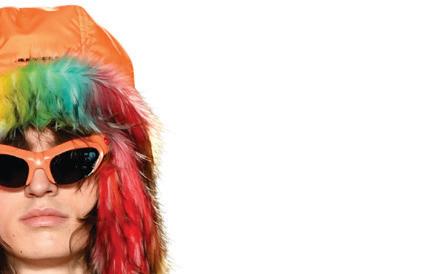
Collections celebrated denim’s heritage in workwear, the versatility of indigo and the fabric’s future in unexpected categories like suiting and eveningwear. However, delicate textures, glossy coatings and unique styling—from stacked belts to dresses over jeans—provided the novelties that will keep consumers coming back for more.
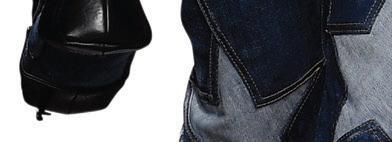
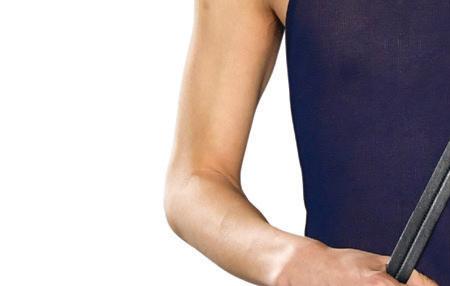
Here’s a look at the highlights.






















The men’s and dual-gender collections presented at fashion weeks highlighted denim’s ability to play in all categories. A mainstay in F/W 23-24 collections, the fabric was present in collections that leaned heavily on tailored looks and others that borrowed loose and relaxed fits from streetwear.
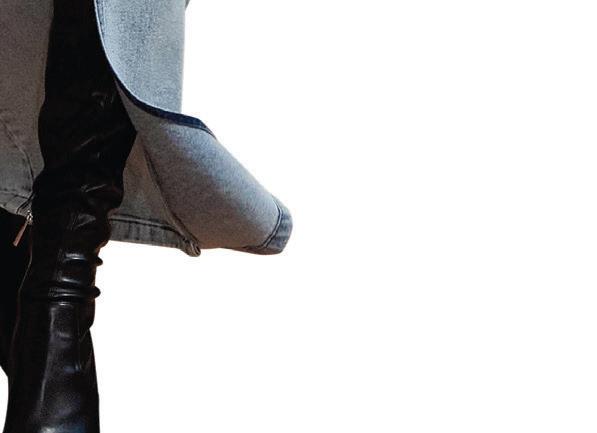
Denim was predominately presented as head-to-looks with jeans and denim skirts being paired with denim jackets or button-down shirts. Feng Chen Wang’s laser-printed coordinates were embellished with studs. Juun J matched the destroyed details on jeans to an oversize denim blazer. Zadig & Voltaire kept it simple with a Trucker and straight fit jeans in the same wash.
There was a softness in collections, executed in rounded legs, drop shoulders and dreamy blue washes. Kenzo showed a collarless jacket and jeans with a cloud-like wash. Solid Homme paired balloon jeans with pastel blue varsity jackets. Alaïa presented light wash barrelshaped jeans.
Contrasting fades were part of Blue Marble’s and Namesake’s collections. The fades segued into more robust ombre effects by Botter, Casablanca and Jordanluca.
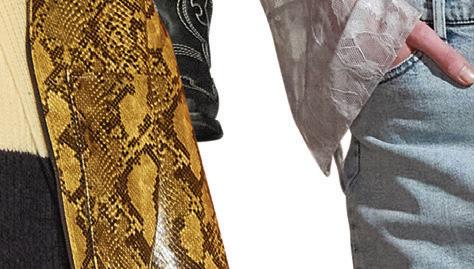

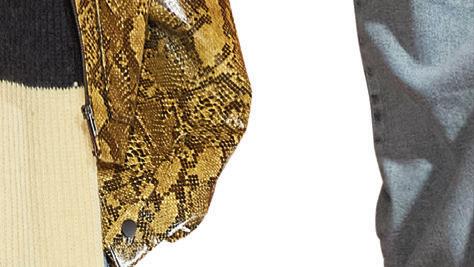

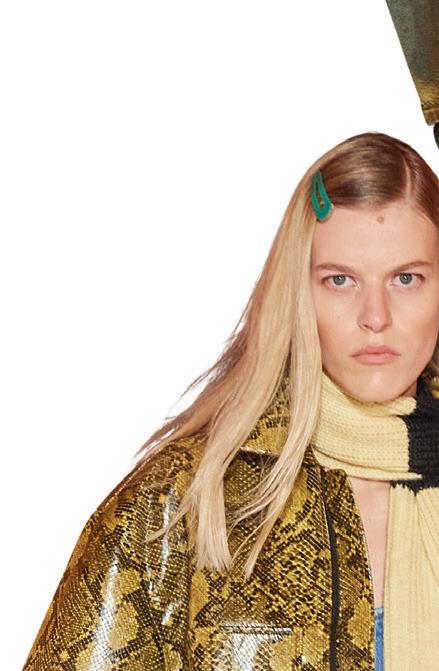

Garments with DIY-inspired details and artisanal handiwork took on many personas. Airei’s jackets and jeans featured deconstructed quilting with delicate undone threads. Acne Studio went for a vintage aesthetic with a bleached quilted jacket and plaid patchwork jeans. Large floral embroideries and multi-color faux-fur inserts distinguished Blue Marble’s jeans.
Creative patchwork was part of Dsquared2’s homage to the early aughts. Low-slung jeans were decorated with star-shaped knee patches and wilderness landscapes made with pieced denim, while others were shredded or embellished with sequins. The nostalgic story was compounded by bootcuts, stacked legs and micro miniskirts and dresses paired with ironic slogan tees.
The dirty-looking denim trend from S/S ’23 evolved toward claytinted washes. Egonlab and RtA featured orange-tinted bottoms.


Copenhagen Fashion Week was home to collections that mixed denim with colorful outerwear, unique knitwear and monochromatic sets.
Double denim looks with a medium wash were all the rage in collections by Munthe, Rabens Saloner, and Skall Studio. Slouchy bottoms were typically paired with a relaxed button-down shirt or Trucker jacket. Operasport went darker with its workwearinspired shacket and trouser jeans.
(Di)vision continued to focus on dual-gender reconstructing denim garments. A maxi skirt was upcycled from a pair of jeans. Rainbow-hued stitching added a youthful touch to carpenter jeans. The brand also brought back Y2K styling by pairing a belted tunic-length knit tank over ripped bootcut jeans.
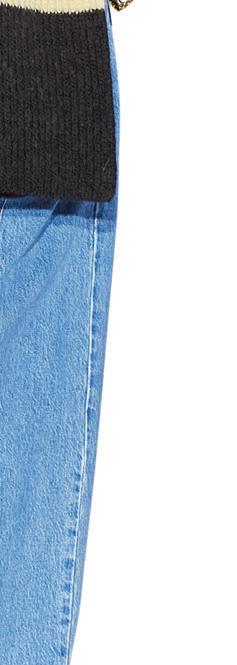


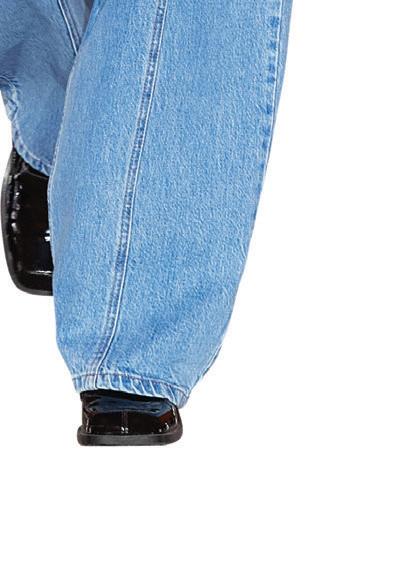

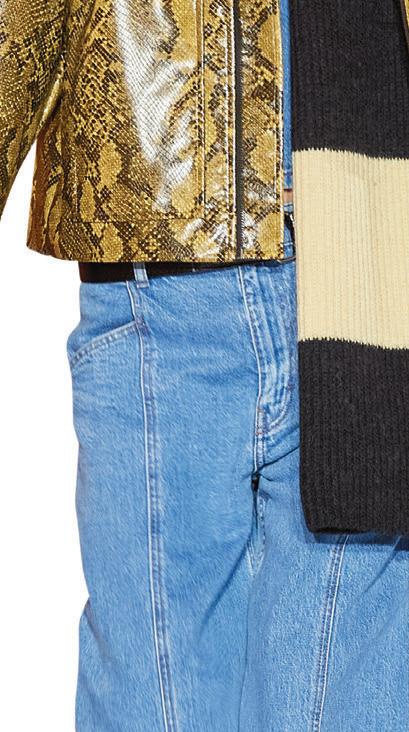
TG Botanical took a similar approach to styling by layering a denim tube dress over bootcut jeans. A denim corset top paired back to a maxi skirt. Though brighter shades of indigo were present, these pieces stood out for their brown- and green-tinted washes.

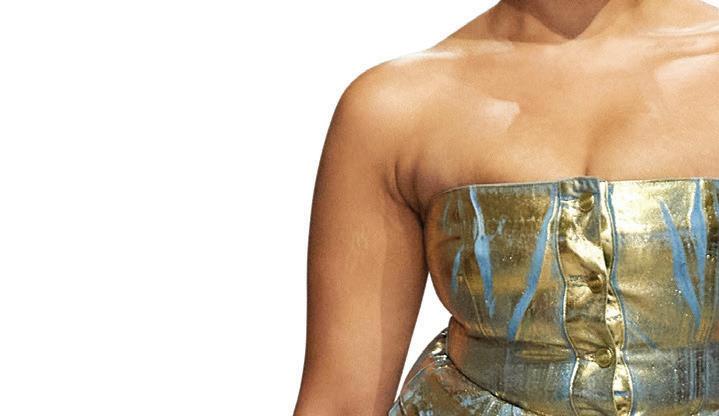
Spray-paint effects colored Wood Wood’s grunge-inspired range. Alpha’s deconstructed approach spanned “cuffed” denim skirts to religious-themed coordinates embellished with clear crosses and pieces that mimicked a nun’s habit.






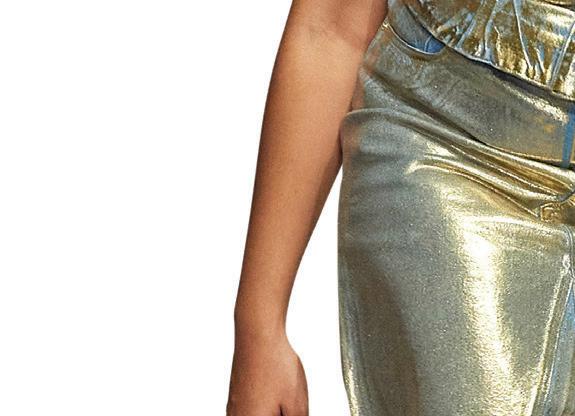

A bodice with corset-inspired seaming broke up the long line of Gestuz’s long-sleeve denim dress. The collection leaned into its cool-girl aesthetic with sleek denim suiting, skirts in mini and maxi lengths, low-slung slouchy jeans and shimmery black denim coordinates.
Washed black denim was a focal point for Holzweiler. Black tulle peaked from its button-front jean dress. Loose-fitting jeans and a front-slit midi skirt were styled with intentionally imperfect knitwear.
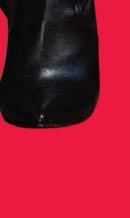

Grown-up but playful was the inspiration behind Ganni’s collection. The vibe was illustrated in suiting, tailoring, and denim that already feel like wardrobe staples—some made with Circulose.
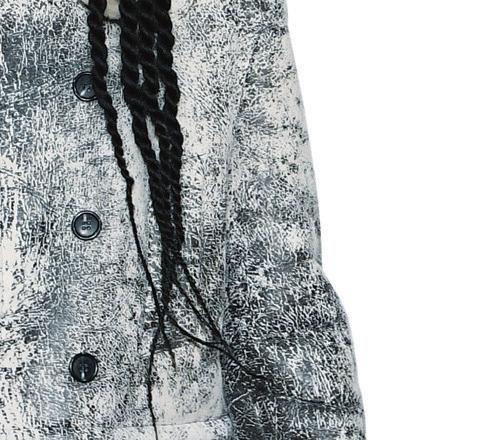




Washed black denim featured prominently in an assortment of elongated Truckers and frayed skirts worn over jeans. Indigo maxi and midi skirts were paired with button-down shirts with balloon sleeves, indicating a move from the puff shoulder silhouettes the brand is known for. The playful side was seen in a range of metallic coated denim corset tops, blazer/Trucker hybrids, skirts and jeans. The collection introduced a new butterfly logo. For Ganni, F/W 23-24 is “all about transformation, change, and positivity, all things the butterfl symbolizes,” said creative director Ditte Reffstrup. “It’s a new chapter for Ganni. Our team has come so far since we first started out and makes me so proud to think about where we are today. The collection has a more mature and grown-up feel this time, it’s sleek and strong yet totally Ganni…”


positivity, all the butterfly said creative director Ditte Reffstrup. “It’s a new chapter Ganni. Our team come so since we out it makes me so proud to think about where we are The collection has a more mature and grown-up feel this time, it’s sleek and strong


Denim suiting, dark washes and cargo pockets made a strong appearance at New York Fashion Week.
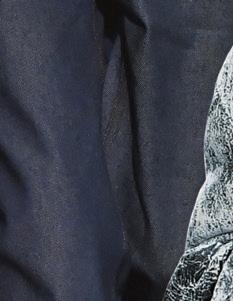

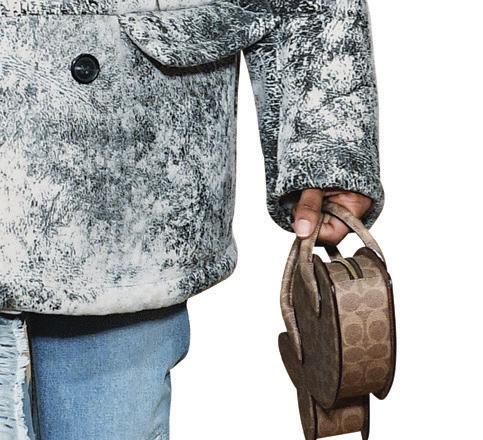


strong appearance at New York
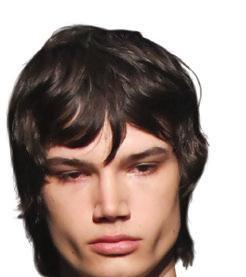
The Y2K-inspired glitz blitz of previous seasons gave way to applications that felt more sentimental and nostalgic. Agbobly presented dark-wash cargo jeans and denim sets decorated with multicolored topstitching and Swarovski beads. The long strands of beads were inspired by earrings that founder Jacques Agbobly’s aunts would wear for Sunday service.
and Swarovski beads. The strands of beads were earrings that founder Jacques aunts would
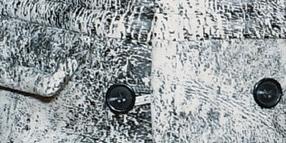

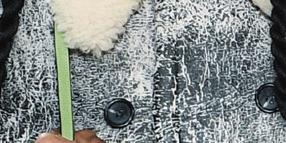
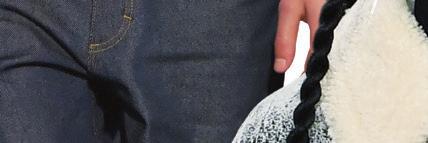



“joyous memories of carefree with friends,




featured a vest and jeans embellished with ’90s-era studs, gems and buttons, and acid-wash jeans




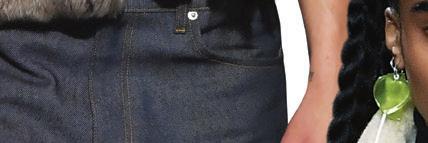

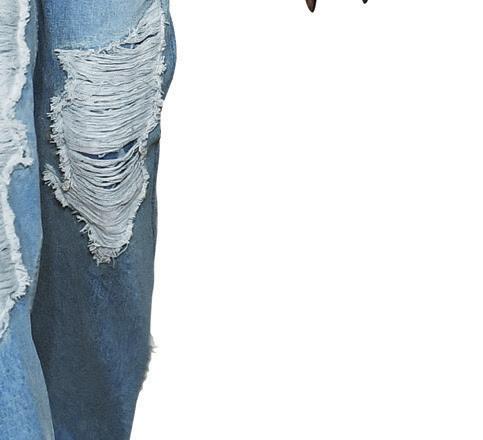






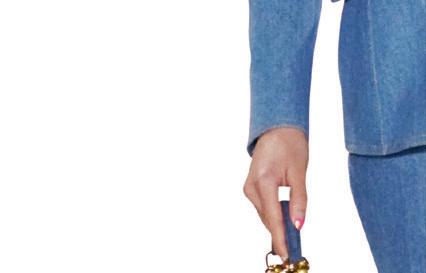





Tanner Fletcher’s collection, inspired by “joyous memories of long, carefree nights with friends, indulging in the youthful spirit of mischief and camaraderie,” featured a vest and jeans embellished with ’90s-era studs, gems and buttons, and acid-wash jeans embellished with denim bows.
Bows led to other girly details like Aknvas’ denim miniskirt wrapped with oversized ruffles.






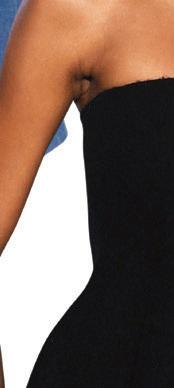
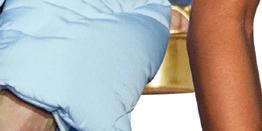
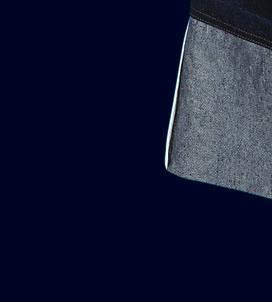







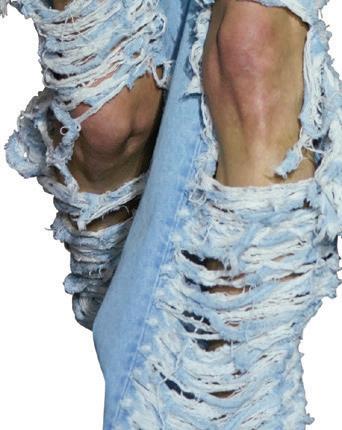
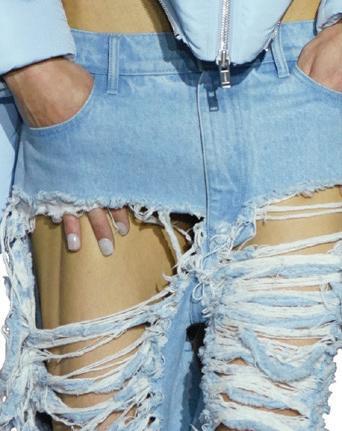





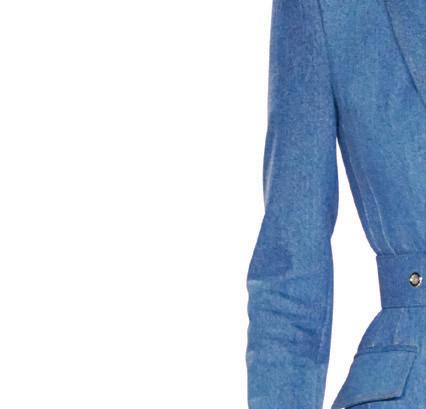

Bows led to other details

1 2 3 4 5
















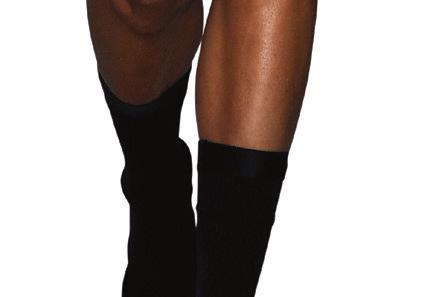




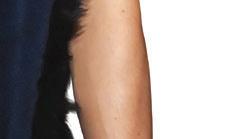



Grommets added a rocker edge to Colin Locascio’s tiered ruffle midi skirt.

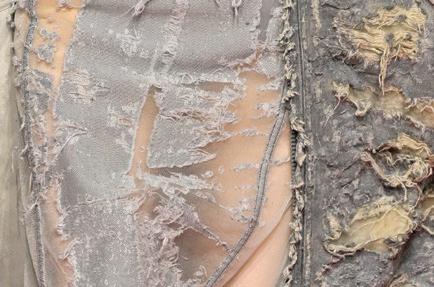




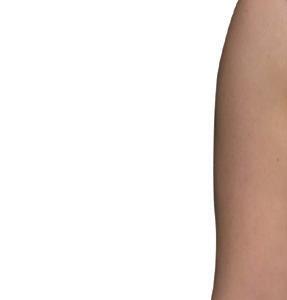
Utility trends like cargo jeans and shackets may have reached the masses, but they still maintain a strong hold on the runway. A menagerie of pocket designs decorated Colin Locascio’s jacket, jeans and zip-up miniskirts. Cargo jeans were also present in collections by Christian Cowan and Alice & Olivia, which added leather flaps to its pockets.
The utility trend is helping raise the profile of another heritage staple: raw denim. The edgy dark denim looks that put G-Star Raw on the radar of now-Louis Vuitton men’s creative director Pharrell Williams in the 2010s is back. Dark indigo was seen in Luar’s collection as a collarless jacket and jeans, Et Ochs’ as wide-leg jumpsuit, minidress, deconstructed strapless top and trouser jeans, and Brandon Maxwell’s as widecut cuffed shorts.



as a collarless and jeans, Et Ochs’ as a jumpsuit, deconstructed strapless top and trouser jeans, as cut Latta raw jeans as well as a version with a coating for a liquid-like Foo Foo to punk and skate subcultures with purple-tinted jeans with loops and carabiners, with












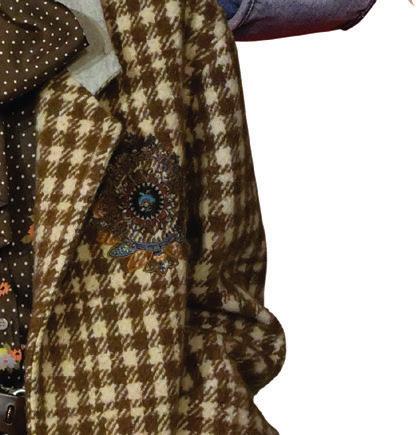







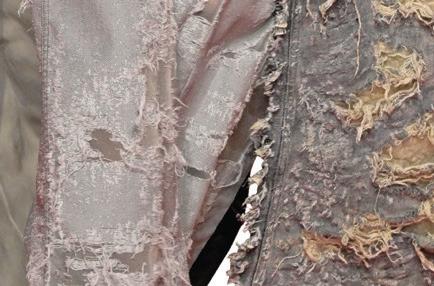














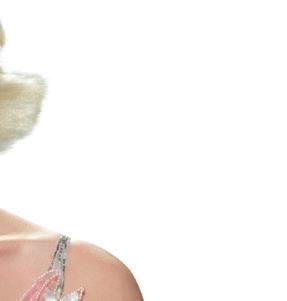






Eckhaus Latta served raw wideleg jeans as well as a version with a glossy coating for a liquid-like effect. and Foo nodded to punk skate subcultures with purple-tinted indigo jeans with loops carabiners, styled with stacked belts.

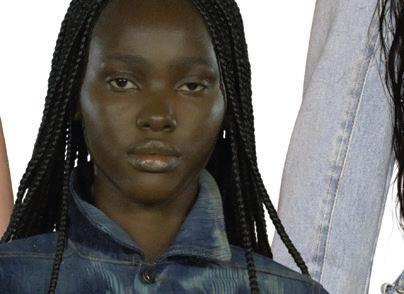

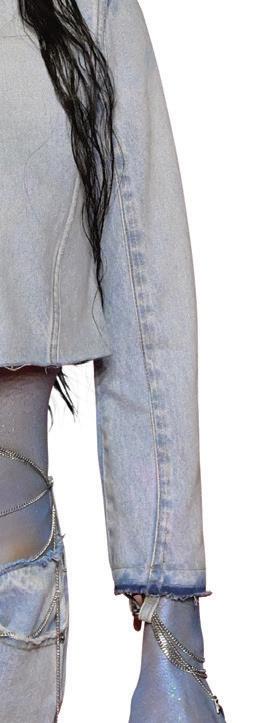
surge of denim suiting pitched as a cool,

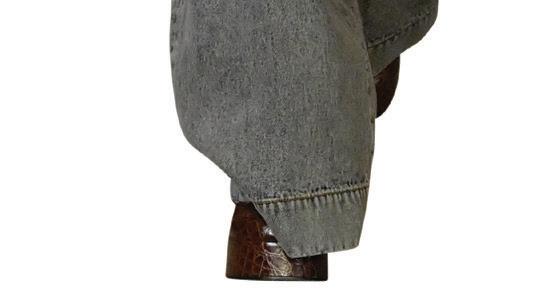
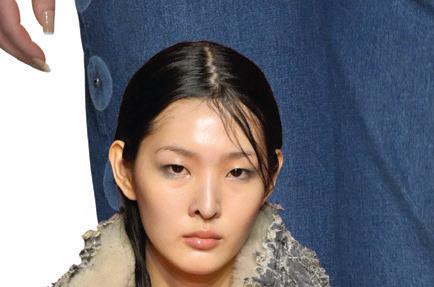
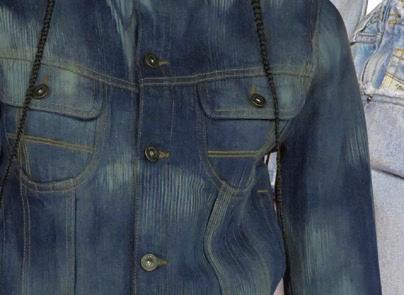
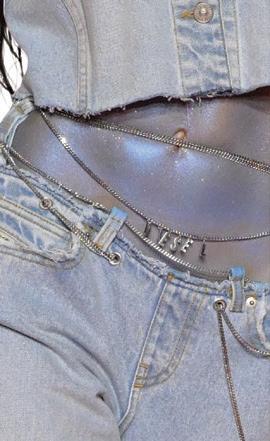
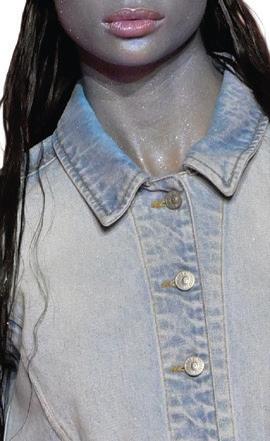

Veronica Beard paired a cropped one-button with pleated denim trousers, while proportions updated Luar’s suit.

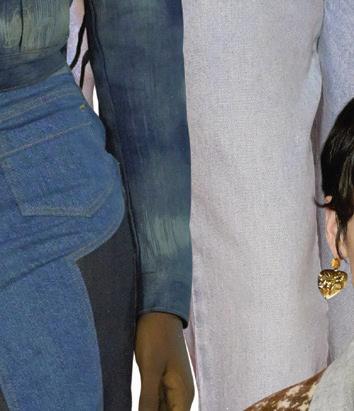


Dark washes enhanced the surge denim suiting being pitched a cool, sharp-looking solution for relaxed dress codes. Veronica Beard paired a cropped one-button jacket with pleated denim trousers, while exaggerated proportions updated Luar’s double-breasted suit.
Other designers played into fabric’s unique wash downs for their suiting. Romeo Hunte’s suit—a double-breasted jacket denim-covered buttons and cargo jeans—boasted a medium ’90s wash. Gold hardware popped against Derek Lam 10 Crosby’s medium-wash blazer and matching front-slit midi skirt. Hudson went for a retro bombshell look with a belted cornflower blue blazer, trousers matching box handbag.
Other into the fabric’s unique wash downs for their suiting. Romeo Hunte’s suit—a double-breasted with cargo a medium ’90s wash. Gold hardware popped against Derek Lam 10 front-slit midi skirt. Sergio Hudson went for a retro a cornflower blue trousers and box

Across the London was to
the pond, London was home rebellious denim.

























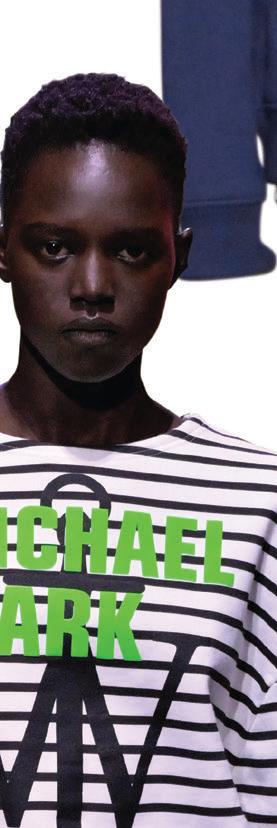

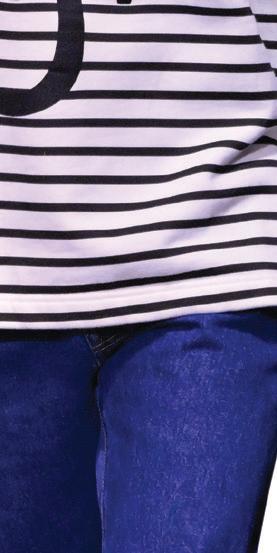


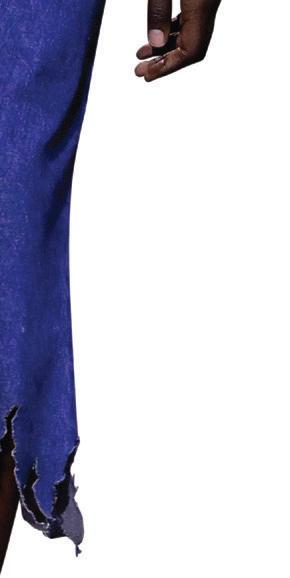






















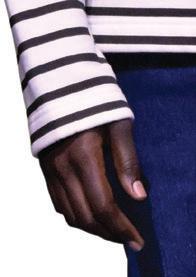
[THE COLLECTION IS] MORE CONDENSED AND CONCENTRATED, MORE GROWN UP, FUN AND STRONG AND PLAYFUL.”
—GLENN MARTENS, DIESEL
Mowalola’s bootleg New York Yankee and MoMA merch was almost overshadowed by cutout cargo jeans with second waistbands that hovered just above the knees. A miniskirt featured a dip-front waist, while a low-rise maxi skirt was styled with a denim zip-up jacket and bralette.
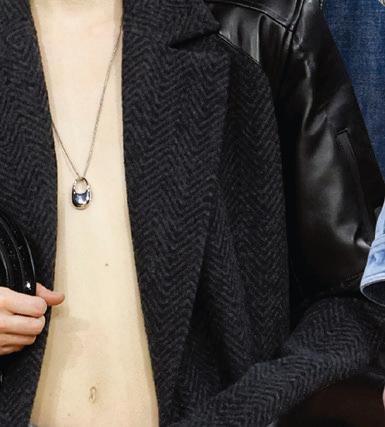

Romanian designer Ancuta Sarca collaborated with Lee to repurpose its deadstock denim into bralettes and skirts. While the top block of Nensi Dojaka’s jeans was traditional light-wash denim, the legs were lace and sheer. Asai’s denim dress featured a shredded skirt with loose, featherlike threads.
Though bold color has been an unmissable force in recent seasons, when it came to denim designers in London stayed true to its indigo roots. Eudon Choi kept it serious with a dark indigo pintucked denim shirt dress and knee-length pleated skirt. JW Anderson went brighter with French blue jeans and shredded long shorts. The washed out indigo shades of the early 2000s underscored the coolness of House of Sunny’s laced maxi skirt, jeans and tunic.
Designers in Milan highlighted the fabric’s texture and ability to transform.


Velvet, sheer silk and denim co-mingled in Roberto Cavalli’s homage to ’70s bell-bottoms and robe jackets with stage presence. White frayed edges emphasized the grid-like pattern of Sunnei’s patchwork coat and coordinates, while Philipp Plein’s patchwork trench and sets took on a more abstract appearance.
Stacked legs, splotchy colors, crinkle effects, shredded surfaces and chopped-away waistbands were all part of Diesel’s formula for eye-catching denim. Creative director Glenn Martens described the collection as “more condensed and concentrated, more grown up, fun and strong and playful.”











Ssheena made a case for cargo culottes as well as wide-leg jeans worn low—just enough to expose denim underwear. Blumarine continued to play in the Y2K arena with green-tinted jeans,












buckles and low rises. Brushed gold highlighted the pleats on Cormio’s miniskirt and jeans.

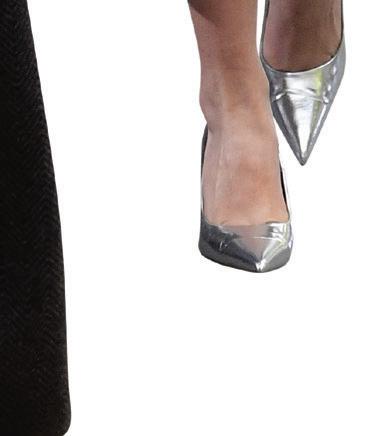



For the traditionalists, wide-leg jeans with vintage washes comingled with Etro’s chunky knits, check coats and silk pussy bow blouses. Gucci opted for ’90s-era coolness with slouchy jeans and oversized blouses and blazers. MM6 Margiela kept jeans loose and fluid.
In Paris, the focus was back on indigo. Wide-leg jeans were a canvas for designers like Gauchere, Dries Van Noten, Rokh, Balenciaga and more to showcase ’90s-inspired washes.


Dark denim added a dressy element to collections. Balmain leaned into dark washes by styling flare jeans with a puffsleeved blouse. Nina Ricci, under the creative direction of Harris Reed, explored denim suiting with exaggerated shapes. Cecilie Bahnsen added a peplum to dark Trucker jacket.

Deconstructed denim was mixed into collections. Rokh redesigned jackets as oneshoulder and asymmetrical tops and folded over the waistband of its wide-leg jeans. Stella McCartney pieced denim jackets, jeans and midi skirts with suiting. Calvin Luo styled a pleated denim skirt as a strapless top worn over relaxed fit jeans.
Designer Lutz Huelle toned down his usual approach to deconstructed denim with pieces that were slightly askew, like a jean skirt twisted sideways and barely uneven hems on jeans. Besides resin-coated jeans, Victoria Beckham presented a ruffled midi skirt with back pockets on the front. ●
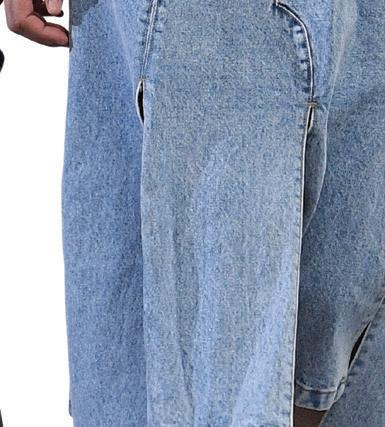

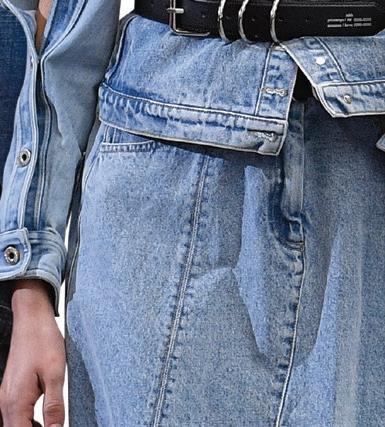

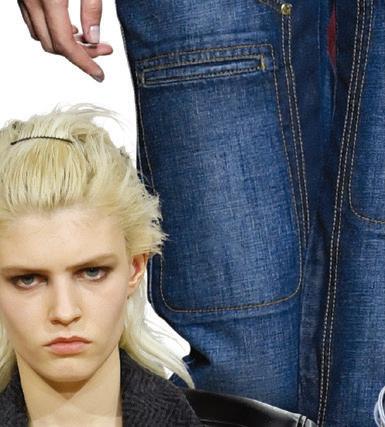
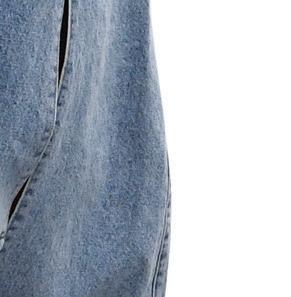

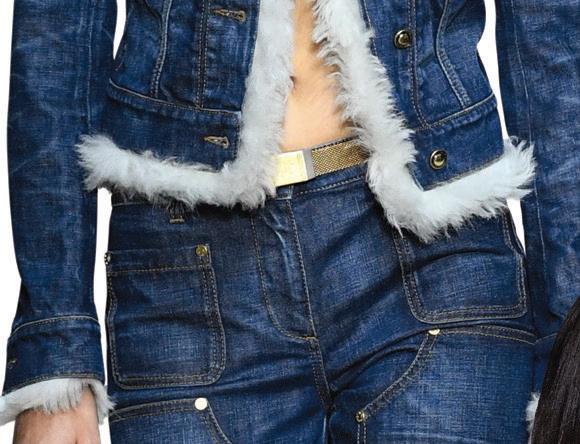



 ZLeft: COACH mended cardigan; ELDER STATESMAN upcycled cashmere dress; LUCKY BRAND jeans; KARA crossbody bag; EYTYS boots.
Right: MOSCHINO leopard studded leather coat; HEAVEN BY MARC JACOBS T-shirt; ANNA SUI embellished denim skirt; LAPIMA sunglasses; SUNNI SUNNI boots.
ZLeft: COACH mended cardigan; ELDER STATESMAN upcycled cashmere dress; LUCKY BRAND jeans; KARA crossbody bag; EYTYS boots.
Right: MOSCHINO leopard studded leather coat; HEAVEN BY MARC JACOBS T-shirt; ANNA SUI embellished denim skirt; LAPIMA sunglasses; SUNNI SUNNI boots.


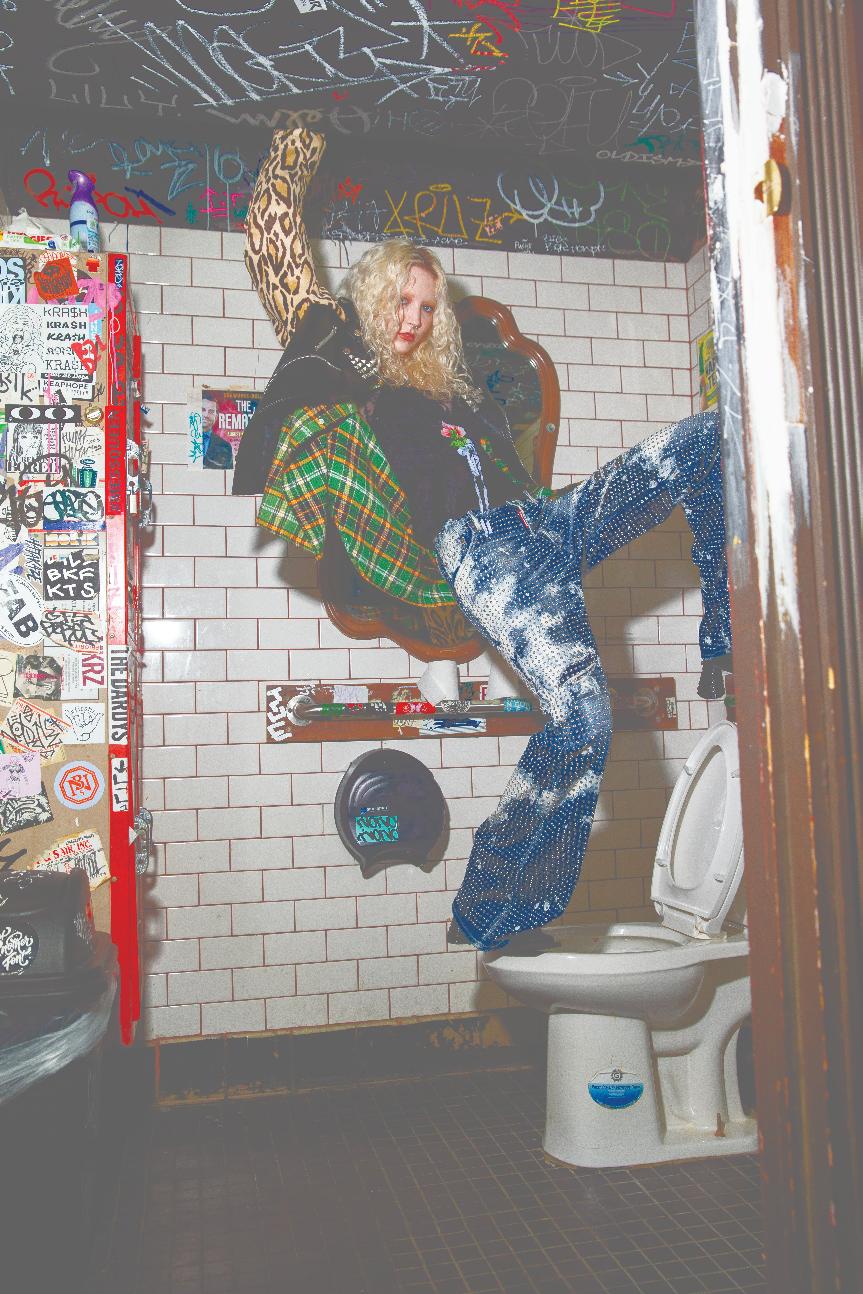

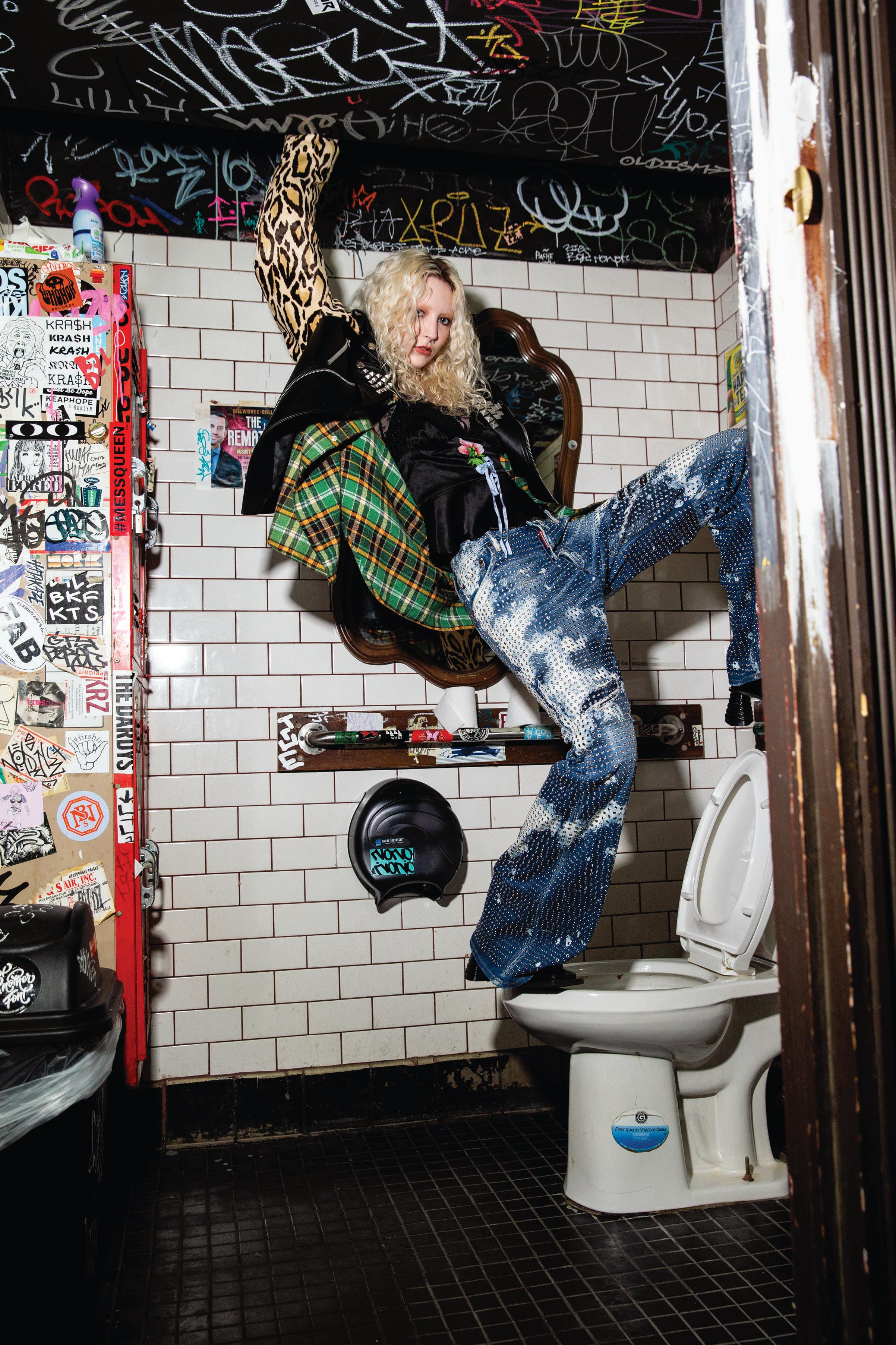
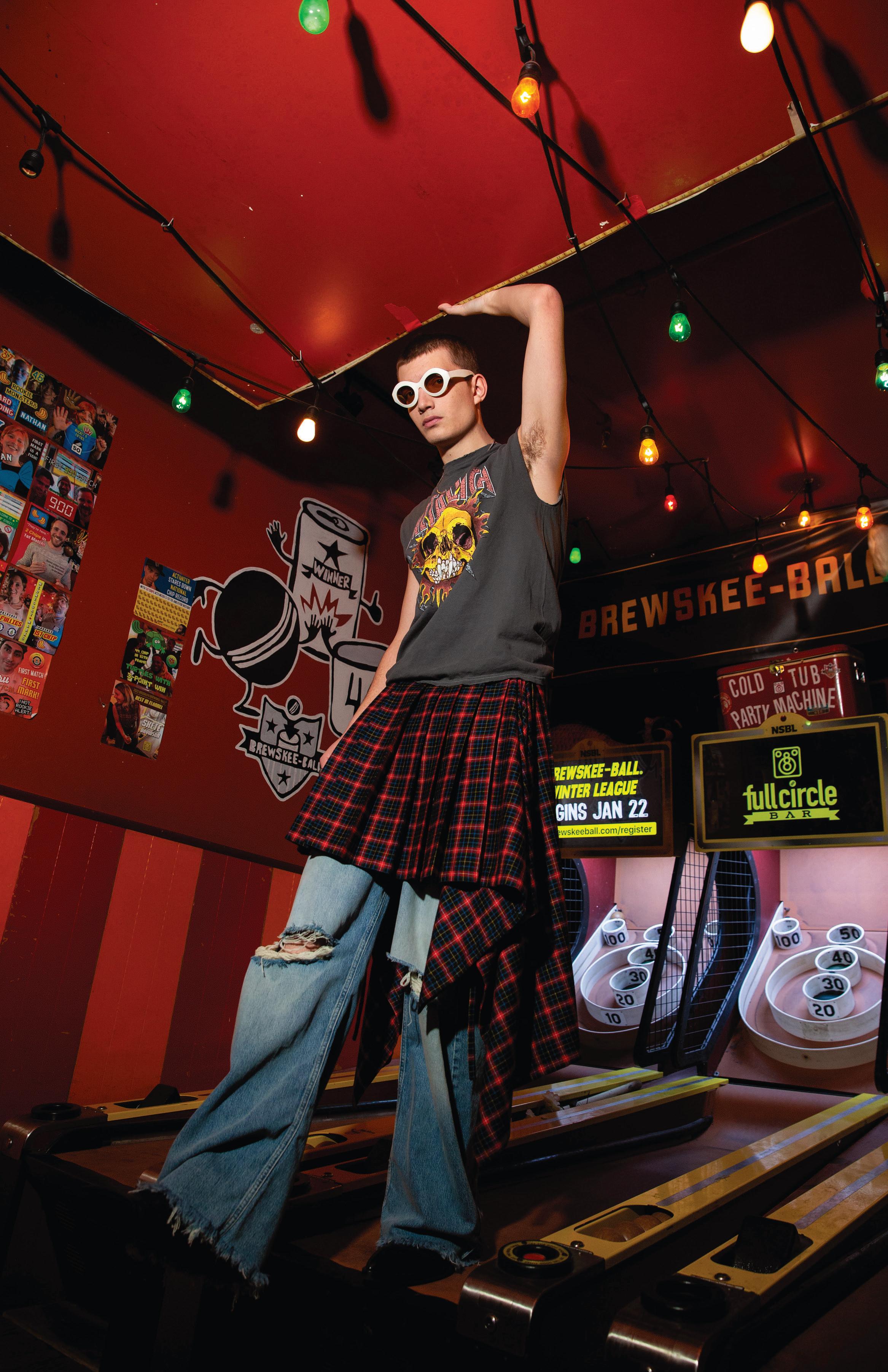 ZURBAN OUTFITTERS T-shirt; MOSCHINO tartan skirt over FRAME jeans; LAPIMA sunglasses; JIL SANDER boots.
ZURBAN OUTFITTERS T-shirt; MOSCHINO tartan skirt over FRAME jeans; LAPIMA sunglasses; JIL SANDER boots.
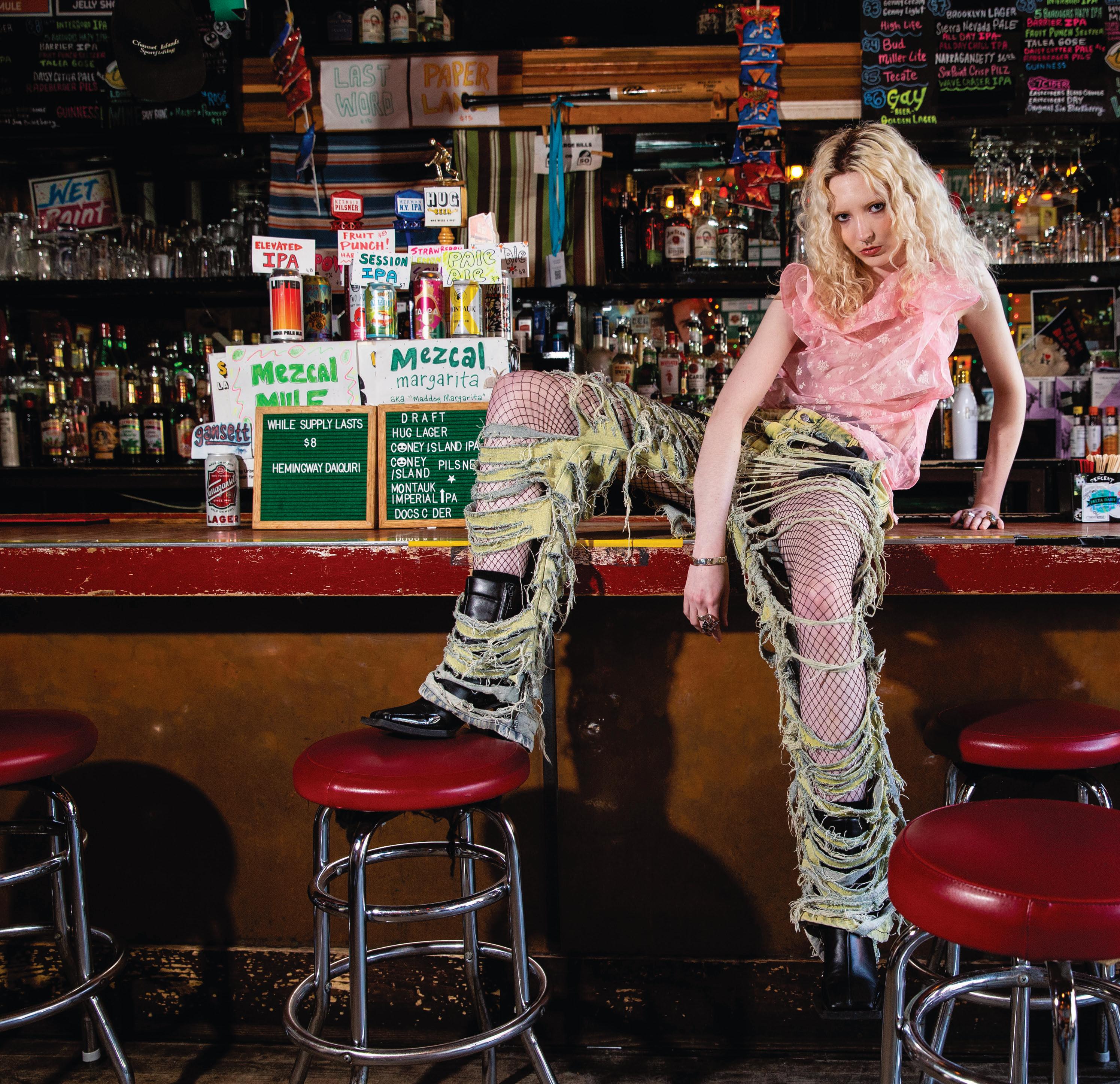

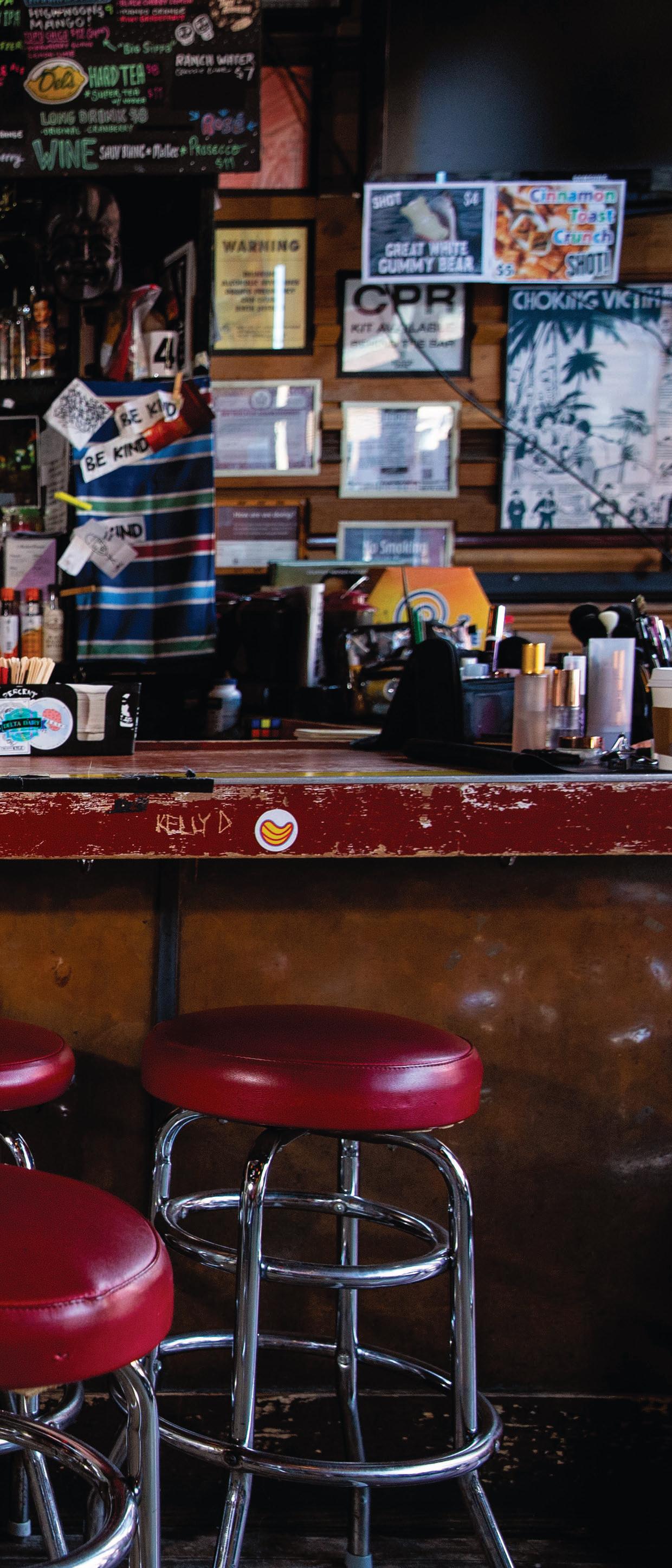



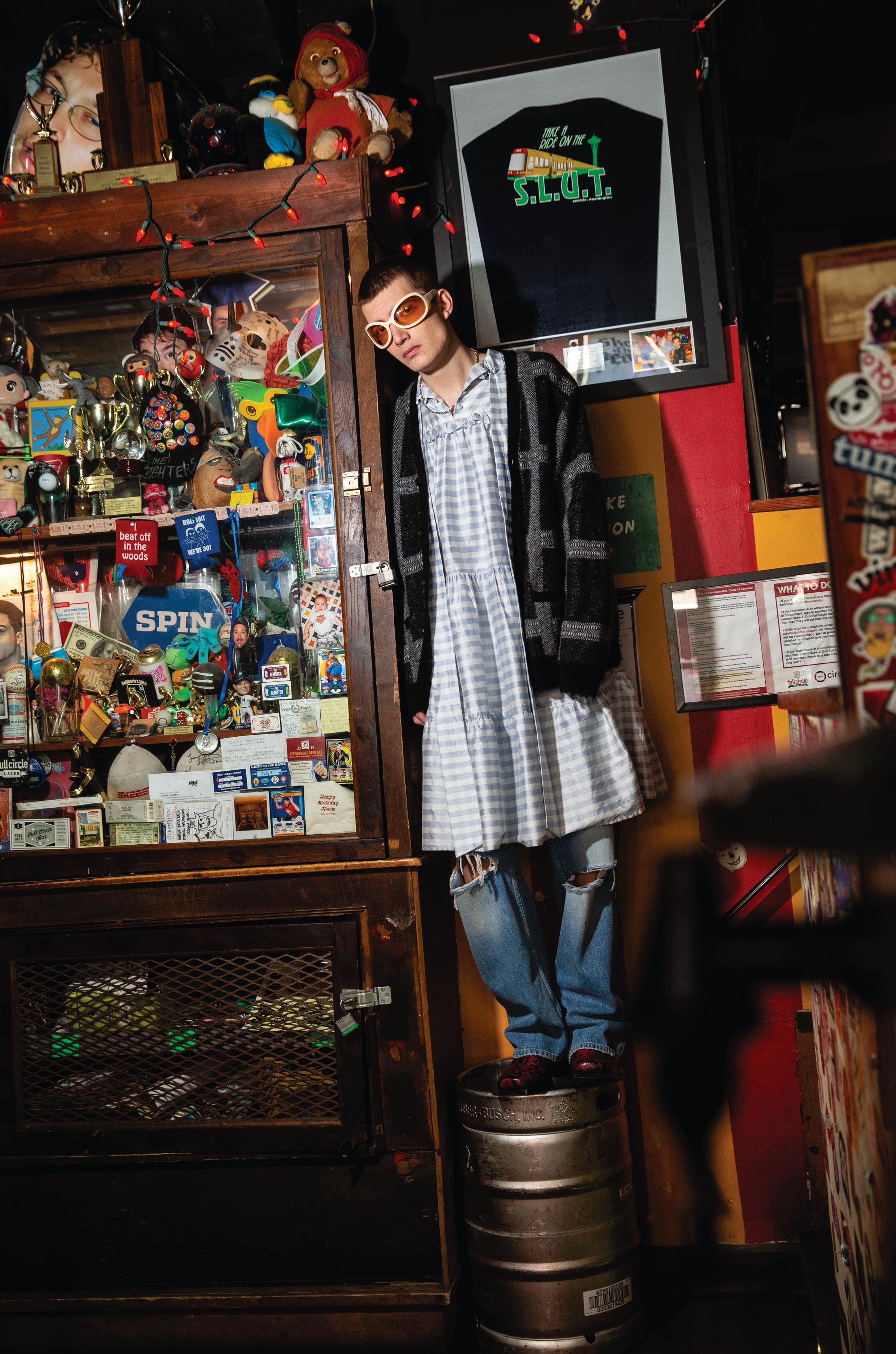

 Z3.1 PHILLIP LIM stonewashed denim and lace dress; MARINE SERRE T-shirt; R13 boots; CALZEDONIA tights; JOOMI LIM velvet choker; HEAVEN BY MARC JACOBS necklace; ETTIKA layered necklace; MARA SCALISE cuff ring with black onyx; SARA SHALA link ring and diamond ring; BOUNKIT amethyst and quartz ring.
Z3.1 PHILLIP LIM stonewashed denim and lace dress; MARINE SERRE T-shirt; R13 boots; CALZEDONIA tights; JOOMI LIM velvet choker; HEAVEN BY MARC JACOBS necklace; ETTIKA layered necklace; MARA SCALISE cuff ring with black onyx; SARA SHALA link ring and diamond ring; BOUNKIT amethyst and quartz ring.
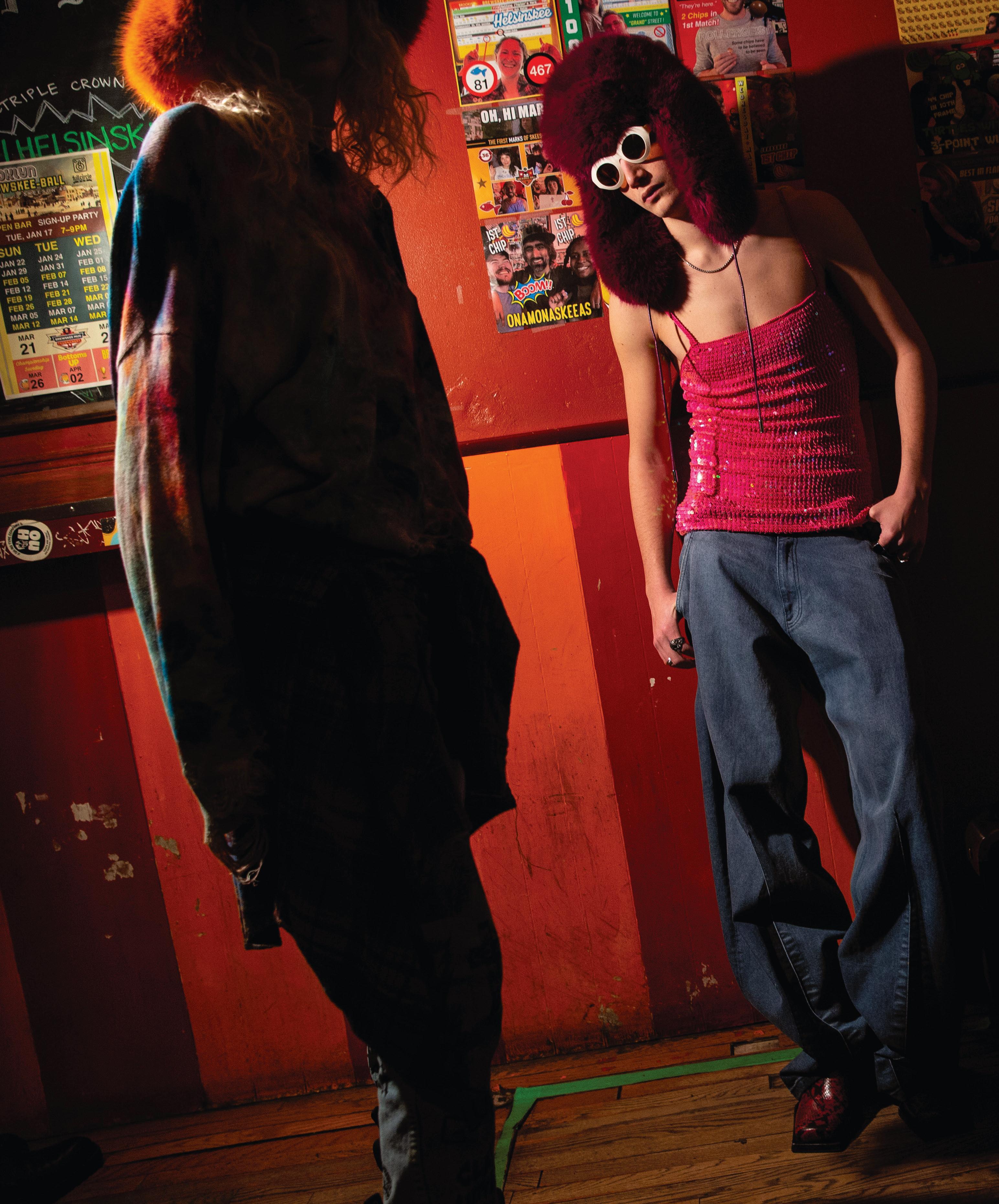 ZRETROFETE sequin crochet dress; DION LEE jeans; ADRIENNE LANDAU hat; LAPIMA sunglasses; SUNNI SUNNI boots; DAVID YURMAN chain necklace and rings.
ZRETROFETE sequin crochet dress; DION LEE jeans; ADRIENNE LANDAU hat; LAPIMA sunglasses; SUNNI SUNNI boots; DAVID YURMAN chain necklace and rings.
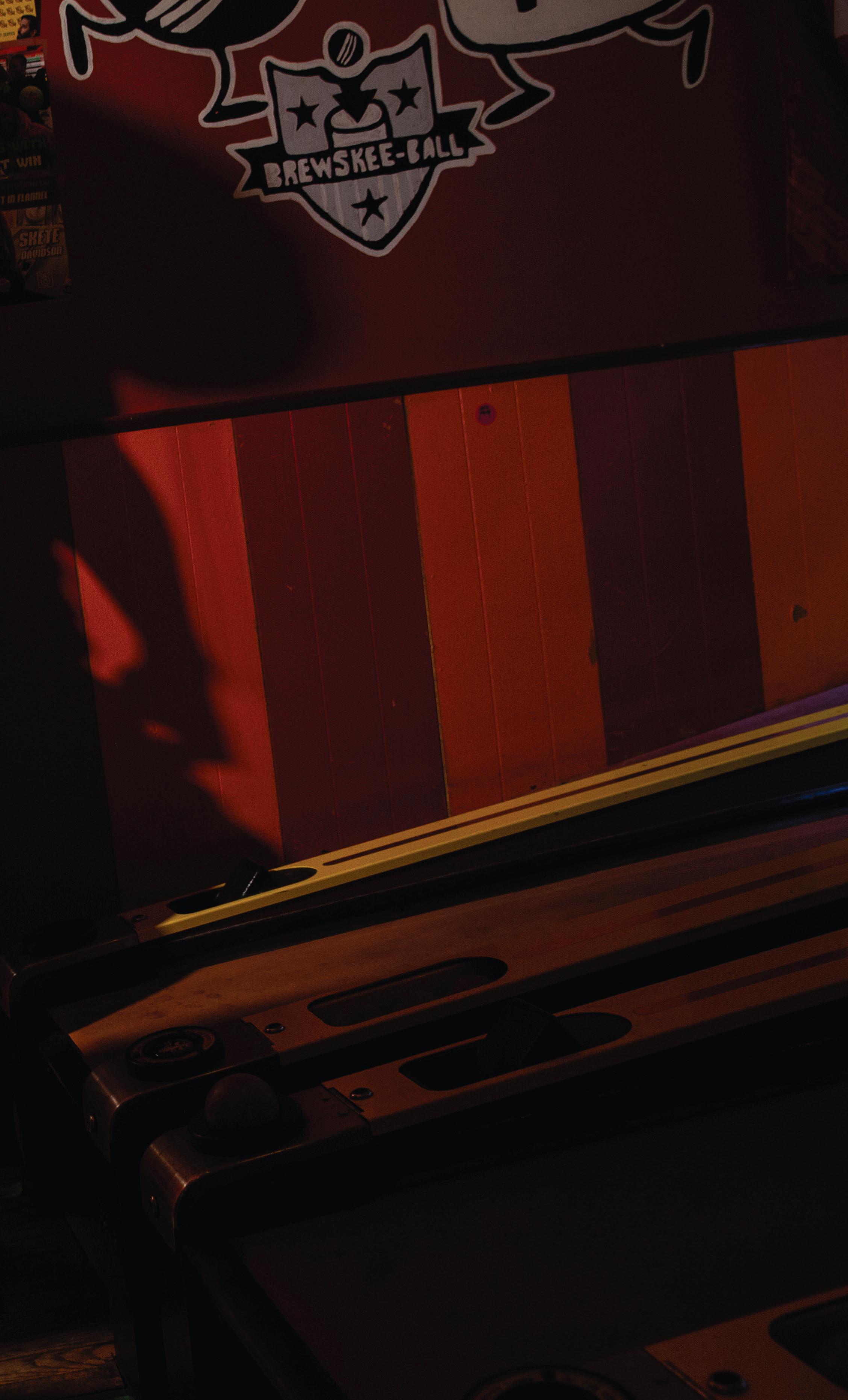
ZNGUYEN INC T-shirt over a Heaven by Marc Jacobs mohair double layer sweater; MOSCHINO wool tartan skirt over CLOSED jeans; R13 boots; MARA SCALISE cuff ring with black onyx; SARA SHALA link ring and ring with diamonds; BOUNKIT turquoise ring.
•••
Opposite: MOSCHINO leopard studded leather coat; HEAVEN BY MARC JACOBS T-shirt; ANNA SUI embellished denim skirt; LAPIMA sunglasses; SUNNI SUNNI boots.
•••
Style director: ALEX BADIA; Hair: REBEKAH CALO; Makeup: AVERY GOLSON at See
Management; Models: ELEANOR CHROMY and MAX BOGEN at IMG;
Casting: LUIS CAMPUZANO; Market by: EMILY MERCER, LUIS CAMPUZANO and THOMAS WALLER; Fashion assistants: KIMBERLY INFANTE and ARI STARK; Editor: ANGELA VELASQUEZ



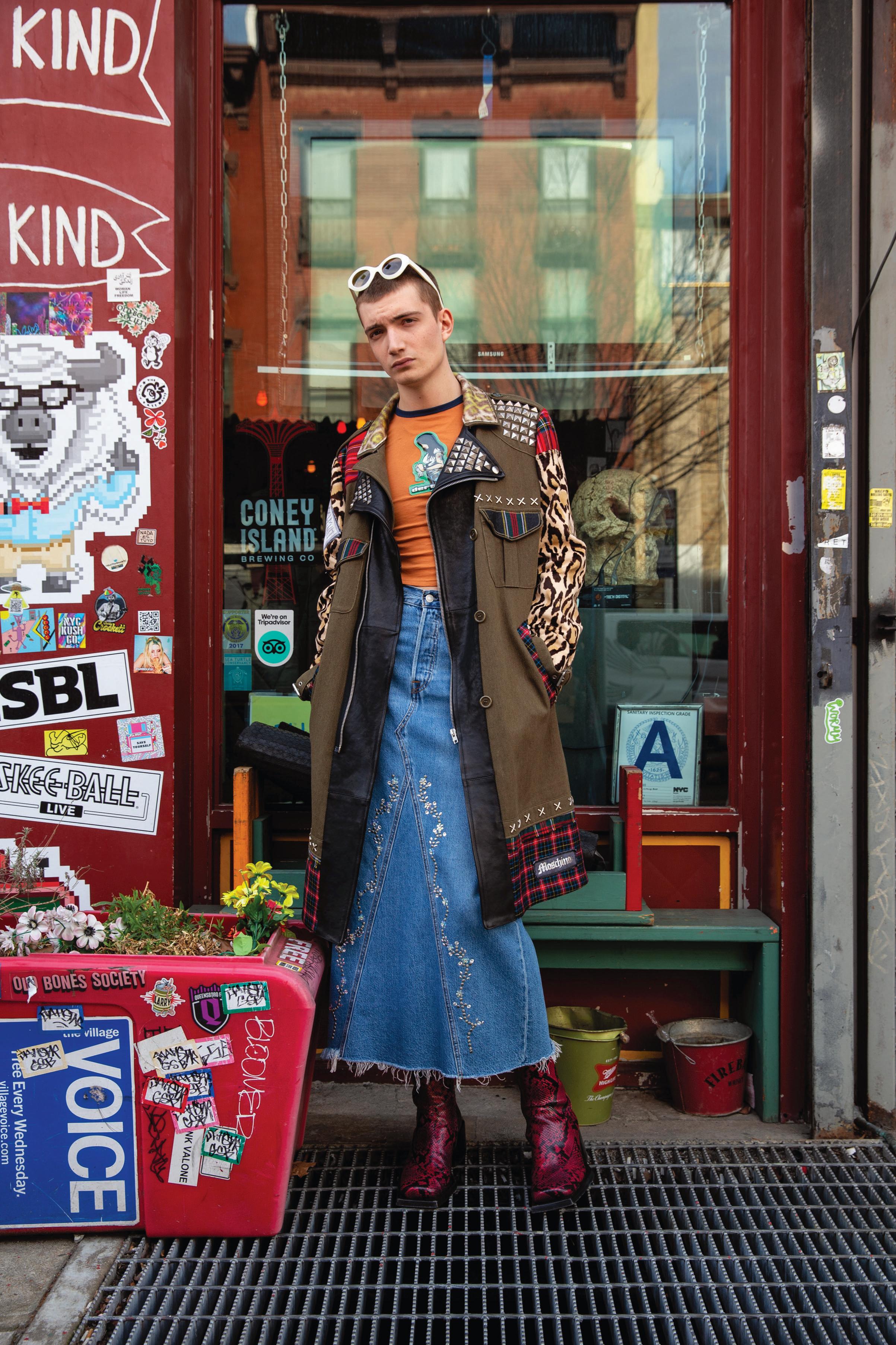

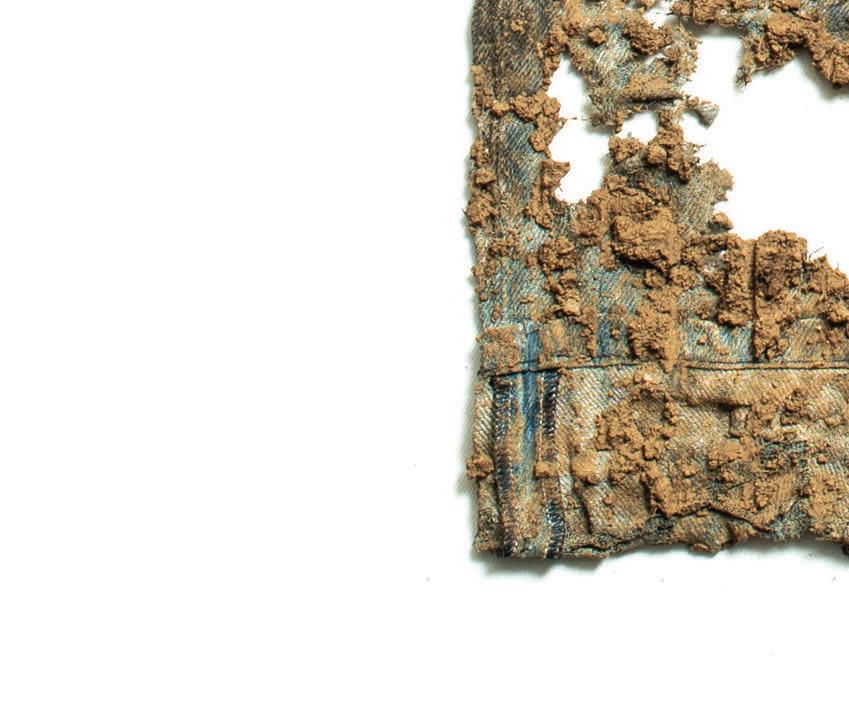
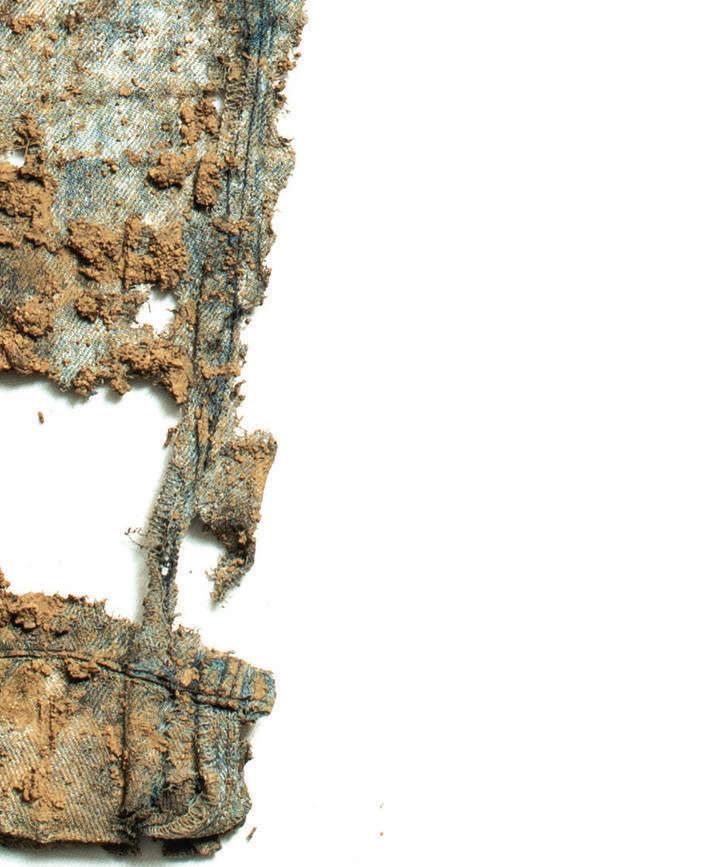







IT STARTED , as things sometimes do, with a stick of salami. This was circa 2014. Alberto Candiani was grabbing lunch at a deli in Induno Olona, the picturesque Milan-adjacent town his family-founded denim mill calls home, when he spied a piece of sausage in a bouncy netting of natural rubber. Surrounded by cold cuts, inspiration struck. Could this be the key to the plastic-free flexible denim everyone was looking for?
The answer, as it turned out, was an unequivocal yes. Five years of persistent R&D later, Candiani Denim sprang the world’s first stretch denim made without fossil fuels. That aha moment led to the creation of Coreva, an organic cotton fiber with a natural rubber core that doesn’t compromise the elasticity or durability of its garments. Another plus: It’s biodegradable—compostable even, giving it a potential leg up in an industry whose profligate ways have created a mounting waste and pollution problem increasingly under scrutiny.
Candiani, a business founded by Alberto’s great-grandfather Luigi in 1938, sees Coreva as the next “evolution of stretch,” a fabric that it helped popularize a few decades ago using a ring-spinning technique. Nobody imagined then that it would end up becoming this huge environmental nightmare. Difficult to recycle, stretch jeans risk ending up in a landfill, where they can release methane, a potent greenhouse gas nearly 30 times more potent than carbon dioxide. While any cotton bits could eventually disappear in the process, petroleum-based elastomers will either stick around in nearperpetuity or break down into microplastics.
“It never really goes away,” said Simon Giuliani, Candiani Denim’s global marketing director. Before the revelation over charcuterie, Candiani had partnered with Japan’s Asahi Kasei to create a customized version of its Roica v550 elastane, which is certified to degrade at the end of its life without unleashing harmful substances into the environment. But Roica still contains petroleum products, something that the mill wanted to “step away” from entirely. Because no one was exploiting this white space, “we had to do it ourselves,” he added.
Even getting suppliers to rustle up what it needed was a challenge. Rubber purveyors, for instance, were more used to working with tire and appliance makers.
Over in Turkey, Calik Denim is exploring the contours of the same problem with a solution that isn’t so much a yarn as it is a treatment. What goes into B210, a combination of both yarn and finishing processes, is still pretty hush-hush. What Selen Ergül, the mill’s senior marketing communications executive, can reveal, however, is that the process took three years to perfect. Debuting at the end of 2022, it renders different kinds of fabric— those tricky synthetic blends included— biodegradable by more than 99 percent in 210 days. Hence the name. Eventually, all of Calik’s denim, save for its all-cotton fabrications, which don’t need extra help to biodegrade anyway, will have this feature.
“This unique technology is especially important for end users who value the environment,” Ergül said. “The main difference of this technology is that it prevents the products left to nature from creating pollution in nature and facilitates the mixing of the product with nature.”
Jeans, predominantly made from cotton, are inclined to be biodegradable already, said John Rossell, director of marketing and creative at AG Jeans. It’s all the stuff we throw into it— dyes, finishes and, yes, synthetics—that make it incompatible with nature. It’s for that reason that for its Jean of Tomorrow project, AG had to go back to the drawing board, shunning spandex and opting for an organic cotton, hemp and lyocell blend with Cone Denim as its milling partner.
But there’s so much more to a jean than its fibers, Rossell said. AG chose to use natural distilled indigo, biodegradable chemicals and ozone washing with eco-friendly laser finishing to reduce water usage and eliminate harsh chemicals. Even the thread used to stitch the jeans came under examination. The brand settled on using carbon-neutral Tencel thread made with bio-based fibers such as eucalyptus wood pulp. The biggest challenge was replacing the metal hardware so “synonymous with denim.” Buttons were swapped out for alternatives derived from corozo nut. Rivets were replaced with a sewn version. To embellish the back patches, it used soy-based screenprinting.
“Biodegradability was an obsession,” Rossell said. “It marked an enormous accomplishment in rethinking product design to achieve the smallest footprint possible at the end of the life cycle. It felt like the perfect exercise to flex our manufacturing prowess as well as identify hurdles and limitations in sustainable development so we could have a better understanding of where to direct our energy.”

Terms like “biodegradable,” “compostable” and even “marine degradable” can’t be tossed around lightly, particularly since anything will eventually be susceptible to microorganisms given enough time. There’s even less wriggle room with “compostable,” which means a product must break down into beneficial nutrients. In the U.S., items can only be sold as “biodegradable” or “compostable” if they meet standards set by the American Society for Testing and Materials, or ASTM, which requires physical and chemical disintegration in less than 180 days. The European Union has similar standards on similar timelines, though most involve bioplastics and packaging. So far, there isn’t a dedicated certification for biodegradable or compostable textiles. The closest thing might be the European Chemicals Agency’s definition of microfiber pollution that includes criteria for identifying biodegradable polymers. Even then, what’s good on paper can behave quite
differently in the real world, since variables in temperature and oxygen levels can affect how long something takes to break down.
“Most home composts don’t have the required temperature or organisms to properly degrade material other than raw veg, so I would approach the lab test results for anything other than industrial composting with caution,” said Rebecca Earley, co-founder of the Centre for Circular Design at Chelsea College of Art.

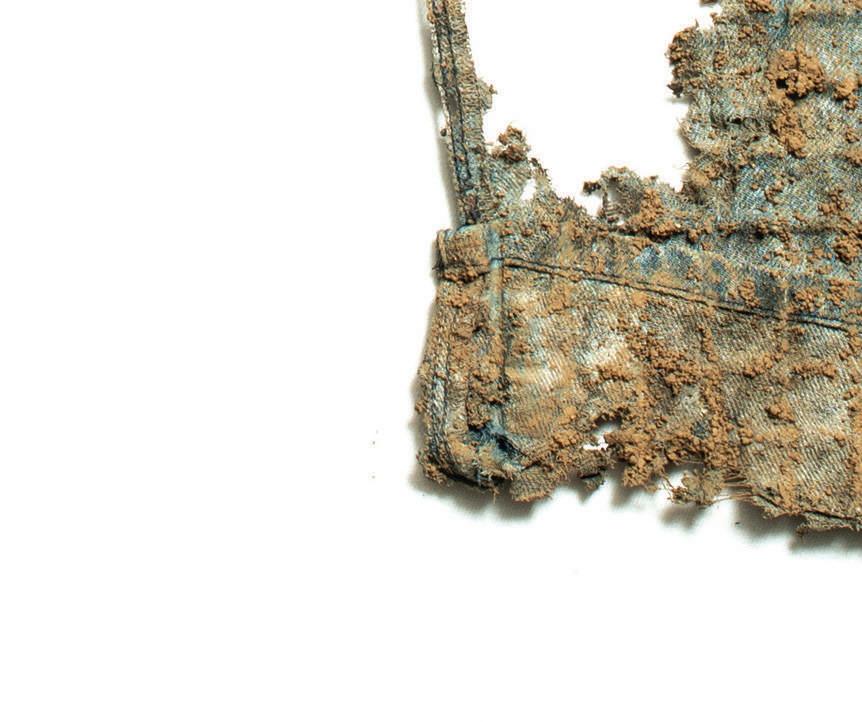
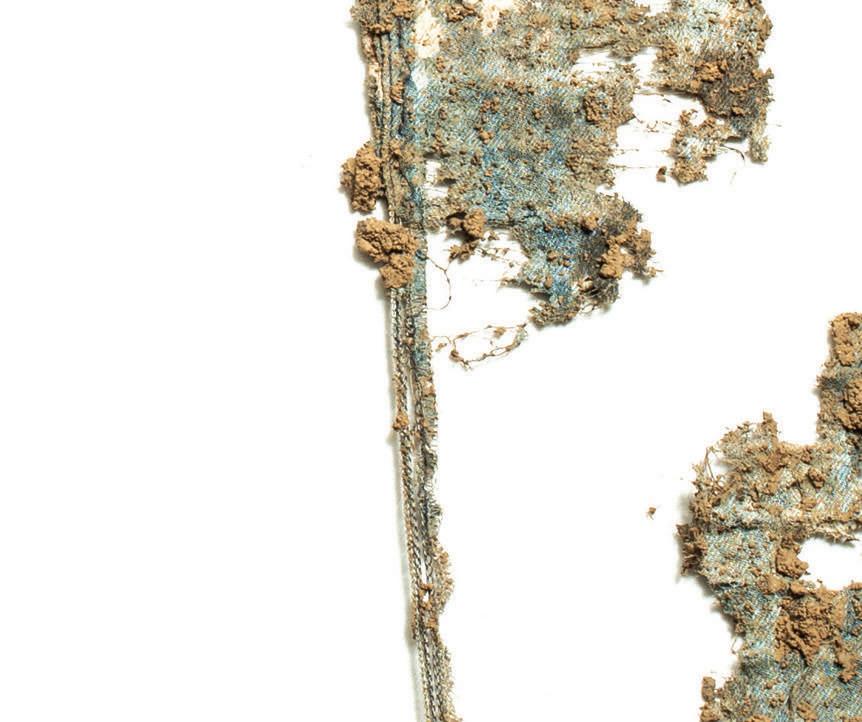


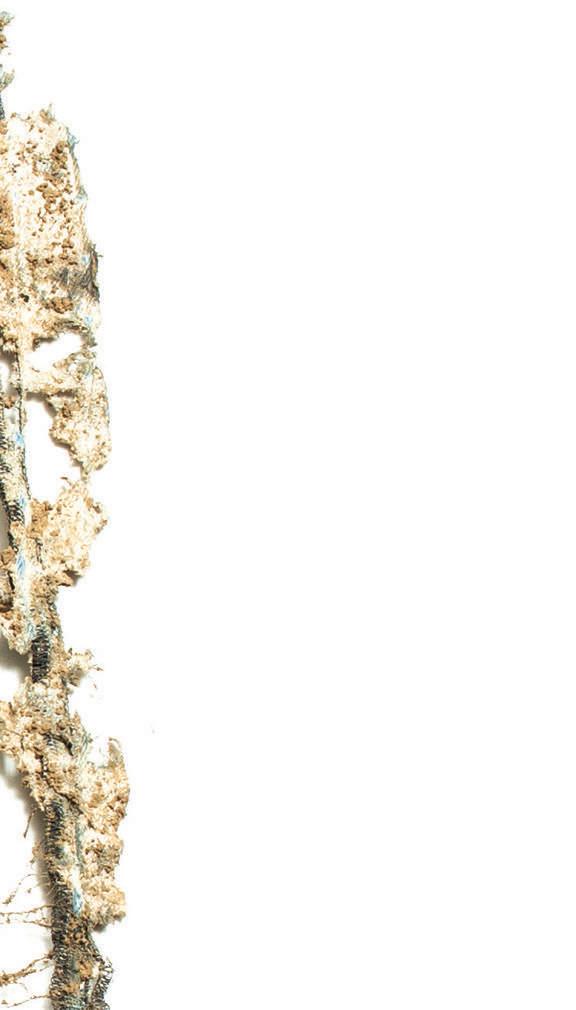


There’s also the fact that regulators everywhere are ramping up their vigilance when it comes to green claims. Last year, New Zealand’s consumer authority told outdoorwear brand Kathmandu to retract a TV spot showing a time-lapse animation of one of its biodegradable down jackets breaking down on a trash heap. Despite the small-print disclaimer that biodegradability would only occur in biologically active landfills without oxygen— and that people would have to ask their city council if such facilities were available—the company’s oversimplification of the jacket’s life cycle risked being misinterpreted by the public.
This isn’t completely Kathmandu’s fault, said Krystle Moody Wood, principal at Materevolve, a sustainable materials consultancy based in California. With people becoming more aware of the impact of their clothing, brands are increasingly keen on showing that their products leave no footprint behind. When it comes to “communicating to consumers and selling a product,” however, there’s “just not enough aligned science and understanding around this issue right now,” she said. It’s for this reason that the Golden State is cracking down on biodegradability claims that aren’t substantiated by robust scientific evidence and can cause consumer confusion. Communication, she said, needs to come from a “place of data” and cross-sector alignment.
At first, Candiani turned to TÜV Austria, which has “OK Biodegradable” and “OK Compostable” protocols for home, soil, marine and industrial settings. The problem was that while the inspection firm could “certify a plastic pen that
biodegrades” it couldn’t do the same for denim that biodegrades, which was a “bummer.” Once again, the manufacturer found itself on its own.
The mill called upon testing lab Innovhub to use the European standard for packaging as a baseline. Coreva fabric, deep-sixed in the ground, disintegrated into fragments less than 2 millimeters in size after three months. In six, it vanished into the soil, where it was nearly 24 percent more effective as fertilizer than a control version without it.
“So basically it’s an invention; we filed an application,” Giuliani said. “It’s a patented technology that is proven to be biodegradable and compostable.”
The manufacturer would later put this to the test by burying a dozen Coreva-infused jeans— some raw, some mid-wash, some heavily treated—in a spot overlooking the Ticino River and then digging them up every month or so. It placed the denim in makeshift graves in March 2021. By January 2022 they were “completely gone.” This was the real-world proof it needed that the technology worked outside of the lab. Candiani is now using Coreva waste to fertilize the regenerative, GMO-free Blue Seed cotton it’s sprouting with the Rodale Institute an hour outside of Los Angeles.
Intertek’s third-party testing lends Calik’s biodegradability claims its heft. Again, because there’s no textile-specific standard, the mill had to make do with ASTM’s test method for determining the biodegradation of plastic materials under anaerobic—that is, oxygenfree—conditions. Another test, based on OECD 208, showed no toxicity issues in the ground.
“We care about such tests, audits and claims for each of our breakthrough technology and approach these processes with transparency,” Ergül said. If there’s no proof that something works, it won’t launch it, let alone talk about it, she added.
For innovations that are successful—its 100 percent recycled denim, for example, or its cottonized hemp—Calik doesn’t play favorites, Ergül said, though she admits that B210 is the biggest breakthrough it’s had to date. The idea is to offer a suite of options for tackling different problems.
“Just as we have stated in our motto, we adopt ‘ever-evolving’ in every field and first surpass ourselves with the innovations we develop every season, and then we launch leading and unique technologies/innovations in the industry,” Ergül said. “For this reason, it is not very possible to promote or to prioritize one over the other.”
And make no mistake, B210 doesn’t make denim less recyclable—any more than synthetic-blended denim is already, anyway. Any treated material, she said, can be considered a “standard” product that can go through regular life-extending channels.
Biodegradability, for Candiani, should also be a final resort to the end-of-life conundrum, not its first recourse. Coreva works “even better” for mechanical recycling, which is still the dominant form of recycling for denim, because it’s thicker and so easier to separate from the cotton, Giuliani said. Only when all possible avenues are exhausted and the fibers are too short or weak to be useful should they return to the soil.
“Otherwise, it would mean that we would encourage people to basically just throw your jeans into your garden or someone else’s garden,” Giuliani said.
Likewise with AG’s Jean of Tomorrow, which tests show can biodegrade in 10 to 12 months, or between three and six in optimal soil composition and temperature. Not only is it “100 percent recyclable,” Rossell said but it’s, in fact, easier to do so because it doesn’t require the laborious removal of metal buttons, rivets and zippers. There’s a “common misunderstanding,” he said, that “biodegradable” means that a product will break down during its useful life. The reality, however, is far from it.
“For all intents and purposes, the Jean of Tomorrow is as hard-wearing and long-lasting as any other denim,” he said. “The difference is that at the end of the life cycle, a biodegradable jean can be broken down by bacteria and organisms into natural elements, whereas traditional jeans leach harmful chemicals.”
This summer, the brand will release another iteration of its initiative centered around recycling old AG jeans into new denim fabric to minimize the use of virgin raw material.
Rossell said that every “exploration” has been a challenge in “so many ways,” but that’s the point. “We can’t make progress without pushing for change and challenging the current standards,” he added.
This is a hierarchy that Moody Wood can get behind. Reselling denim instead of making more new products should be at the top of the circularity pyramid, followed by recycling. What’s interesting about the biodegradability and compostability conversation, however, is designing products with green chemistry that’s safe to reabsorb into the ecosystem, meaning that even in a worst-case scenario where they have nowhere else to go, they won’t be poisoning the land, air or water.
But even that should only be the beginning of the dialogue, she said. The main focus, particularly for a cotton-rich material like denim, should be investing in natural fiber systems.
“What’s more important is thinking about waste feedstocks, thinking about the source of our ingredients, thinking about the overall impact of our materials—not using biodegradability as something to tout to sell [a product],” Moody Wood said.
For now, brands aren’t exactly clamoring for biodegradable denim, though interest is growing. AG aside, Boyish Jeans, Diesel, Frame, Outerknown, Triarchy and Stella McCartney have embraced Coreva. Calik’s B210, despite its newness, is also attracting “attention and demand.”
In 2022, however, less than 1 percent of jeans stocked online across the United States and the United Kingdom were described to feature biodegradable qualities, said Kayla Marci, market analyst at Edited, a retail analytics platform based in New York and London.
Still, Rossell says biodegradability is something that piques consumer curiosity. The Jean of Tomorrow, he noted, has “struck a chord” with its “highly engaged and conscious” customers who want to shop in a more eco-friendly way. But consumer education continues to be one of the biggest hurdles when it comes to sustainability.
“It seems small to talk about rivets and zippers and fibers, but considering jeans are one of the most ubiquitous wardrobe staples with over 2 billion pairs produced each year, the potential impact is massive,” Rossell said. Still, it’s important to press on. Denim, he added, is one of the most consumed garments in the world, and therefore has the biggest potential to “make a difference.”
Giuliani agrees that brands and manufacturers have a responsibility beyond the bottom line. “We believe as long as fashion is made out of raw materials, we need to make sure that those raw materials can go back into the cycle, back to nature at the end of life,” he said. ●
IF THERE’S NO PROOF THAT SOMETHING WORKS, IT WON’T LAUNCH, LET ALONE TALK ABOUT IT.”
—SELEN ERGÜL


NATURAL DYES HAVE THE POTENTIAL TO BECOME PART OF THE DENIM INDUSTRY’S SUSTAINABLE TOOLBOX IF THEY CAN OVERCOME COST-RELATED HURDLES.
 BY ALEX HARRELL
BY ALEX HARRELL
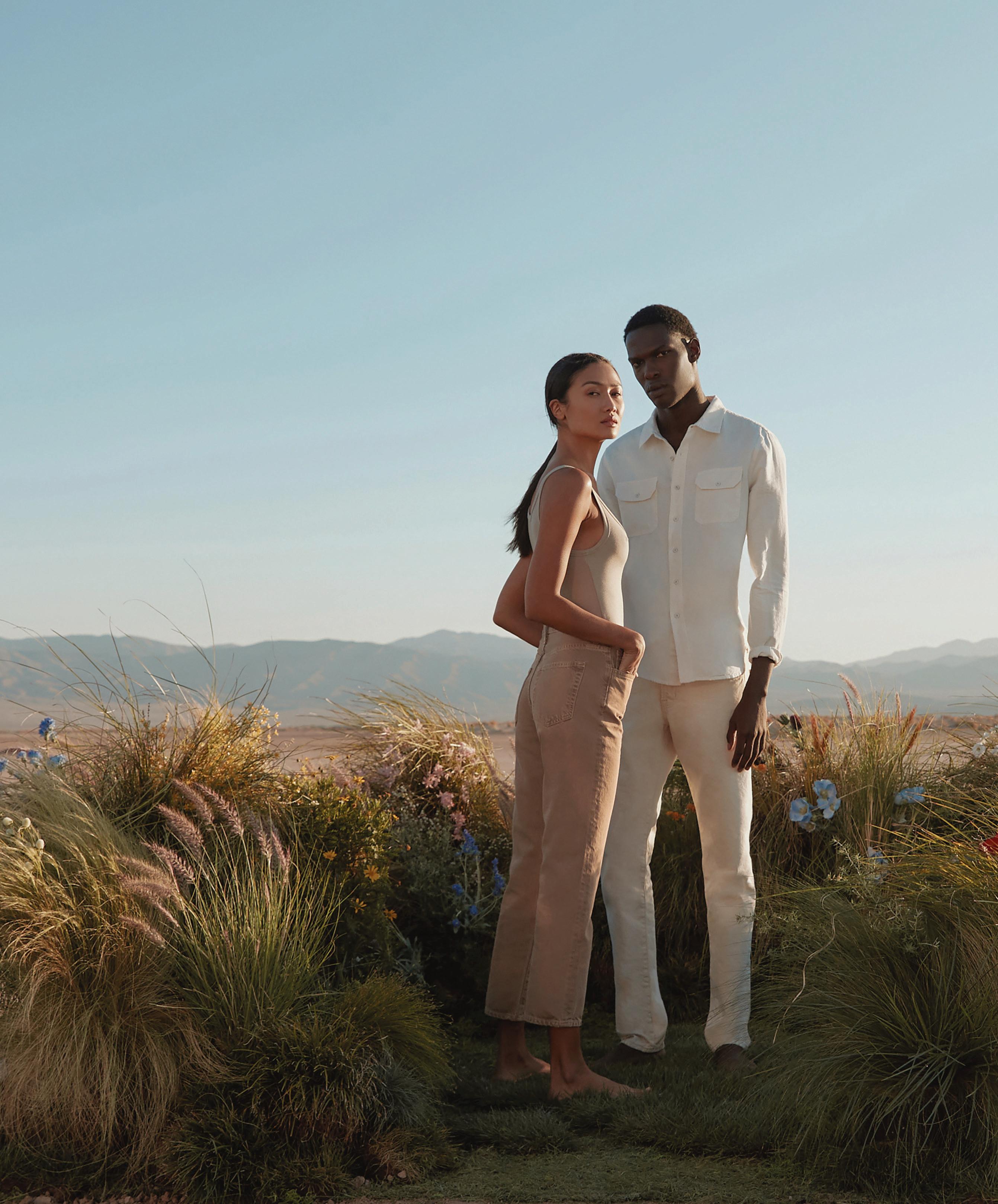 AG’s The Jeans of Tomorrow Capsule
AG’s The Jeans of Tomorrow Capsule
Nature’s influence on denim runs deep. The fiber-obsessed industry is diversifying ingredients, evolving from its cotton-rich past into a future based on recycled and cellulosic blends. Players are investing in regeneratively grown crops and supporting the broader regenerative agriculture movement. Mills are developing biodegradable solutions for jeans at the end of their life and designers continue to cull inspiration from the outdoor market, marrying denim’s inherent durability qualities with gorpcore fashion. The dyes used in denim are also getting a makeover by Mother Nature. The recent color explosion on the runway has coincided with innovations in natural dyes that tend to require less chemicals—a windfall for an industry that is struggling with chemical auditing.
“We all know fashion has a tremendous negative impact on the planet, considering its water use and carbon emissions,” said Didem Aksoy, a shareholder of Denge Kimya, a Turkey-based textile chemical company. “Dyeing fabrics with synthetic dyestuff requires even more water, and wastewater becomes polluted with toxins and heavy metals. This wastewater from synthetic dyes is thrown back into nature, adversely affecting the health of the ecosystem of all living beings. Imagine the harm being done considering the 20 percent of water waste in the world is a direct outcome of fabric dyeing and processing.”
Stony Creek Colors has become an industry darling for its efforts to scale natural indigo. The female-founded company produces the only 100 percent plant-based indigo dye certified by the USDA BioPreferred Program. The indigo is made from 100 percent Indigofera plants
grown by U.S. farmers and processed by Stony Creek Colors at its factory in Tennessee.
“Our vision remains rooted in the belief that with appropriate investments across the indigo value chain—from agronomy and plant genetics to chemistry and engineering—the technical barriers to bringing plant-based indigo to scale could be overcome,” said Sarah Bellos, Stony Creek Colors founder and CEO. “Sustainable and regenerative agriculture presents a huge opportunity to allow textile solutions to go beyond being ‘less bad’ to actually create a positive impact.”
The 10-year-old company is focused on delivering a climate-positive dye that can replace the synthetic petrochemicals. Its natural dye products offer consistent and high-purity indigo that functions almost identically to synthetic indigo in any mill process.

Cone Denim and Levi’s WellThread were early supporters of the indigo. In December 2022, it
closed a second Series B2 funding round of $4.8 million co-led by Levi Strauss & Co. and Lewis & Clark AgriFood, a growth equity firm.
“While we have worked to develop a drop-in replacement for synthetic indigo, we don’t want to perpetuate ‘business as usual,’” Bellos said. “Natural indigo is a premium product, due in part to the externalities that are unaccounted for in synthetic indigo, such as the true cost of petroleum, toxic residues or worker health.”
AG Jeans worked with Stony Creek Colors to create small capsule collections for Spring/Summer 2022 that challenged conventional methods to produce them. The collection was dyed with Stony Creek Colors’ madder paste extract, producing deep reds, terracotta oranges, pale pinks and warm browns, and myrobalan powder, making buttery yellow, sand, warm umber and muted browns, sourced from a women-led farmer’s collective in India.
“Natural dyes have opened the door for us to search for alternative materials outside of synthetic dye,” said Ron Balatbat, AG men’s design director.
The organic color palette of AG’s The Jeans of Tomorrow capsule, launched in April 2021, was derived from nut-based ingredients and bark sourced from a farm collective in India, providing support to the local farmers and their communities. But Balatbat acknowledges that natural dyes have their limitations. “The color range of natural dyes can sometimes be limited based on the ingredients or where you prefer to source raw materials,” he said. “However, it’s an opportunity to get creative and find alternative sources of natural dyes that are still sustainable and eco-friendly.”
Caption TBD
Exploration in natural dyes is having a halo effect on other dye innovations. Balatbat said working with natural dyes has pushed the brand to enter the development phase of alternate dye sources like recycling pigments that AG can reuse in its manufacturing process.
“Our customers are savvy and want to spend their money on quality, and today you can’t talk about quality without including the process, which means you need to innovate,” he continued.
“AG has been at the forefront of sustainability for decades, but now more than ever, we have seen an interest in AG’s manufacturing process, including ozone technology, laser finishing, solar energy, water recycling—it’s natural that our consumer would want to continue to see that story told in new, innovative ways.”
Indeed, the trend for color has allowed denim makers to cast a wider net outside of their indigo roots and natural dyes have become a solution to achieve earthy neutrals and warm sunkissed hues.
Turkey-based mill Marita Denim has found success by adapting ancient-yet-sustainable dyeing methods for industrial scale. Its Terra Denim collection offers fabrics dyed with clay sourced from Turkey.
“Clay minerals that can be interpreted as ‘ancient nanotechnology’ have been part of human existence for thousands of years,” said Faith Kesim, Marita Denim general manager. “They’re biocompatible materials with appealing properties such as non-toxic, UV resistant, antibacterial, skin-friendly.”
Though the clay colors like gray, beige and icy blue align with current fashion trends, Kesim said the collection is based on the idea “from nature, for nature, into nature.”
“Mimicking nature’s operating instructions, Terra Denim is a product of completely sustainable and natural processes,” he said. “Textile dyeing has a direct impact on the environment,” Kesim added. “Brands aware of this fact and who wish to take action see natural dyeing as an opportunity to bring a holistic and radical solution.”
Denge Kimya is using its mass-market knowledge to scale the natural dye industry. After three years of development, the company debuted Terra natural dyes last summer, a collection of eight plant-based dyestuffs from India, with 70 percent coming directly from a local farmer base or food companies.
Aksoy said Denge Kimya is currently working toward a closed-loop operation that supports the local supply chain and is in the process of sourcing from Turkish farmers.
Compared to synthetic dyestuff, Terra’s dyeing and washing steps are shorter and require no neutralization. The process is 40 percent faster and uses 60 percent
less water. Aksoy added that the wastewater from fabric dyeing becomes biodegradable and harmless to life and nature.
Despite the environmental benefits of natural dyes, Aksoy said the challenge to get brands to convert is cost. Factories claim building new infrastructure to process water use is too pricy. The amount of land needed to grow the natural dyes racks up, too. Not to mention the time and labor involved in the method make natural dyes is more expensive.
“When we say natural dyes are more costly, the actual cost—the synthetic dyes, the accumulation of the natural resources— isn’t accounted for,” Aksoy said. “Natural dyes don’t build stress on the environment and on the contrary using waste helps to develop a healthy relationship with the environment.”
Tonello doesn’t see brands taking advantage of what natural dyes have to offer. The Italian garment finishing technology company cites production limits and the manual labor required—plus the high cost of natural powder dyes—as why there hasn’t been a significant shift toward natural dyes within the industry just yet.
With Wake, Tonello has created a patented industrial natural dyeing system that uses only plants and vegetable waste
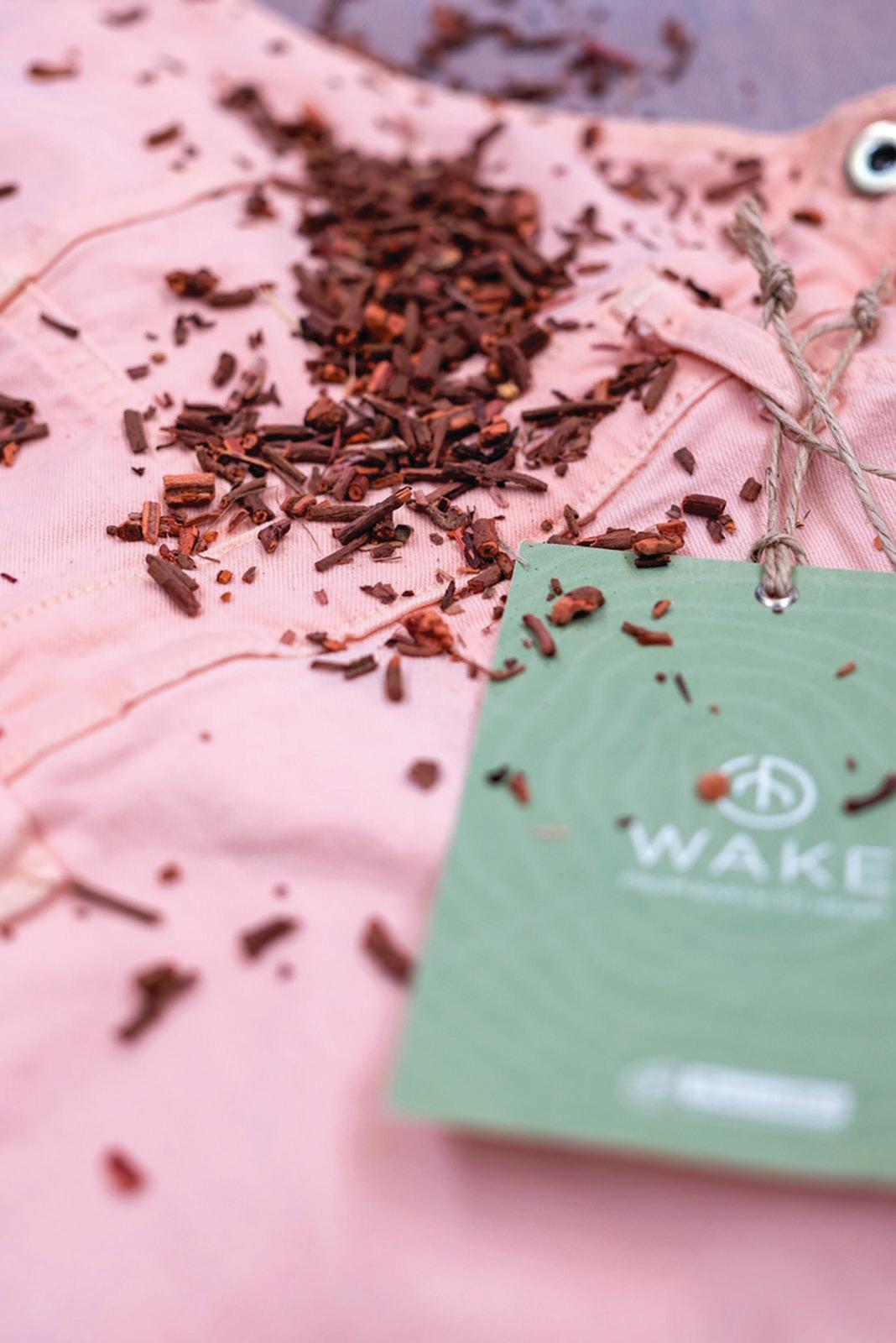
NATURAL DYES HAVE OPENED THE DOOR FOR US TO SEARCH FOR ALTERNATIVE MATERIALS OUTSIDE OF SYNTHETIC DYE.”
—RON BALATBAT, AGTonello Wake
instead classic powder or liquid dyes. “We mostly use food waste such as peels, rinds and shells of fruits and vegetables, berries, plants and inflorescences, in their raw state,” said Alice Tonello, the company’s marketing and R&D director.
The raw and minimally processed organic materials allows for decreased costs, she added.
When creating Wake in 2019, Tonello’s goal was to use materials that are mainly wasted and locally found in nature as well as products that represent the culture and traditions of different communities in the world. Though the seasonality and availability of raw materials poses challenges with color, Tonello views this as an opportunity.
“One of the most exciting things about working with natural dyes is that you can discharge the color through certain finishing technologies, such as ozone,” she said. “Ozone can act either inside the washing machine, for more homogeneous fading or tie-dye effects, or inside our static O-Zone cabinet, for more localized effects.”
Tonello said demand for Wake is increasing, driven by consumers who are “sensitive to making responsible purchases made with natural products that have a reduced impact on the environment.” Small designer brands and larger ones in the luxury segment are showing interest in developing 100 percent natural collections. Using Wake in collaboration with natural fiber fabrics is especially high.
“Demand is primarily driven by a consumer who is increasingly interested in and sensitive to making responsible purchases made with natural products that have a reduced impact on the environment,” Tonello said. “Something that ultimately puts them back in touch with nature.”
“Choosing nature” and finding beauty in a garment that is unique and can change with the wearer is part of the allure of natural dyes, Tonello said. Denim made with natural dyes is “something that ultimately puts them back in touch with nature.” ●

THE BOSSA Colored Cotton Project is “writing a new history in terms of sustainability,” said Özge Özsoy, marketing chief of Bossa.
Through a collaboration with the research institution Akdeniz in Adana, Turkey, the Turkish denim mill has signed a contract with local farmers and supported the production of colored cotton in fields that are close to its factory in Adana.
Naturally colored cotton is a pigmented fiber with the color as a part of the lumen, the innermost part of cotton fiber that’s a hollow cannel running the length of the fiber which contains proteins, color matter and mineral deposited on its walls. The colored strain, Gossypium hirsutum, also known as upland cotton, is crossed with a white linted strain to produce hybrids with qualities such as fiber length, strength and color fastness better than the color parents.
Bossa’s colored cotton is an environmentally friendly,
no-dye product grown using regenerative farming techniques. Drip irrigation methods are used to reduce the water footprint in the cultivation of GMO-free colored cotton. The fiber makes an end-product that’s pure and breathable with a soft and delicate hand feel. Bossa can achieve dark and light brown colors so far and is working with the institute on reds and greens.
Still in early stages, Bossa received its first order from the Chinese company Shanghai Seaphone and is in talks with its customers for future orders. As the market shifts toward sustainable and organic products, the mill predicts that naturally colored cotton will be the next big buzz on the market as it skips one of the most polluting activities— dyeing—of the textile product manufacturing.
Özsoy said this is reinforced “by the fact that conventional
chemical dyes undoubtedly leach into natural ecosystems.” A family of four using a standard washing machine will drain 45,000 liters of laundry waste per year, full of numerous chemical dyes and thousands of microplastics, she said. “Not to mention, these chemical dyes and synthetic fibers also pose safety hazards for garment workers and stifle your body’s largest organ, the skin,” she continued.
Brown cotton inherently is a solution to these problems due to its pure and natural state. The color, called Stay Brown, is durable after washing stages and incorporates Bossa’s aim to reduce water usage as it’s recommended that customers use this fabric as raw or just with rinse wash.
“Colored cotton denim, which uses less water and less chemicals, shows us that fashion and nature can come together for a better future,” Özsoy said ●
THE PAKISTAN ACCORD WILL AFFORD THE INDUSTRY AN EXTRA LAYER OF CREDIBILITY AND ASSURANCE, BUT IT ALSO COMES WITH A NEW SET OF CHALLENGES.
BY JASMIN MALIK CHUAAfter more than 10 years of waiting, Pakistan’s garment and textile workers have a safety agreement to call their own. The so-called Pakistan Accord, the first extension of the International Accord for Health and Safety in the Garment Industry, formerly known as the Accord on Fire and Building Safety in Bangladesh, was a long time coming. The South Asian nation, where 2.2 million workers make garments and another 1.8 million produce textiles, isn’t a stranger to industrial accidents. Seven months before the Rana Plaza multi-story factory came crashing down on the outskirts of Dhaka in Bangladesh, killing 1,134 garment workers and setting in motion the historic agreement that would become the original Accord, fires raced through two factories, racking up their own grim toll.
Flames quickly engulfed Ali Enterprises, a garment manufacturer in the populous city of Karachi, killing more than 250 workers. In the eastern city of Lahore, an inferno at a shoe factory cut short the lives of another 25. Survivors would later describe how locked exits and barred windows prevented their escape. A number tried to save themselves by leaping from the rooftops, sustaining broken bones or worse.
Superficially, the two facilities couldn’t be more different. Weeks before, Ali Enterprises had received a clean bill of health from Italian auditing firm RINA, making it somewhat of a model supplier for KiK, the German retailer that was a key buyer. The shoe factory, on the other hand, was an off-the-books outfit—so much so, in fact, that it has never been given a name. Both, however, could only
be described as death traps, raising questions about safety in an industry so important to Pakistan’s economy.
Rana Plaza, too, had just passed an audit from a reputable firm, though TÜV Rheinland would later say that its lack of structural expertise meant it couldn’t have identified any construction defects. Despite cracks appearing in the foundation of the building that day before the collapse, an engineer hired by its owner had declared it sound. Still, the enormity of the tragedy—and the sheer scale of human suffering— made it difficult to ignore. This was the deadliest industrial disaster, not just in Bangladesh, not in South Asia, but in the history of the world.
Within months, the “mass industrial homicide,” as one union put it, would spur mostly European nameplates like Adidas, H&M Group and Inditex to sign a pact that would put them legally on the hook for conditions at their suppliers. Plans were quickly drafted. “We inspected over 1,000 factories in nine to 10 months,” recalled Veronique Camerer, head of policy and accountability at the International Accord.
In Pakistan, garment workers and their representatives didn’t understand why they were being overlooked. A similar agreement would benefit the industrial zones of Faisalabad, Karachi and Lahore, where “many factories are at risk of fire and other building safety challenges and workers do not have a safe escape route during a fire,” a group of union and labor leaders wrote in 2018.
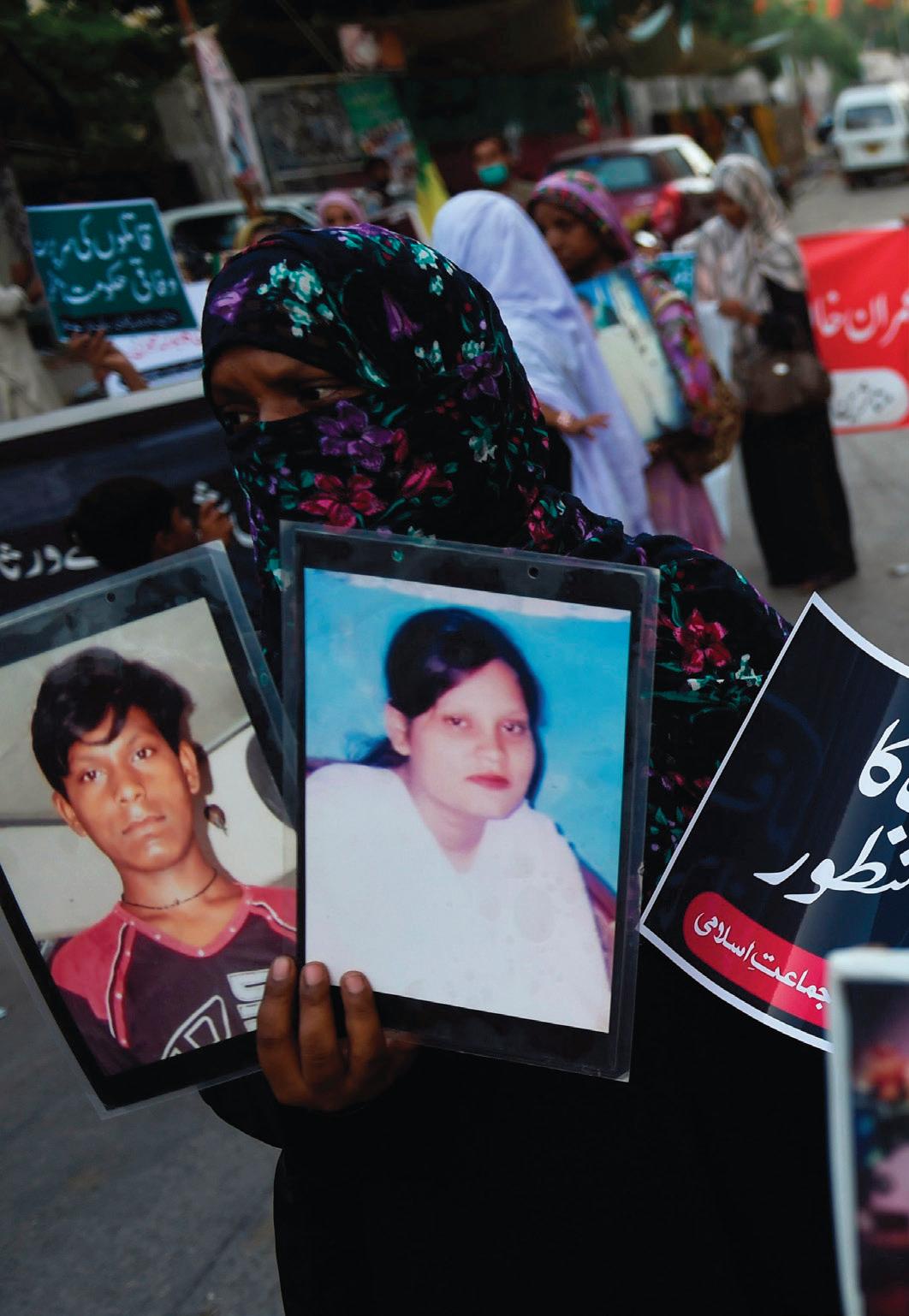
They waited. Then waited some more. In 2021, the rechristened International Accord pledged to onboard at least one other country within two years. The following December, it
announced that this would be Pakistan. Other countries, including China, India, Morocco, Turkey and Vietnam, were in the running, but the Accord’s steering committee decided to prioritize Pakistan because a large number of brand members—110 out of 190—source there. Bangladesh and Pakistan also shared similarities in terms of fire, electrical and structural safety, Camerer said.
As with the original Accord, the Pakistan Accord is already stirring up mixed opinions. Some, chiefly on the manufacturing side, say
its requirements are too burdensome or even unnecessary. Others, predominantly campaigners, want it to go even further. Brands that have signed the Pakistan version—KiK first, followed by Bestseller, C&A, H&M, Inditex, Calvin Klein owner PVH Corp. and Otto Group—are generally sanguine about its prospects. Whatever behind-the-scenes drama that saw the Clean Clothes Campaign (CCC), the garment industry’s largest consortium of labor organizations, accusing them of “strategically” running down the clock on the deal appears to be resolved.
“The Pakistan Accord provides an opportunity both to increase the visibility of the efforts already made by many manufacturers to invest in
evolved into the International Accord, for instance, it extended its purview from fire and building safety alone to general health and safety. It included boilers—a consideration previously missing from the original. It plans to also address issues such as human rights due diligence, a growing liability concern for businesses as mandatory legislation in the European Union and elsewhere heats up.
“It’s really also about the health of workers and things like chemicals and working hours, which is something which of course affects workers’ health,” said Christie Miedema, campaign and outreach coordinator at the Clean Clothes Campaign, a witness signatory of the Accord in all its permutations.
Pakistan’s pact, which will run for an interim of three years, also covers home textile and fabric accessory makers, not just ready-made garment manufacturers. It’s part of the International Accord’s approach to adapting its safety programs to the needs of the location.
“In Pakistan, home textiles is a very big market, and so is the production of fabric, which is not so much the case in Bangladesh,” Camerer said. As the scheme gets off the ground, signatories will also be required to disclose their textile mills. Eventually, she expects all 110 brands with a footprint in the country to sign up, covering 500 to 700 facilities and tens of thousands of workers as various programs get phased in and the nature of the signatories’ links with various entities comes into focus.
Things are very much at the “preparatory” stage, Camerer said. The International Accord is still setting up an office in Karachi, where it will inspect its first batch of 50 factories based on brand relationships and level of risk. As that rolls out, it will proceed to the Punjab region. With its tentpole scheme in place, it will establish safety committee training and worker safety awareness programs, as well as create an independent complaints mechanism. Further down the road, the International Accord will put a more permanent governance structure in place, similar to the Ready-made Sustainability Council in Bangladesh (RSC), that comprises brands, trade unions, industry associations and other stakeholders.
Whereas the urgency in Bangladesh was clear, conditions in Pakistan allowed a more strategic approach, Camerer said. There are half as many facilities, for instance, and therefore fewer workers. Pakistan’s factories are also “not on the same level of remediation” as Bangladesh’s in 2013 because many signatories have adopted lessons from the original initiative and made changes of their own there, she said.
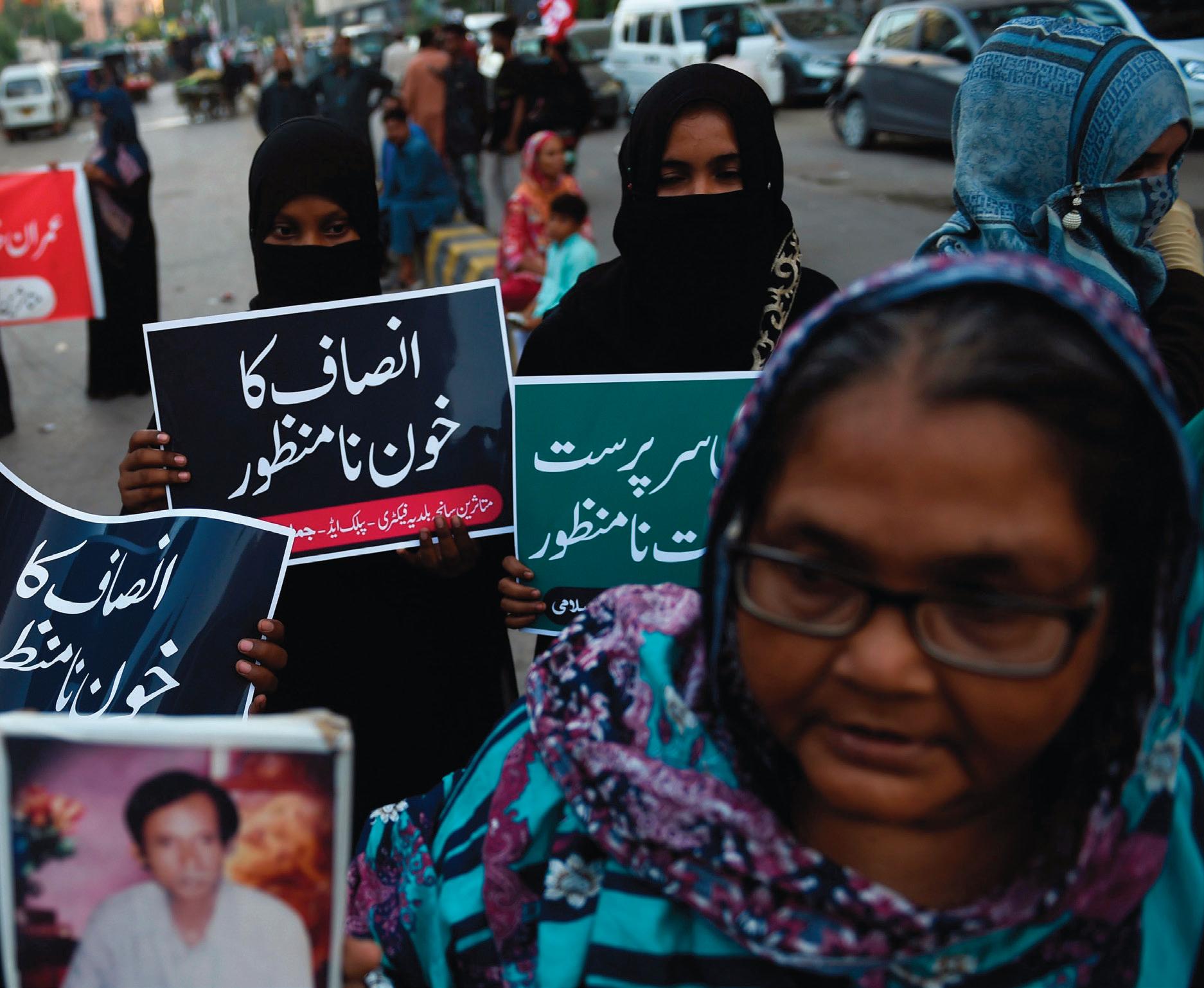
fire and building safety measures in recent years and deepen and expand them throughout Pakistan’s garment and textile sector, making it an increasingly attractive option for buyers across the globe,” they wrote in a joint statement.
To date, 35 brands, all of them participants in the broader International Accord, have signed. PVH Corp. aside, American Eagle Outfitters is the only other North American signatory.
The Pakistan Accord doesn’t simply duplicate Bangladesh’s. When the Bangladesh Accord
“We’re not starting from scratch, since many factories have already embarked on their own remediation journey,” Camerer said. “We’re going to try and adopt a plan that’s realistic and pragmatic based on the situation on the ground, the contingencies that exist there and very much in consultation with the local stakeholders: the trade unions and the industry associations and suppliers.”
Dialogue and communication, Camerer said, are going to be “very, very important.” A spokesperson for PVH Corp., which contracts from 17 factories in Pakistan, one specifically for denim, noted that it’s crucial for the local industry not to view the International Accord’s efforts as a group of outsiders swooping in to foist a set of conditions on an unwilling populace but that a safer industry is in everyone’s interest.
There are other nuances between the two countries that need to be considered. Factories in Bangladesh tend to be built upward with multiple stories. Those in Pakistan, on the other hand, are far more “horizontal,” allowing safety threats to be “controlled or cordoned off,” said Zaki Saleemi, senior vice president at Crescent Bahuman, a vertically integrated denim facility, spread over 72 acres in Lahore, that counts Bestseller and Levi Strauss among its customers.
“So fabric is stored separately, chemicals are stored separately,” he said. “Space gives us an opportunity, I think, to be a lot [safer].”
Cut-and-sew operations, which are labor intensive, are also apt to be cramped and crowded, said Moid Ul Hasan, senior manager of compliance and health, safety and environment at Naveena Denim Mills, an Inditex supplier in Karachi. Textile production is more automated, meaning fewer bodies and an easier evacuation if “God forbid” any accidents happen. It’s Hasan’s opinion that the Pakistan Accord is the
ods at Cardiff University published a survey of nearly 600 garment workers across 64 factories in Faisalabad, Karachi and Lahore. Roughly 85 percent of respondents said they lacked access to properly enclosed exit stairwells in the case of a fire. Another 20 percent said that their workplace didn’t conduct fire drills and that they were unaware of emergency escape routes and exits. Workers at suppliers for brands like Bestseller, H&M Group and Inditex said they witnessed fires and explosions and were exposed to electrical discharge and harmful substances. A gas leak that killed four workers at an H&M Group and Levi’s supplier at the beginning of 2022 might not have happened, the report said, if the facility had a workers’ health and safety committee that operated in tandem with the International Accord’s safety and health complaints mechanism.

Mahmood said that the Pakistan Accord is important for the future of the country’s garment and textile industry—and brands need to understand this. By engaging with them through the
quences does create, however, is a “level playing field,” because everyone has to follow the same standards. This will almost certainly be the case, anyway, with legislation coming out of Europe. Already, Germany’s Supply Chain Due Diligence Act requires qualifying companies to implement a complaint procedure in accordance with the United Nations Guiding Principles. This is something that’s already built-in with the International Accord.
“I think it’s going to become more and more difficult for brands to stay in that voluntary space unless they can develop a very robust responsible supply chain mechanism,” Camerer said. “But the strength of the Accord is that the brands come together and collectively have a responsible supply chain mechanism.”
That’s not to say there aren’t misgivings, particularly in private. Pakistan has “no building safety emergency” because all facilities are required to follow the national building code, said a denim executive who requested anonymity in order to be candid. He said he feared “falsification, fraudulent reporting and blackmailing” that could make the pact more “harmful than beneficial.”
Another denim professional, who also asked not to be named because he was concerned about a backlash, groused that “no formal communication” has been shared with his factory, so “pretty much everything right now is only hearsay.” He pointed to “substantial dissatisfaction” with the Bangladesh Accord, leading to its eventual expulsion and the formation of the RSC, though the Accord says that this was always the long-term goal. “From what we hear, gains to health and safety from the Bangladesh Accord were marginal,” the executive added. “This, juxtaposed against the enormity of the infrastructural revamp costs involved, is a huge hurdle.”
“best thing to happen to worker life.” The Pakistan Accord will also afford the industry an extra layer of credibility and assurance that can only benefit business development, he said.
For Khalid Mahmood, director of the Labour Education Foundation, a workers’ rights group based in Lahore and a CCC partner, the agreement couldn’t come at a more critical time. Enforcement of labor laws, he said, was weakening in Pakistan even before Covid-19 hit. Since the start of the pandemic, things have only deteriorated. Unions, he noted, remain fragmented and ineffective, while corruption, cronyism and a “feudalistic” attitude are rampant among the ruling classes, stymying efforts by employees to bargain collectively.
In August, the CCC and the Wales Institute of Social and Economic Research, Data and Meth-
Caption TBD
scheme, workers might feel more empowered to speak up about issues such as poverty pay, wage theft and workplace harassment, he said. Under its mechanisms, there is a pathway for them to seek legal redress if certain responsibilities aren’t being met. There is no such ability under voluntary schemes. Similarly, in the absence of pressure from the brands on factory owners to improve conditions, the “situation on the ground will not change.”
Over the past decade, only two of the Bangladesh Accord’s signatories have been hauled into arbitration, said Camerer. “Most of the time we only have to show our teeth,” she said. “We don’t have to bite.” What the threat of legal conse-
Proponents of the Bangladesh Accord argue that its impact cannot be discounted. Before the RSC took over, the scheme identified more than 144,000 hazards, including structural defects, compromised fire exits and inadequate alarms, at more than 1,600 factories that collectively employed 2 million workers. Over 90 percent were remediated. Bangladesh’s garment sector today, they say, has never been safer.
“‘Common’ is a horrible word to use for this but there were a lot of factory incidents happening, which is why we were calling for a safety agreement well before Rana Plaza,” Miedema said. “Things are not perfect right now, but they’re definitely a lot better than 10 years ago.”
Still, cost is undeniably a concern, especially for small and medium-sized enterprises that teeter on the knife edge of survival. These are also the types of factories that are less likely to make capital-intensive interventions such as centralized fire systems, Saleemi said. “Even fire doors are very expensive,” he added. Without some kind of financing arrangement, these factories are going to have a “really tough time,” even
without taking into account plummeting orders from the West due to the cost-of-living crisis and an inventory glut. Some manufacturers have seen demand tumble by 20 to 30 percent; others by as much as 70 percent.
For suppliers like Naveena Denim, upgrading equipment is a long-term proposition with a return on investment that may take years to show up. A small firefighting system can cost up to 90 million Pakistani rupees ($346,000), Hasan said.
Camerer admits that the “who pays” question is one of the biggest. As with the original Accord, brand members will be paying into the Pakistan one by contributing a minimum of $2,500 and a maximum of $185,000 apiece per year. Signatories, she said, also have a responsibility to ensure that it’s financially feasible for their suppliers to remediate, though factories can also raise a “finance request” to trigger discussions with Accord and brand representatives to land on a solution. This could include assurances of longer-term orders, expedited payments, soft loans or a combination of all of the above. In Bangladesh, there was a factory remediation fund that lent additional assistance.
“I’m not sure we’ll have that for the Pakistan Accord but we are looking into what kind of financial, opportunities and instruments there are out there to support Pakistan’s suppliers,” Camerer said.
For Niaz Khan, a union leader at the Textile Power Loom and Garment Workers’ Federation, the Pakistan Accord will help workers but to a point. Speaking through a translator, he said that the pact will affect only suppliers from which major brands source. As a result, workers from smaller operations that face the biggest safety risks are left out. “To some extent, safety is being covered in the bigger factories,” he said.
As a health and safety initiative, the International Accord also doesn’t cover wages, which is one of the biggest challenges for the industry. Some 80 percent of Pakistani garment workers don’t even receive the minimum wage of 25,000 Pakistani rupees ($96) per month, Khan said. Meanwhile, costs continue to climb as inflation worsens, causing further distress. Inflation is expected to average 33 percent in the first half of 2023, according to Moody’s analysts.
“Workers were already receiving meager wages and now they have fallen under the poverty line,” Khan said. “Life has become difficult for them.”
Another bone of contention is the brands that have never signed the International Accord and are unlikely to sign the Pakistan one. Organizations like the CCC and Remake have dialed up their pressure on Levi’s, protesting outside its stores in half a dozen countries and putting it on blast on social media. By the denim Goliath’s own account, 57 percent of the Tier 1 factories it assessed and 55 percent of its Tier 2 showed health and safety issues.
“The brand purports their own health and safety program is sufficient in their reticence to engage with the Pakistan Accord and give workers a seat at the table,” said Ayesha Barenblat, founder and CEO of Remake, a fashion advocacy group. “However, Levi’s tells a different story. As a brand that prides itself to be a sustainable leader with a very public commitment to worker well-being and a sizable spread of strategic suppliers in Pakistan, the best way to meet its own public commitments would be to sign onto the single most important effort in the last decade to keep workers safe.”
On Valentine’s Day, the CCC tweeted a Facebook-type status that showed that Levi’s was in a “complicated relationship” with health and safety. According to its publicly available supplier list, Levi’s works with more than 30 units in Pakistan and 27 in Bangladesh. Lee and Wrangler owner Kontoor Brands, another International Accord holdout, sources from more than 41 suppliers in Pakistan and 122 in Bangladesh.
Brands that don’t sign the International Accord but benefit from it because they share facilities with members are essentially “free riding,” said Miedema. Their workers will be safer but it’s no thanks to them.
“We are so vocal about free riding because it means that these brands are not contributing to what’s happening in those factories; they’re not taking responsibility,” she said. “But also— and this is the more important point for us— they’re undermining the collective work that the Accord is doing. The reason that the Accord can be successful is that they can act collectively and provide the pressure and incentive to say, ‘You need to fix this factory now.’ By not being a part of the Accord, they’re undermining that collective leverage.”
Levi’s said that it agrees with the “intent and spirit” of both the International and Pakistan Accords and shares the same goals.
“But these agreements are not the only way to support workers in Bangladesh, Pakistan or anywhere else,” a spokesperson said. “We believe our programs help us go further and give us greater agility to implement new learnings and expand our systems in other countries. Recognizing that there is always room for improvement, we continue to evolve our programs, and when we learn of suppliers with violations or workers who are reporting grievances, we investigate promptly, mandate that our suppliers address any issues that are found and track their progress closely to ensure compliance.”
Before the Pakistan Accord, C&A used the Social Labor & Convergence Program’s methodology and tools, combined with its own inspections, to capture worker information at its 21 factories in Pakistan, 15 of which are denim-related.
“Health and safety of workers is a key aspect in our social well-being program,” a spokesperson said. “The International Accord is an important pillar to achieve our goals. By participating in the International Accord, it is vital that our factories are as safe as they can possibly be. As the International Accord is a global standard in workplace safety, we welcome the expansion of the program to Pakistan.”
The legally binding nature of the Accord, the Belgium and Germany-headquartered retailer said, holds signatories accountable for meeting their commitments. That it’s a team effort, too, is important.
“From past experience, we have seen that brand collaboration is to create impact and drive change in our industry,” the spokesperson added. “Furthermore, a joint approach helps to focus on one industry standard and avoids duplication for suppliers.”
It took a while for Pakistan to get to this point, but other countries are in equal need of a way to protect garment workers. Across the global South, factories that churn out clothes and shoes for the global North continue to burn. In February, a 62-year-old woman died after a fire broke out at several garment facilities in the Indian city of Mumbai. Last December, 38 people, many of them women who stitched cotton tops and pants, died after a facility in central China went down in flames. The month before, a conflagration at a Nike supplier in Vietnam sent 120 employees fleeing for their lives. Though no one was hurt, it was the footwear maker’s second fire in four months.
“We really hope that the next time is not going to take 10 years for the next group of workers,” Miedema said. “Because we know that the program works. ●
WE’RE NOT STARTING FROM SCRATCH, SINCE MANY FACTORIES HAVE ALREADY EMBARKED ON THEIR OWN REMEDIATION JOURNEY.”
—VERONIQUE CAMERER, INTERNATIONAL ACCORD
earthquakes shook Turkey to its core this February, with a series of seismic events across the region, including parts of Syria, causing catastrophic damage to the countries’ communities and infrastructure.

Global news outlets estimated more than 50,000 people were perished during two quakes in early February, which produced thousands of aftershocks over the course of the ensuing weeks. Turkey’s sizable denim sector saw varied impacts, with some mills forced to pull back on operations. Others redirected their resources to helping members of their communities. The global denim industry has also fixed its eyes and energy on Turkey, with leaders across the globe working to raise funds in the wake of the crisis.
Iskur Denim, which has a factory in Kahramanmaraş—the epicenter of the quake—took to Instagram to express condolences to the 25 colleagues who lost their lives in the disaster and their grieving families and communities. “Furthermore, we wish to extend our sincere wishes for a swift
recovery to those who were injured in the incident,” the mill wrote.
Kipas Holdings, which operates Kipas Textiles in Kahramanmaraş also posted a tribute the colleagues and their loved ones who died. In an Instagram post, the company said it working on a treatment project for post-traumatic stress disorder with therapists.
Headquartered in Istanbul, Calik Denim transitioned its integrated production facility in the Eastern city of Malatya to a support center in the days following the earthquakes. While the factory itself did not sustain damage, a mill representative described “great destruction” across the region. The governor’s office reported more than 32,000 buildings across the city were demolished or damaged beyond repair.
Working in concert with Malatya’s mayor’s office, humanitarian organization Turkish Red Crescent, and Turkey Disaster and Management Authority, Calik provided shelter and hot meals for the local community. Calik lost two of its own employees in the earthquakes, a tragedy that “deeply saddened” the company. The group has since developed a system for remaining in contact with its workforce 24 hours a day.
According to the group, global business partners were supportive and understanding of shipment
delays as the factory gradually reopened, returning to full-scale production in early March. “We will continue our support to meet the needs of both our employees and the people of the region,” the spokesperson added. “We believe that we will get through these days in unity and solidarity.”
Meanwhile, Orta Anadolu’s mill in the city of Kayseri skirted damage from the disaster, along with its headquarters in Istanbul. A spokesperson said that the mill continues to monitor the situation closely as more earthquakes have struck in recent weeks, but “production continues as planned, and we do not expect any impact or delays in our operations.”
Slightly removed from the disaster’s reverberations, Orta said it aimed to help others “overcome this unfortunate time as nation” by supporting the efforts of governmental bodies and NGOs. “We also sent urgent needs such as blankets and hygiene products to the area,” and provided hot meals to families who relocated to Kayseri from the affected areas, the spokesperson
said. Orta workers volunteered at the earthquake zone, and the company assigned forklifts and operators to help those in the Kayseri Industrial Zone organize donation shipments.
“This will be an ongoing situation for our country and needs will change going forward,” they added. The company will continue to use its resources to support affected people in different areas, for example, by working with the Kayseri Sports Association on a project that will benefit local children.
Los Angeles market trends consultancy Denim Dudes hosted a luxury denim raffle in late February with the goal of raising funds for earthquake victims. Calling the effort “Denim Donates,” the group worked with 21 brands across the industry to amass a collection of items for the effort, from a chair made with
Stelapop, a material made from denim waste to embroidered, waxcoated jeans from Le Vagabond NY, a hand-dyed and woven Indian cotton rug by Tantuvi, a handmade patchwork teddy bear made with denim scraps from Big Z & Co., and a collection of twisted twill-weave indigo-dyed ropes, made by Buaisou, that were that were a part of an art installation on display at the Centre for Heritage, Arts and
Textile in Hong Kong. Pangaia, Sky High Farm Workwear, Cardo, Xelkom, 3Sixteen, White Weft and others also participated by donating apparel and accessories.
Participants were charged $10 to participate, with the proceeds going to crowdfunding non-profit GlobalGiving, which funds philanthropic projects, including immediate relief for Turkey and Syria. The sale of raffle tickets generated $5,253 for the
organization, with 16 winners chosen in early March.
New York and Amsterdambased denim trade show group Kingpins voiced its support for Turkey and Syria in the days following the earthquakes, offering up resources to the denim community and directives to those who wished to send aid.

In addition to pointing denim insiders to charities and onthe-ground aid groups, founder
Andrew Olah introduced a new initiative dubbed “Community Voices.” The video project allows members of the denim sector to send messages of solidarity and encouragement to those affected.
“One thing we can do is to use our entire connectivity to all of our jeans colleagues throughout the world, and let them be let them all be aware of what all of us can do to help,” Olah said. “We can be one small voice for the Turkish struggle, the human struggle, to get back to some sense of normality.”
The platform’s first outside contributor, Saitex Mills representative Hakan Anuk, said the situation was “very difficult to process” as “the damage is beyond imaginable, and the numbers are going up.” While those figures are sobering, Anuk spoke to “the strength and resilience which Turkish people have shown in the past many times.”
“I don’t believe it will be different this time,” he added. ●
THIS WILL BE AN ONGOING SITUATION FOR OUR COUNTRY AND NEEDS WILL CHANGE GOING FORWARD.”
–ORTADESTROYED BUILDING IN HATAY, TURKEY Photography: Chris McGrath/Getty Images
option without changing the aesthetics/hand feel.
“The main difference for Spinnova from other materials in cotton [blends] is that the drape and look are just like cotton, and it maintains the toughness with the conventional jeans hand,” said Shahriare Mahmood, Ph.D, Spinnova’s chief sustainability officer. “My background in denim helped me explore the greater potential Spinnova has in this particular application,” he said. “Now that we have proof of concept of our Spinnovacotton blend, we are aiming for producing it commercially.”
Jeans can be notoriously hard to fit, and consumer frustration, disappointment and self-loathing can pile up higher than discarded styles on the dressing room floor.
Digital twin tech platform
Fit:Match aims to solve this problem, using its award-winning, patented body scanning solution to match up apparel’s varied cuts and styles with the wide variety of body types. The company currently partners with Fabletics, Macy’s and Savage x Fenty and is turning its sights on denim as the next fit frontier, according to Hillary Littleton, Fit:Match head of marketing.
Fit:Match targets both the instore and online shopper, utilizing “light and depth” sensors built into fitting room walls to provide an accurate 360-degree consumer scan. For at-home scans, the system works with the iPhone’s LiDAR scanner (stores that don’t build out the full system in dressing rooms can utilize an iPhone dock). Addressing privacy concerns, Fit:Match creates a “non-identifiable” customer avatar, with no information stored in the cloud.

As the name attests, Fit:Match matches bodies with denim and other apparel for the best fit, getting smarter as the database of matches grows. “When a brand comes on board with us,
we target their core fit blocks so even as styles change over the seasons, we can scale the system if they’re using the same fit blocks,” Littleton said.
Spinnova, the Finnish sustainable and circular textiles fiber producer that mechanically makes textile fiber out of
wood or waste (i.e., tannery, textile or agricultural waste) without harmful chemistry, quadrupled investments in 2022. The company opened its first Woodspin factory for zero-waste fiber production this February and has set its sights on the denim industry among other woven applications.
Spinnova mechanically refines raw materials pulp and transforms that into microfibrillated cellulose (MFC), a spinning-ready fiber suspension, without harmful chemistry. It can be blended with cotton for a lower-impact denim
When it comes to digital transformation, fashion has been notoriously slow. But Avihay Feld, co-founder and CEO of 3D design solution Browzwear, said the market is “finally ready” to embrace digital design technology—not only to improve workflow efficiencies and boost
sustainability with digital samples, but to enhance design as well.

“It’s all about taking that leap of faith to digital transformation,” he said, advising more traditional fashion companies to take a page from the digital native “tech first, fashion second” playbook (a la Shein or Amazon), then apply their own DNA for fashion authority. “Many digital natives speak the language of tech then learn the fashion later. But fashion brands have an advantage. They already speak fashion— they just need to learn the tech.”
3D design technology also enables smaller runs and faster speed to market, so fashion companies can react quicker and significantly boost the percentage of trend product they can deliver. “You can’t work 50 weeks ahead,” he said. “There’s just too much guesswork, and one has a crystal ball.”
When it comes to denim, Browzwear’s 3D capabilities include everything from digital design and fit to deconstruction, the latter which is connected
right into the laser machines for execution. Fabrics are also tested for behavior—stiffness, drape, shine, material blend percentages, etc.—so input data creates the most accurate digital twin. “Can the market ultimately go to zero physical samples? Yes, but you must have trust.”
The global resale market is projected to be valued at $218 billion in just three years, so why let third-party resellers get the business? Brands can better control the resale process, gain new customers via lower entry price points and refunnel resale profits back into the brand by partnering directly with resale platforms. Resale solution Treet (an eco-conscious wordplay on
tree and treat) currently partners with 75 fashion brands including Shein, with its peer-to-peer selling model.
“We see denim as one of the biggest categories for resale opportunity,” said Jake Disraeli, CEO and founder of Treet, which recently partnered with sustainable denim label Boyish to create the Boyish Consignment Shop. “Not only do jeans get better with age and maintain their value, but consumers are increasingly aware of the environmental impact to create new pairs.”
Treet sellers ship directly to buyers, but Treet reviews image content and product tags before listings can go live. For premium brands where fraud could be an issue, items over $400 may be sent to an authentication center before the buyer receives them.
Treet recently closed a $3.5 million seed round led by First Round Capital. With funding now at $6.4 million, the company is planning enhancements such as a trade-in model for brands with algorithms to determine resale prices, international expansion to Australia and Canada, and investments in team growth.
Knowing what’s really in your denim supply chain—from where inputs originate and their impact to how workers are treated—is no longer just a nice to have. Companies are on the hook for product confiscated at the border via UFLPA regulations over Xinjiang cotton, while conscious customers can cancel a brand over sustainability violations with the click of a finger.
SupplyShift, a technology platform for responsible sourcing, taps into the growing need for visibility and traceability to assess risk, particularly relevant as the denim industry seeks to clean up its act.
“Cotton is a huge issue regarding sustainability, but there are a lot of denim companies that are really concerned about cotton from a human rights perspective as well,” said Jamie Barsimantov, SupplyShift’s chief strategy officer.
SupplyShift lets users track and manage certifications across all suppliers, measure and reduce risk exposure down to the source by tracing raw materials, especially important as companies need visibility beyond Scope 1. “If you have multiple facilities producing the same thing, like denim, it makes it easier to understand and compare greenhouse gas emissions,” he said. “Is it because of electricity? Fuel sources? Production efficiency? The platform gets that granular so you can see all the different angles.” ●

“IT’S ALL ABOUT TAKING THAT LEAP OF FAITH TO DIGITAL TRANSFORMATION.”
—AVIHAY FELD, BROWZWEARSPINNOVA
in Miami can be transferred to Jeanologia-powered global production centers through Orion software facilitating machineto-machine communication and automatically converting a recipe’s parameters from one machine to another with consistent results.
outside the U.K. to bring in some of their retailers’ stocks in an unwashed state and wash them domestically.
SMALL BRANDS in the Americas now have greater access to Jeanologia’s technology and expertise in sustainable finishing. The Spanish company opened its first hub in the U.S. in Miami’s colorful Wynwood neighborhood.
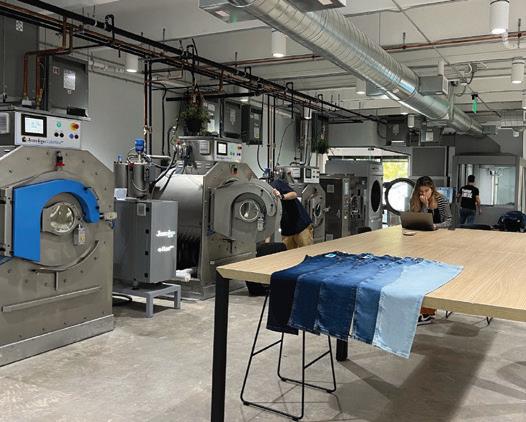
“With Miami, we feel at home,” said Roberto Muñoz, Americas division director for Jeanologia, adding that many of the Valencia-based company’s customers from Mexico, Colombia, Argentina and Brazil maintain offices in the Florida city. “Miami is very close to our mentality in Spain.”
Though Jeanologia has hubs in Bangladesh, Hong Kong, Brazil and Mexico, securing a stateside footprint allows the company to become a bigger player in American fashion’s nearshoring efforts. Muñoz said the company estimates that 10 percent of apparel production will return to the U.S. in the next five years while another 30 percent will be close to the market, for instance in Mexico, Central America, Colombia and Peru.
The Miami hub unites all of the technology, hardware and software—laser, e-Flow, G2 Ozone and more—that designers need to sustainably develop their next collection or refresh excess inventory on domestic turf.
“Now designers can create their own product in a digital and sustainable way from lab to bulk,” Muñoz said. The product recipes they develop
The hubs are a win-win for brands, manufacturers and Jeanologia. About 90 percent of its business comes from selling technology to manufacturing companies, with more than 4,000 of its machines now in 70 countries and counting. The hubs are Jeanologia’s way of feeding business into this network, Muñoz said. Despite countries reopening their borders, covid curtailed overseas travel and, for various reasons, many brands have not returned to their prepandemic routines of developing products on site with their manufacturers.
“People don’t want to travel anymore. We are trying to make a bridge between the brands and the manufacturers,” he said.
The hubs also support Jeanologia’s ambition to democratize sustainable technologies. While companies like Levi Strauss & Co., Kontoor Brands and Fast Retailing have their own Jeanologia-powered innovation centers, smaller brands are at a disadvantage.
Muñoz said the company aims to serve as both a consultant (powered by Jeanologia’s “brainbox” team of experts) to develop products for businesses without their own engineering centers, and as a workshop to train designers on using the technologies.
“It’s our way to help the planet—to give access to our technologies and to develop products in a sustainable way,” he said. ●
A FIRST -of-its-kind denim finishing hub is coming to the U.K. later this year to support denim brands and retailers. The brainchild of industry veteran Salli Deighton, LaundRe will provide companies with easy access to technologies and services that would otherwise require a passport and a 12-week lead time.

“It’s come out of a need,” Deighton said about the new venture. “I got loads of phone calls from everybody asking me where they could reprocess pieces, especially after covid.”
A short tube ride from their London headquarters will soon be Deighton’s response. Located in Canning Town in East London, the 4,500-square-foot facility will be home to a suite of sustainable finishing machinery including laser and ozone. There, LaundRe can take back stocks that have sat in warehouses for seasons, if not years, and refresh them with trending finishes and treatments.
Volume is not LaundRe’s endgame. Deighton said the gap for laundry in the U.K. is for orders that are less than 300 pieces. The idea is if the product sells for a brand, LaundRe can share all the information straight back with the big suppliers. “Retailers are struggling, and they can’t get small runs and they can’t get anything reprocessed in their warehouses. So that’s what we’re trying to do,” she said.
The company is also working toward nearshoring and is having conversations with manufacturers
“We’re trying to de-risk some of the business overseas, because when covid hit everybody pulled the plug on Bangladesh in the U.K. very badly. And a lot of the factories got hurt, but by working with them and if we can trial things to market, we can remove some of that risk. It means buyers could buy a little bit better and plan better,” she said.
Though 70 million pairs of jeans are sold in the U.K. each year, Deighton said not even one is finished or reprocessed onshore. LaundRe’s goal is to “add value” to one percent of the 70 million by the end of 2027. “It’s tiny. We’re very small in the big picture,” she said. “We still know that the big volume market is so important, but we’re going to be a little hub and a link between the big guys and the U.K. buyers.”
Brands are committed to LaundRe with several signing letters of intent. River Island has given a provisional order of 5,000 units a month. Next has also placed orders.
Casting a wider net beyond denim will bring more opportunities. “I feel that’s what’s giving us a bit of a safety net because even though, at the moment, denim is off-trend in the U.K. this is a very flexible business model,” Deighton said. LaundRe has already done trials with T-shirts and non-denims where they’ve garment dyed it, lasered it and processed it. It can also clean and sterilize garments for brands’ elevated vintage programs.
“We can switch things around to something else quickly,” she said. “Who knows where it will go? It feels like we’re about to go down a very big rabbit hole and see where this technology will take us.” ●





SUSTAINABILITY SUMMIT ROAD TO 2030: PROMISES VS. PROGRESS
April 25 | NYC
This full-day program will examine the disparity between ambitions and action, exploring why 80 percent of companies in a recent Sourcing Journal poll stated they had defined sustainability targets, but only 20 percent have any measuring tools in place.
ANNUAL GLOBAL OUTLOOK EVENT
June 15 | Virtual
Sourcing Journal’s Global Outlook Event takes a world view at the ever-evolving landscape. From shipping and logistics to consumer sentiment and outlook, this event shrinks the globe into a digestible understanding.


SJ FALL SUMMIT
November 2 | NYC
This annual Super Bowl of Sourcing, held inperson in New York, is the unrivaled meeting place for our community. Covering the full spectrum of our industry, the full day of speakers and panels o ers a 360-degree view of the current landscape and peers ahead for insight into what’s coming next.





WEBINARS


DIVERSIFICATION IN DENIM SOURCING
April
MINIMIZING COTTON’S WATER IMPACT
May
THE FUTURE OF FIT TECH

June
LEARN MORE & REGISTER FOR EVENTS
ET: Prior to launching Frame, Jens [Grede] and I founded Saturday Group, one of the leading global fashion and beauty marketing groups that served some of the world’s most famous brands such as Louis Vuitton, Moncler, and H&M. I also served as editor-in-chief of Man About Town and founded Industrie Magazine. Through my previous work experience I was able to network with a community of models who become close friends and brand supporters of Frame when the collection launched in 2012.
As someone who is involved in many projects outside of the brand, I’m fortunate to engage with talent as they are emerging and love exploring partnerships with the next generation in addition to the establishment, such as Claudia Schiffer, with whom we recently collaborated.
How does Frame balance traditional campaign photography with the demand for fresh content on social media?
ET: Our seasonal campaigns are consistent and true to Frame’s DNA. They’re timeless and relevant to the brand, allowing these images to feel fresh long after they’re originally shot. It’s always about the product.
Why is denim a good subject for a book?
A PICTURE tells a thousand words and in the case of Frame, can reveal an evolution of a brand. The Los Angeles-based label has gone from being known for its “Le Skinny de Jeanne” to becoming a luxury lifestyle brand that dresses some of the world’s chicest women.
To mark its 10th anniversary, Frame released “Women in Frame,” a photobook that chronicles a decade of campaign photography by Erik Torstensson, Frame co-founder and creative director. The collection of on- and off-set images has been captured since the brand’s inception and acts as a love letter to the talent before his camera, the people behind the brand, and every woman who wears the brand.
It includes images of Natasha Poly, Karlie Kloss, Sasha Pivovarova and Claudia Schiffer and more.
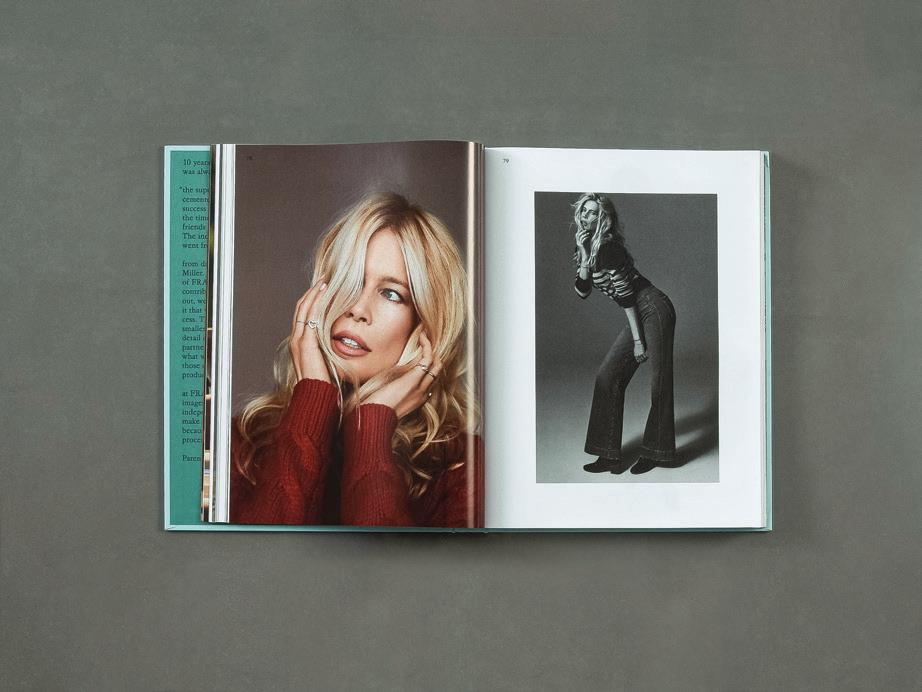
“Ten years of women in Frame doesn’t happen by chance, it
makes sense,” Torstensson said. “Not only because it’s been 10 years since the inception of the brand, but because Frame was always intentionally designed for women we know.”
Rivet caught up with Torstensson to find out more about the special connection between Frame and the women he captures on film.
What qualities do you look for in Frame’s campaign stars?
Erik Torstensson: Someone that embodies the Frame woman: a modern woman, someone who personifies an understated confidence with a timeless wardrobe.
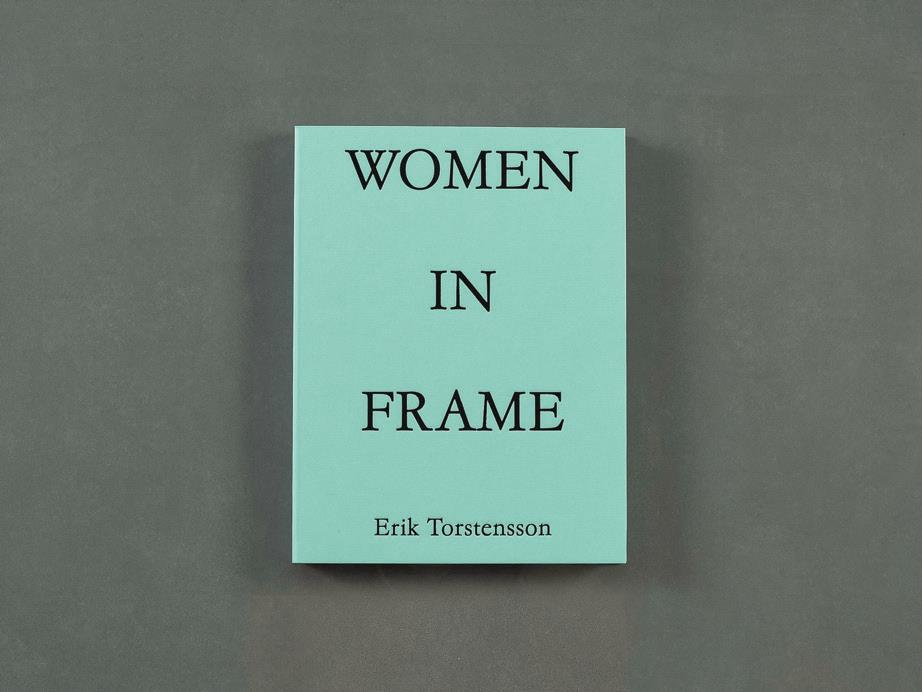
Frame has worked with a who’s who list of models. What roles have the women and their campaigns played in building Frame into the brand it is today?

In 2013, we collaborated on a capsule collection of longerinseam jeans with Karlie Kloss for those who are a little taller and were at the time uncatered for. Shortly thereafter, Frame was nicknamed the supermodel brand. Icons including Imaan Hamman and Cara Delevingne have continued to support the brand as it’s grown over the past ten years and have helped Frame establish a cult following.


ET: Being Frame’s original product, denim is at the core of the brand, and whether you are a fanatic or someone who just loves a good pair of jeans I think there has always been a fascination with the creative from the denim industry. Some of fashion’s most iconic imagery has come from denim campaigns from previous eras. It’s aspirational but relatable at the same time. This book serves as a love letter to the past ten years of Frame and a thank you to everyone who has been a part of our journey. ●
THESE IMAGES ARE A FEW EXAMPLES OF THE ICONIC, TIMELESS COLLECTIONS THAT REPRESENT A PIVOTAL TIME IN FRAME’S HISTORY WITH WOMEN WHO HAVE SUPPORTED THE BRAND SINCE DAY ONE, LIKE IMAAN HAMMAM AND CLAUDIA SCHIFFER.”

Informa Markets Fashion in partnership with global forecasting agency Fashion Snoops presents, The Fashion Tech Series, a multi-part series that examines the latest technological advancements within key areas of the fashion vertical and how they are shaping a new era in our industry.

From artificial intelligence to Web3, learn how these new opportunities are helping businesses optimize their operations, increase consumer engagement, and meet their future customers wherever they may be.

EXPLORE THE SERIES:
Supply
PT/1pm
ET New Age of Design

13 at 1 am PT/1pm






On-Demand


ET



LYCRA® ADAPTIV fiber, our revolutionary and patent-pending fiber, adapts to your consumer, their needs and lifestyle with its unique chemistry.


THE FIBER THAT FITS
LYCRA ® is a trademark of The LYCRA Company.
